Once every few years, each major automaker unveils a futuristic concept car that either previews an upcoming design language or technology, or it simply showcases the brand's ability to build amazing things. Infiniti is no stranger to this trend with the EMERG-E and Vision GT concepts, but it has taken a different approach for the 2017 Pebble Beach Concours d'Elegance. Instead of looking into the future, Infiniti took inspiration from the distant past for its latest concept car. It's called the Prototype 9, and it's a tribute to pre-World War II single-seater race cars.
Inspired by vehicles that dominated European motorsport in the 1930s, the Prototype 9 is also a tribute to the early days of Japanese racing and the country's first race track, Tamagawa Speedway. And unlike its ancestors, which had large V-8, V-12, and even V-16 engines, the Prototype 9 is powered by a next-generation all-electric drivetrain. So, in essence, it combines a vintage design with modern technology, which is what a good concept car is supposed to showcase. Unfortunately, this vehicle isn't slated to go into production, so don't get your hopes up over being able to buy a track-ready single-seater anytime soon.
Updated 08/21/2017: We added a series of new images takes during the car's official presentation at the 2017 Monterey Car Week.
Continue reading to learn more about the Infiniti Prototype 9.
2017 Infiniti Prototype 9
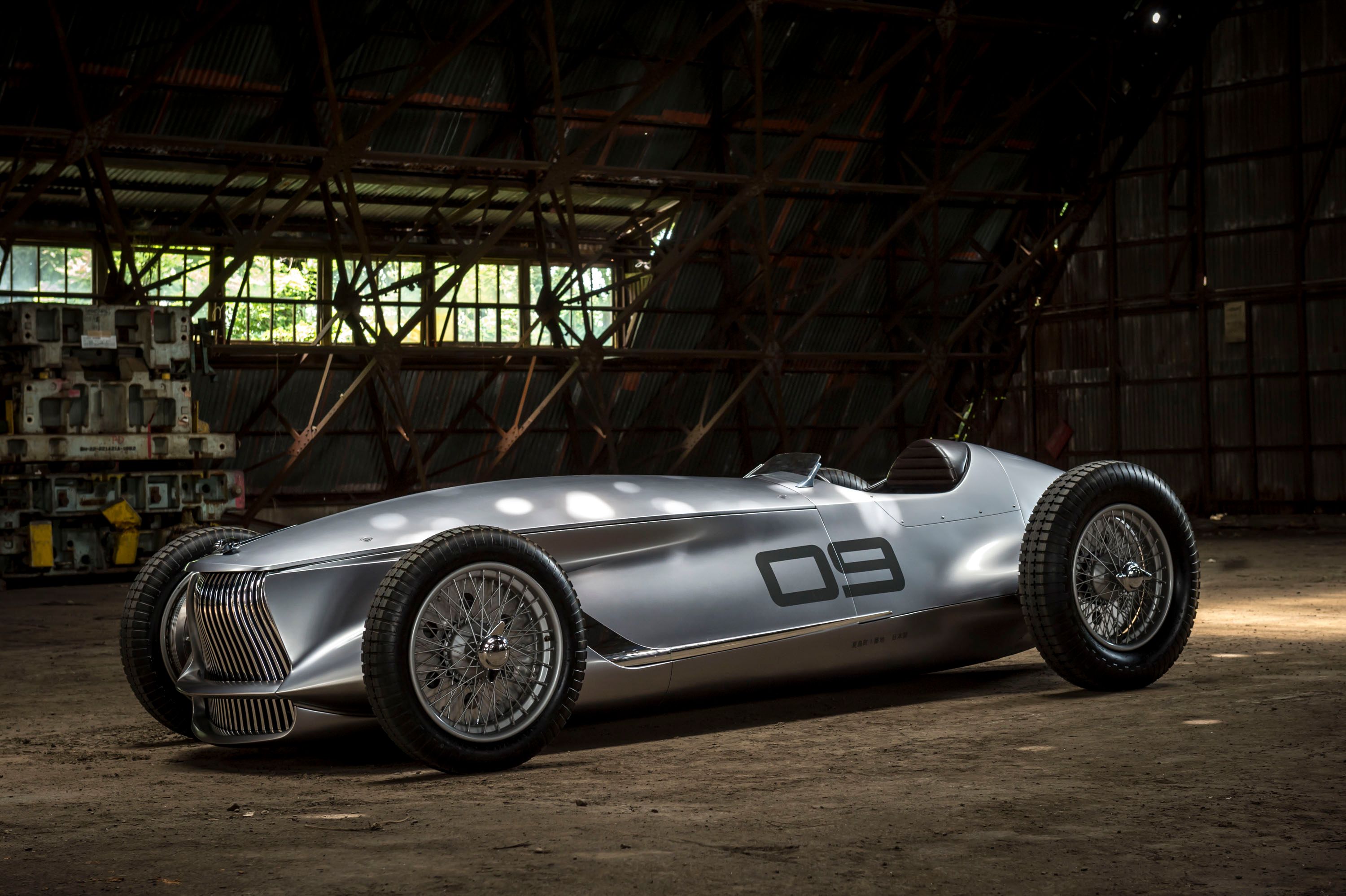

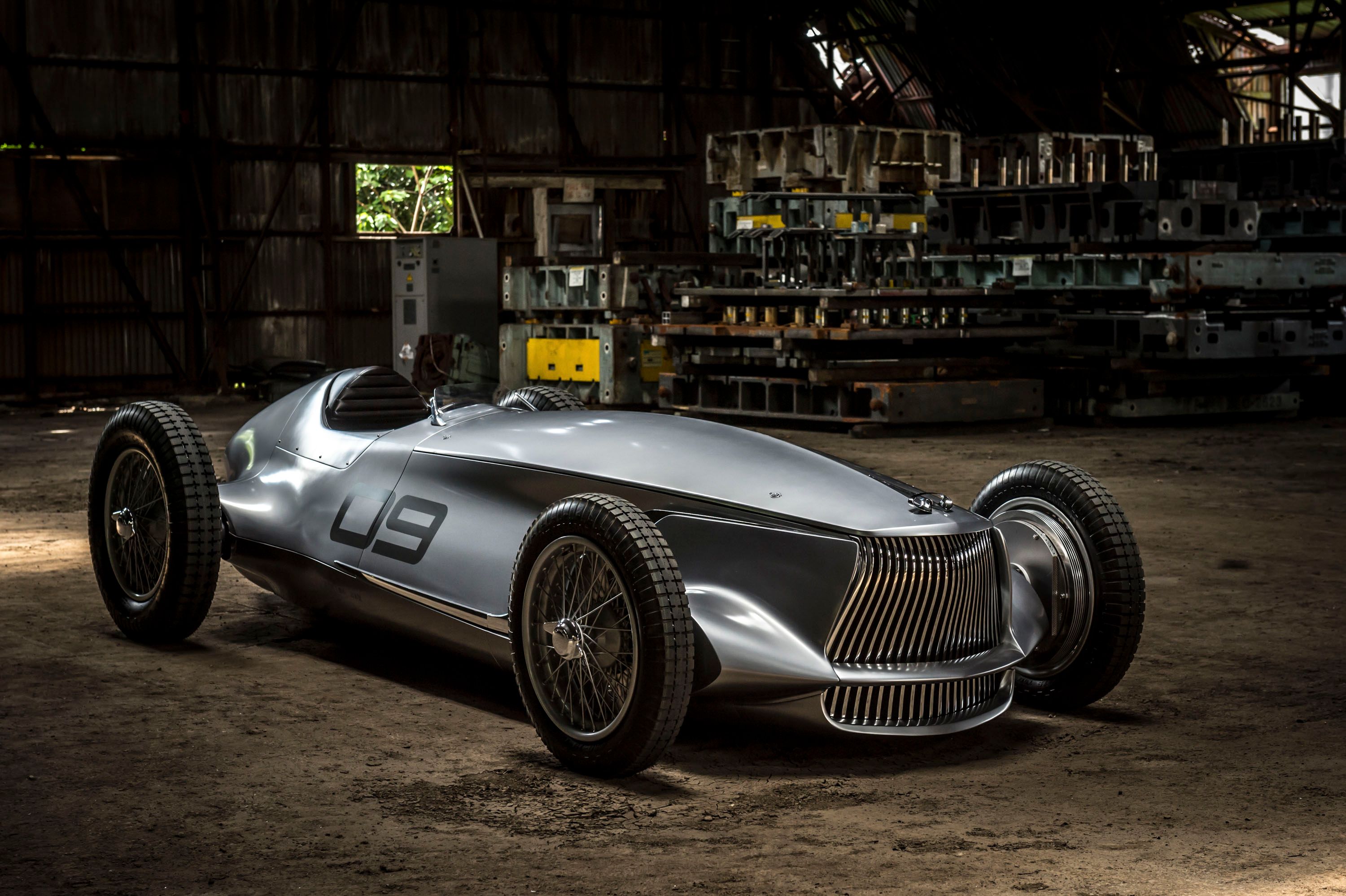
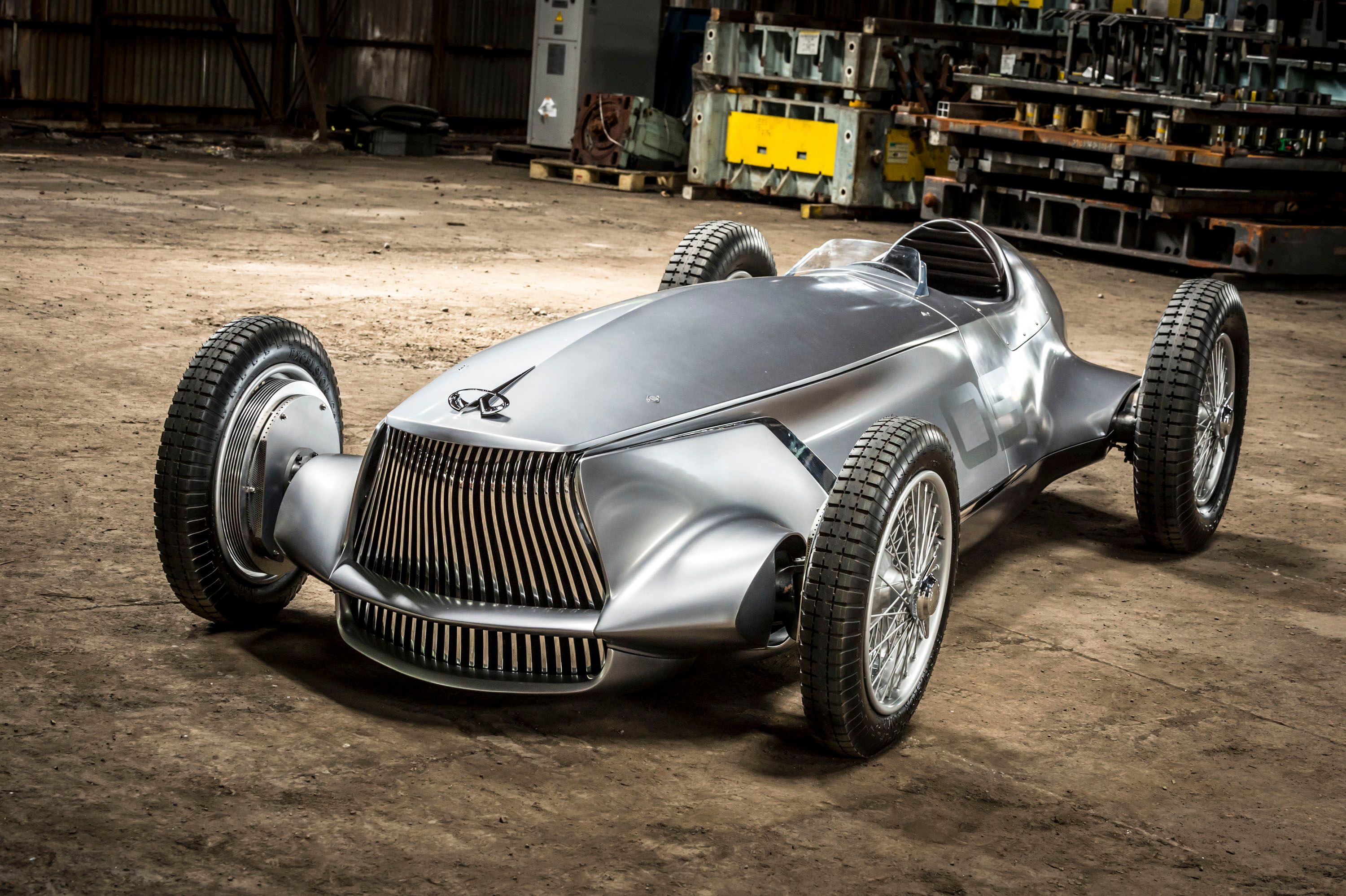
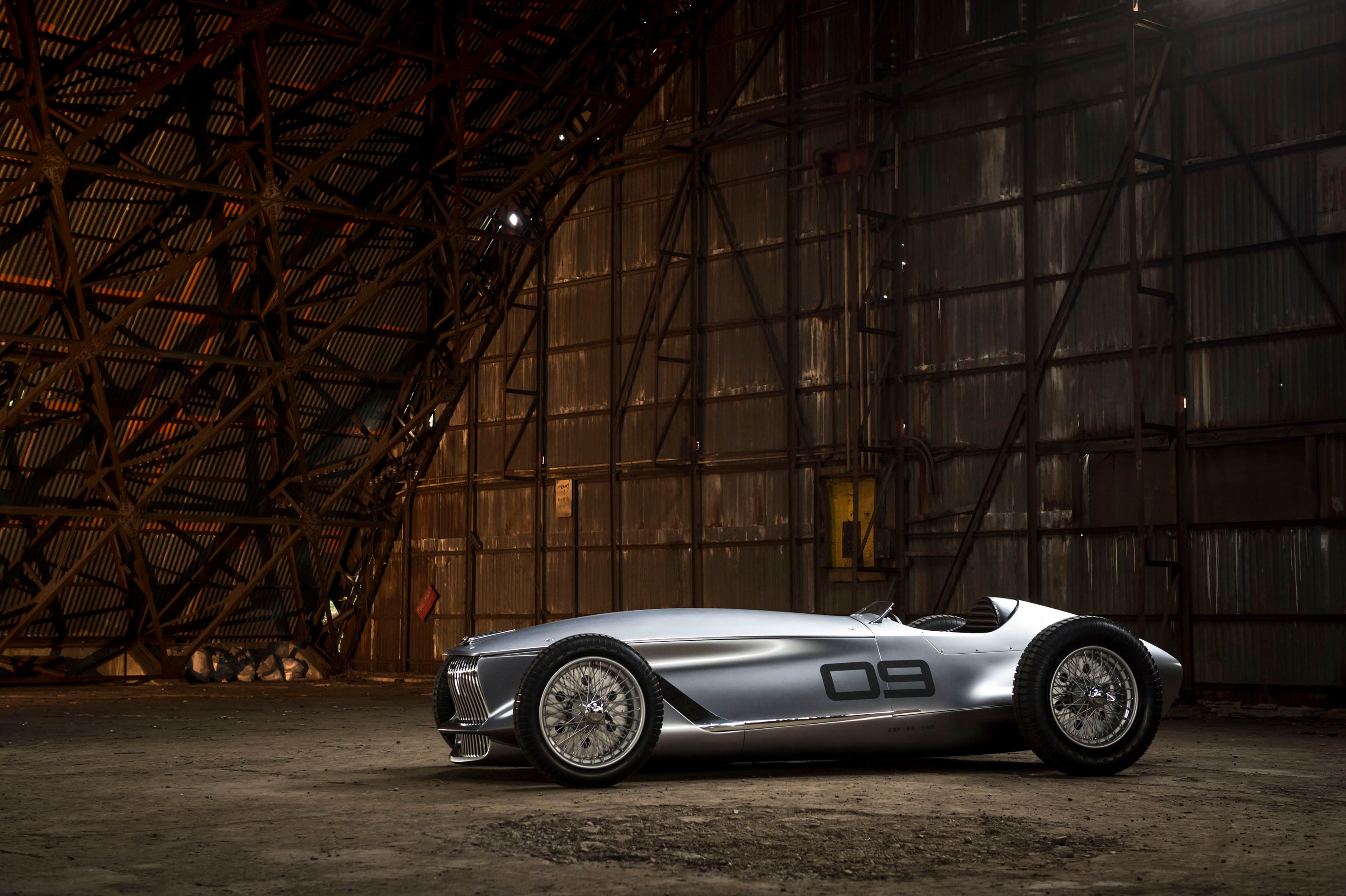
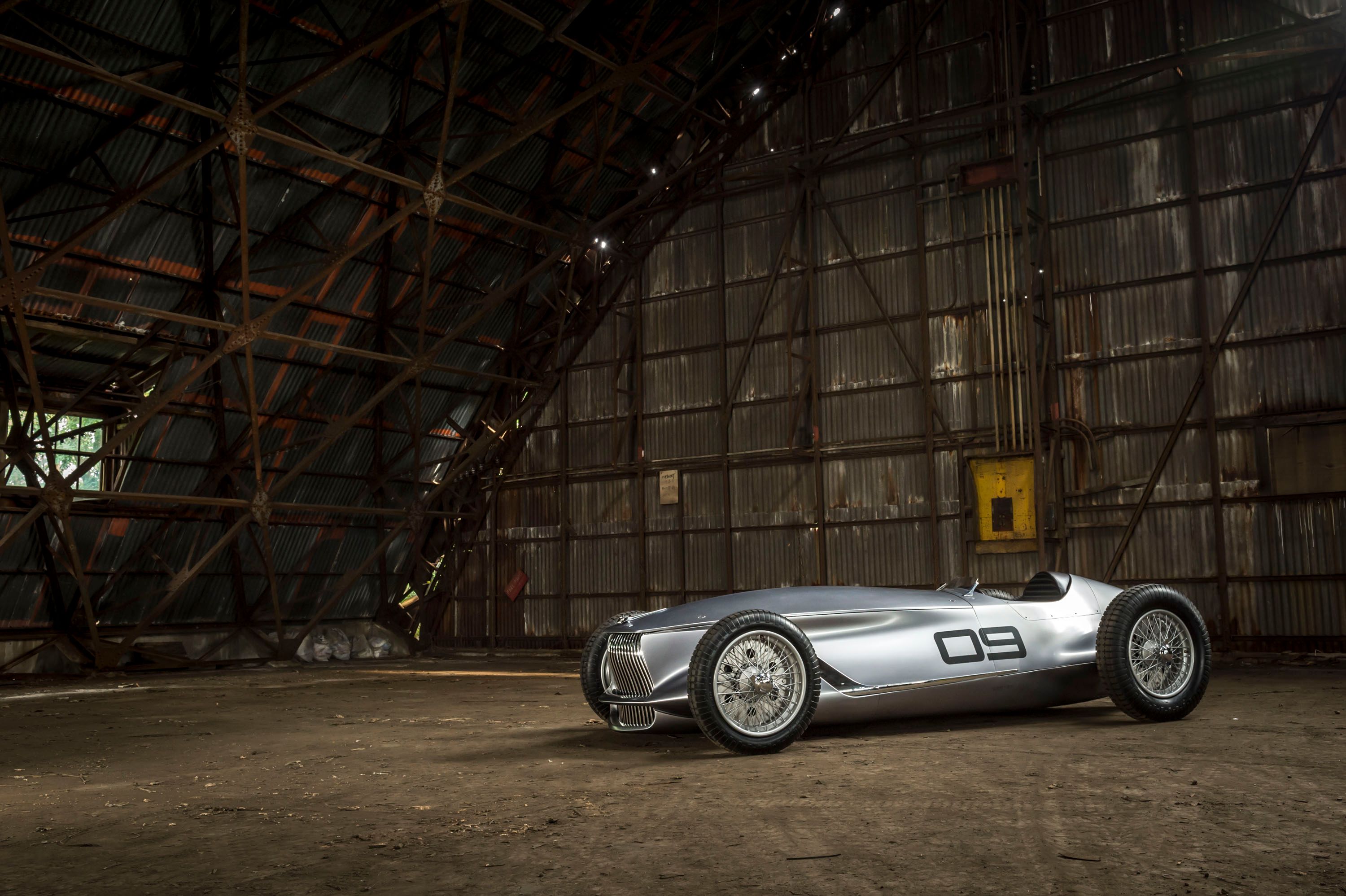
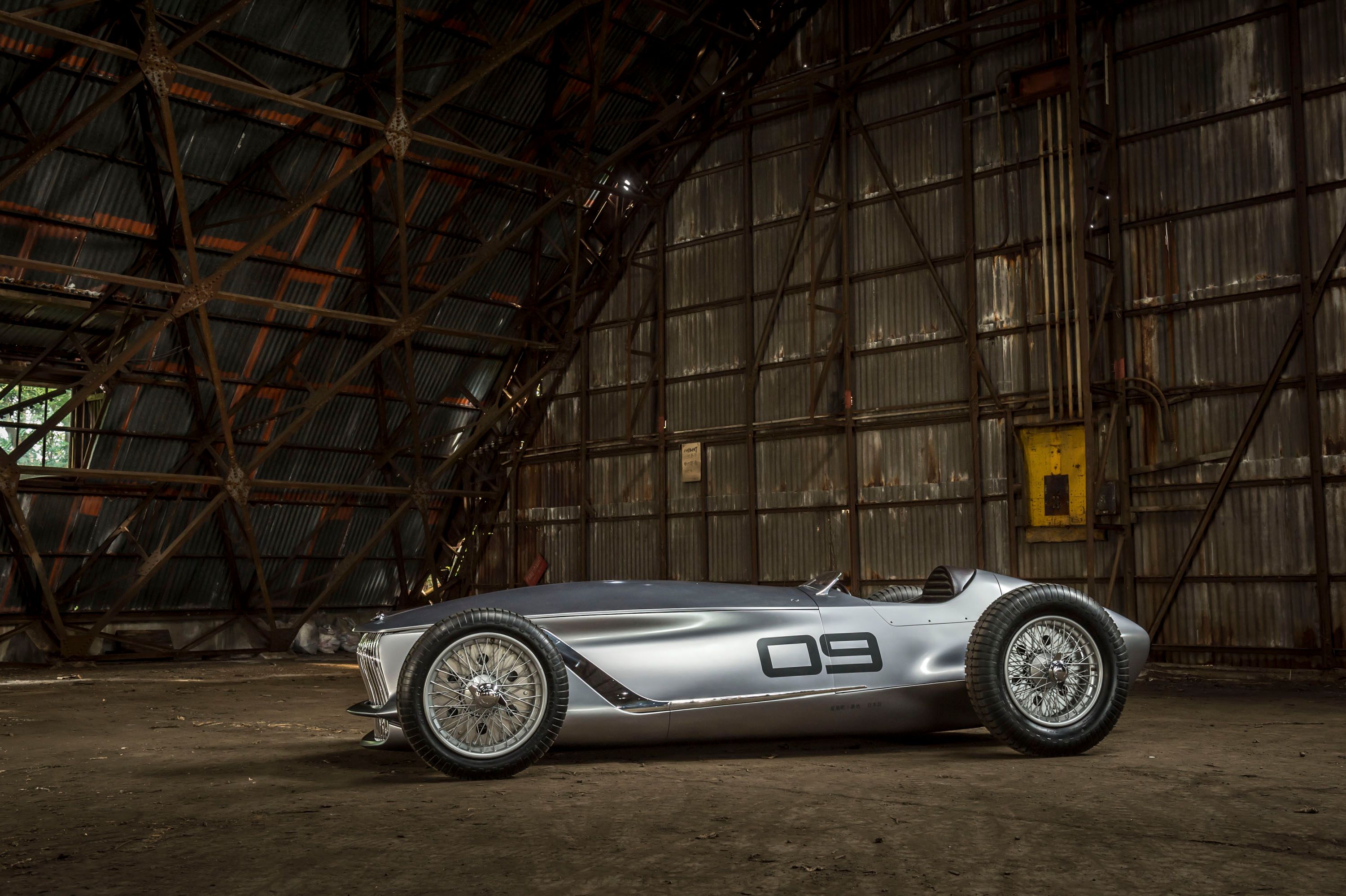
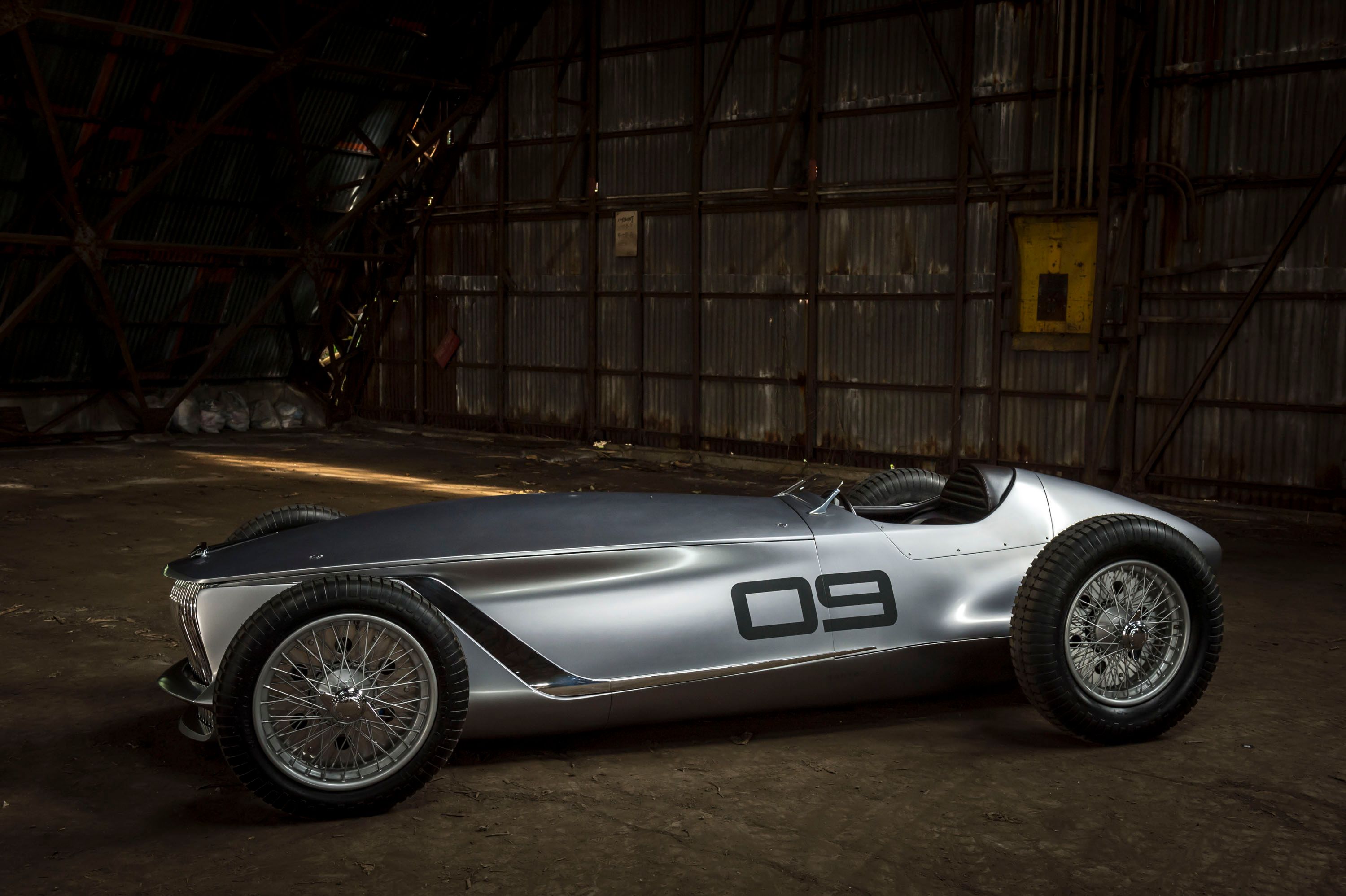
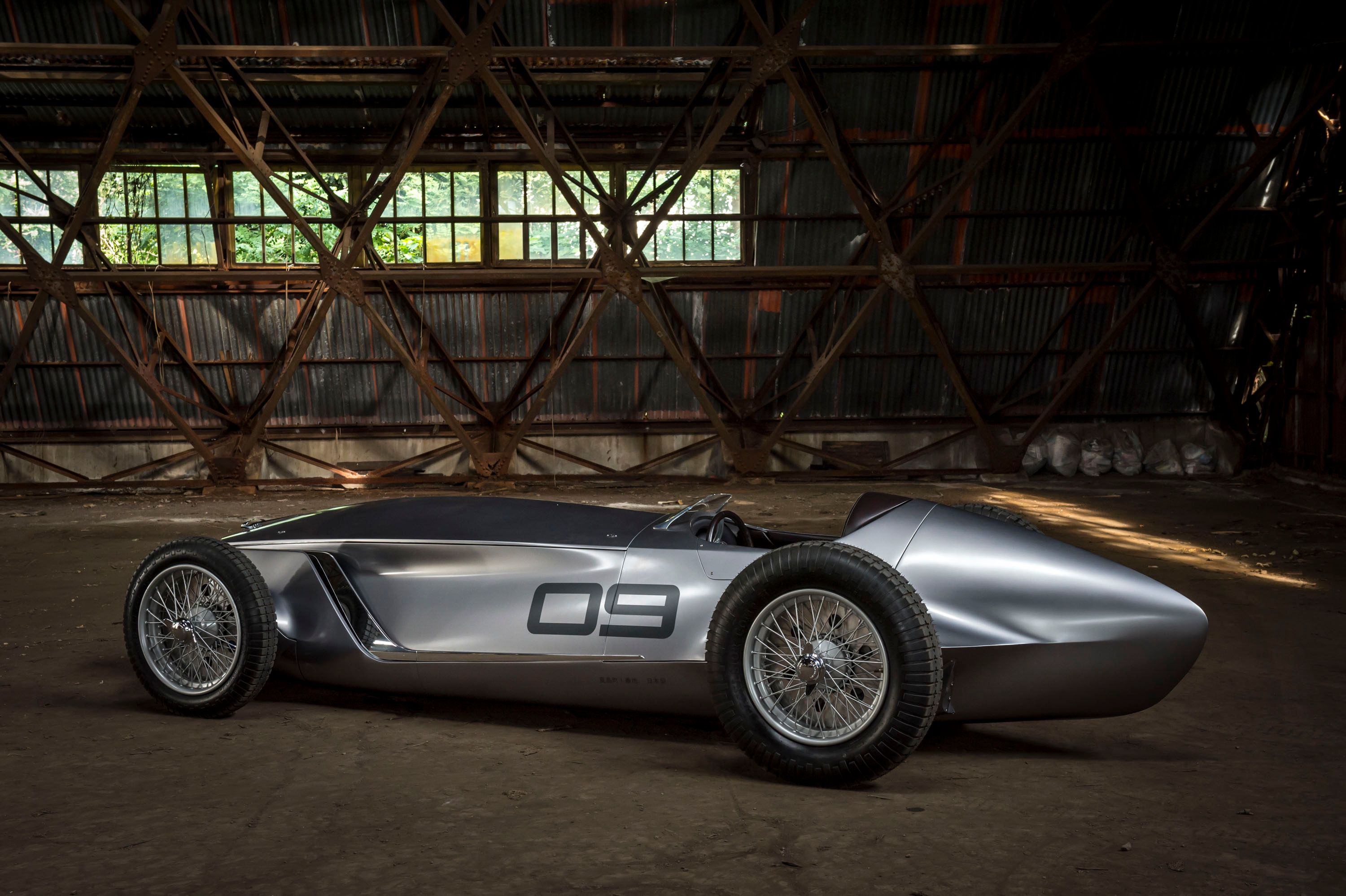
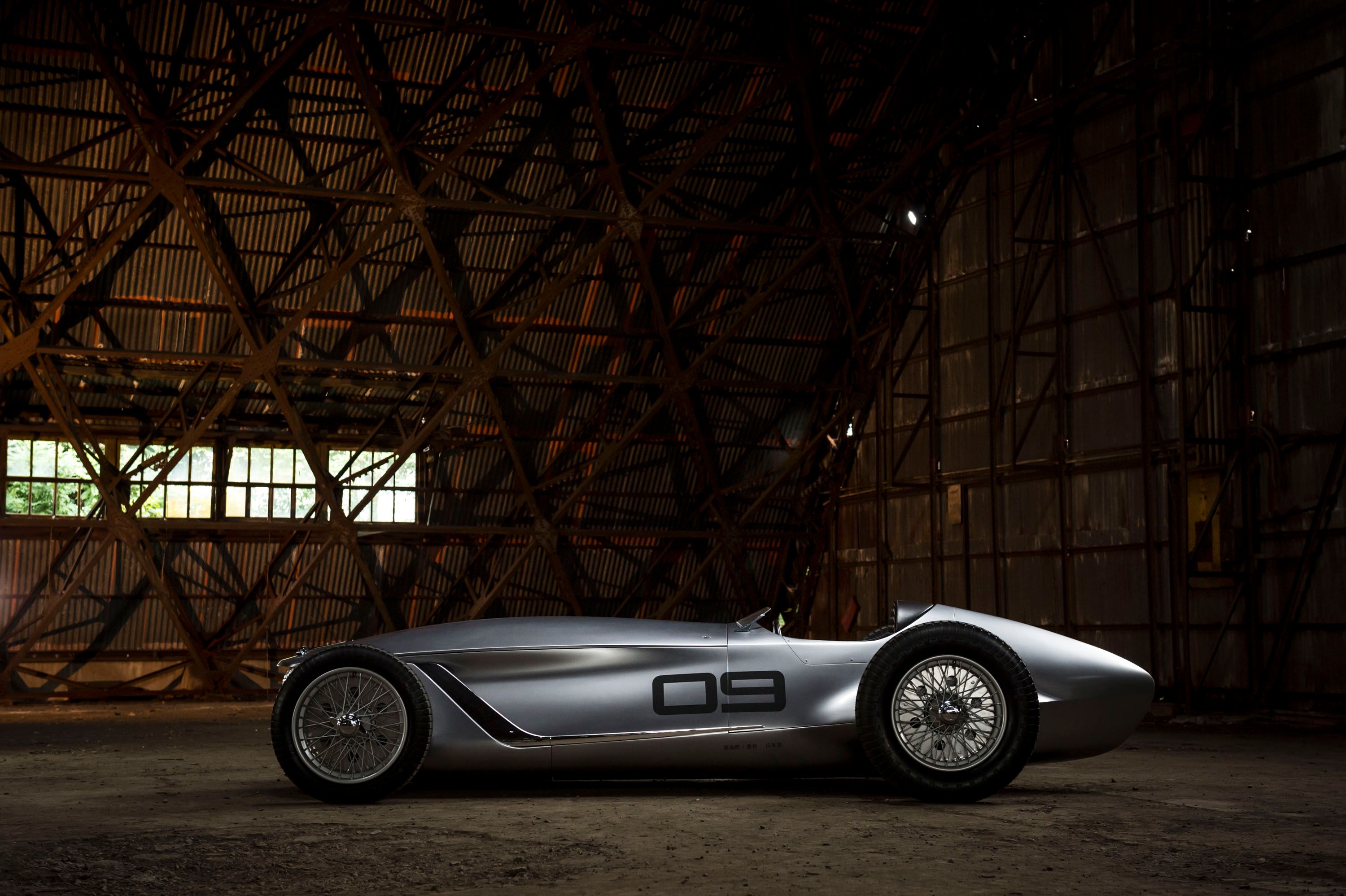
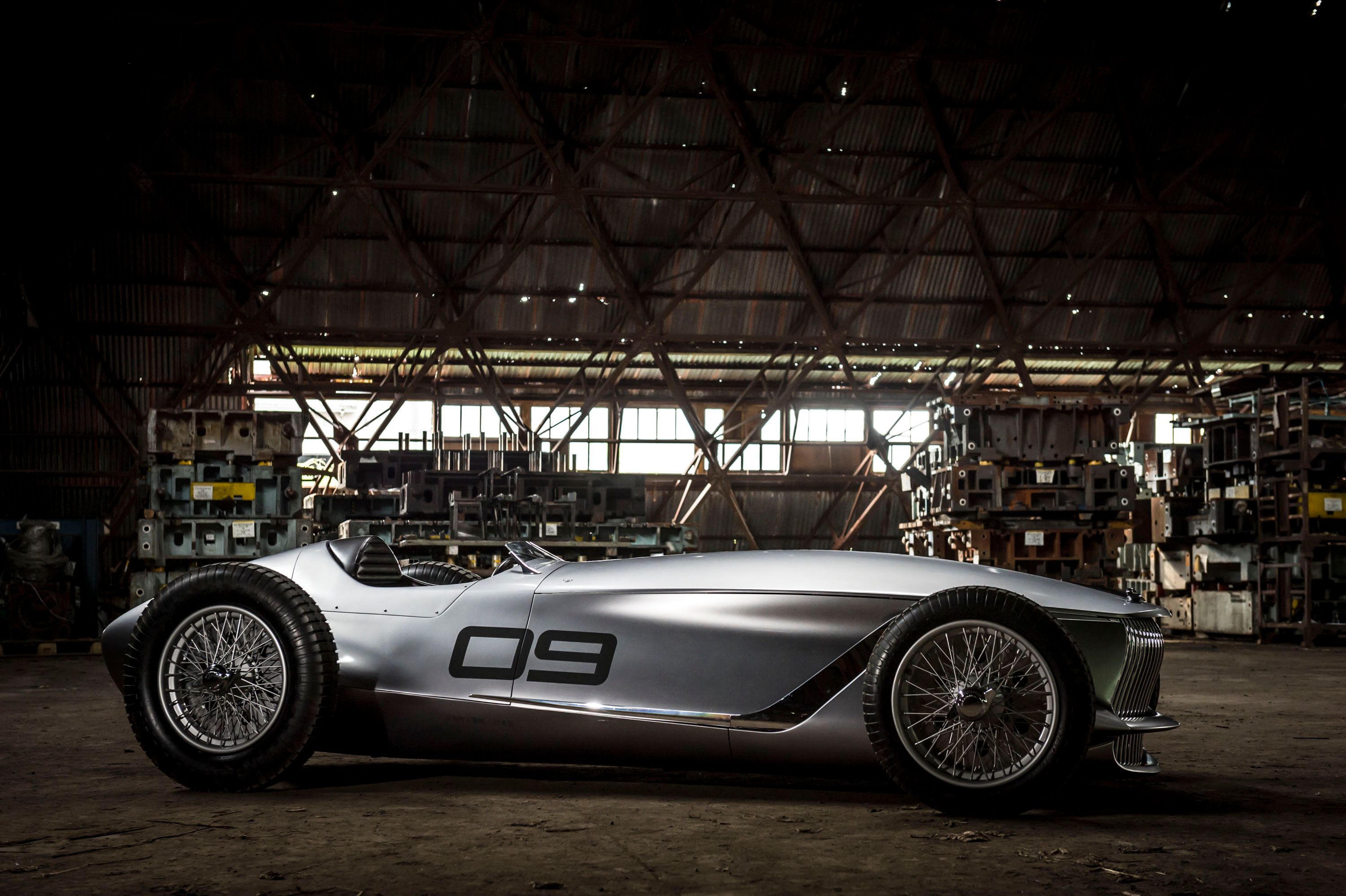
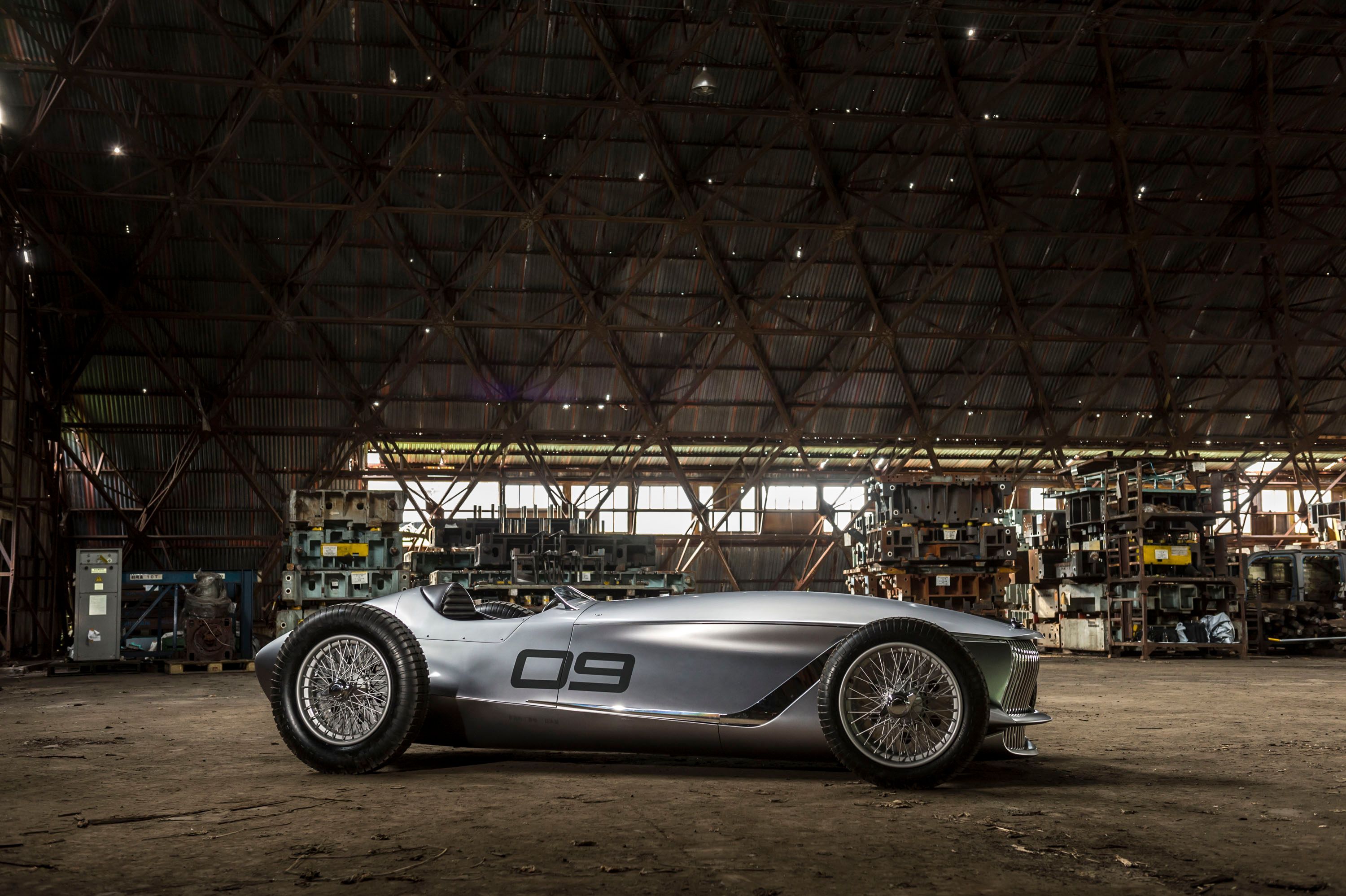
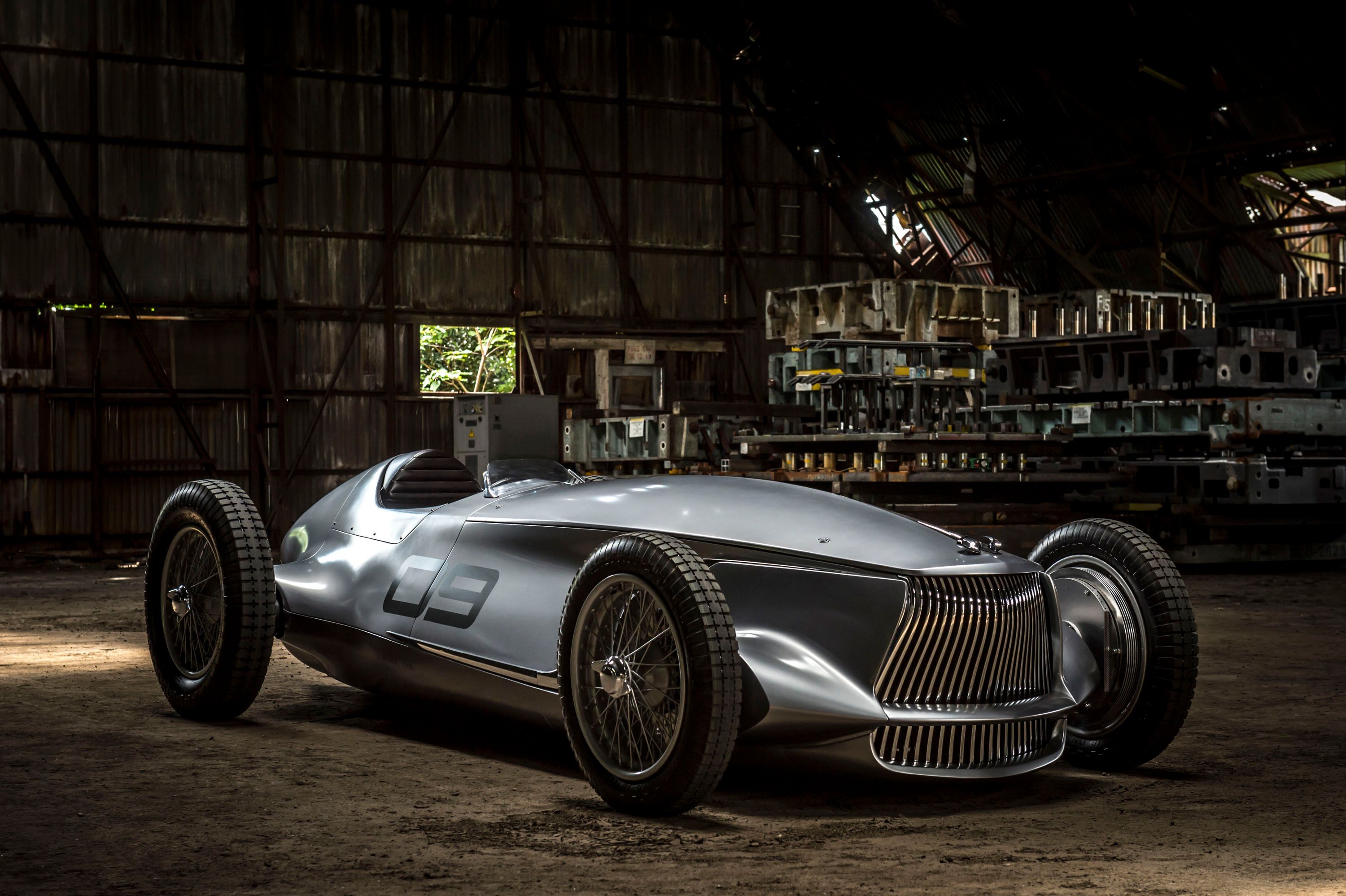
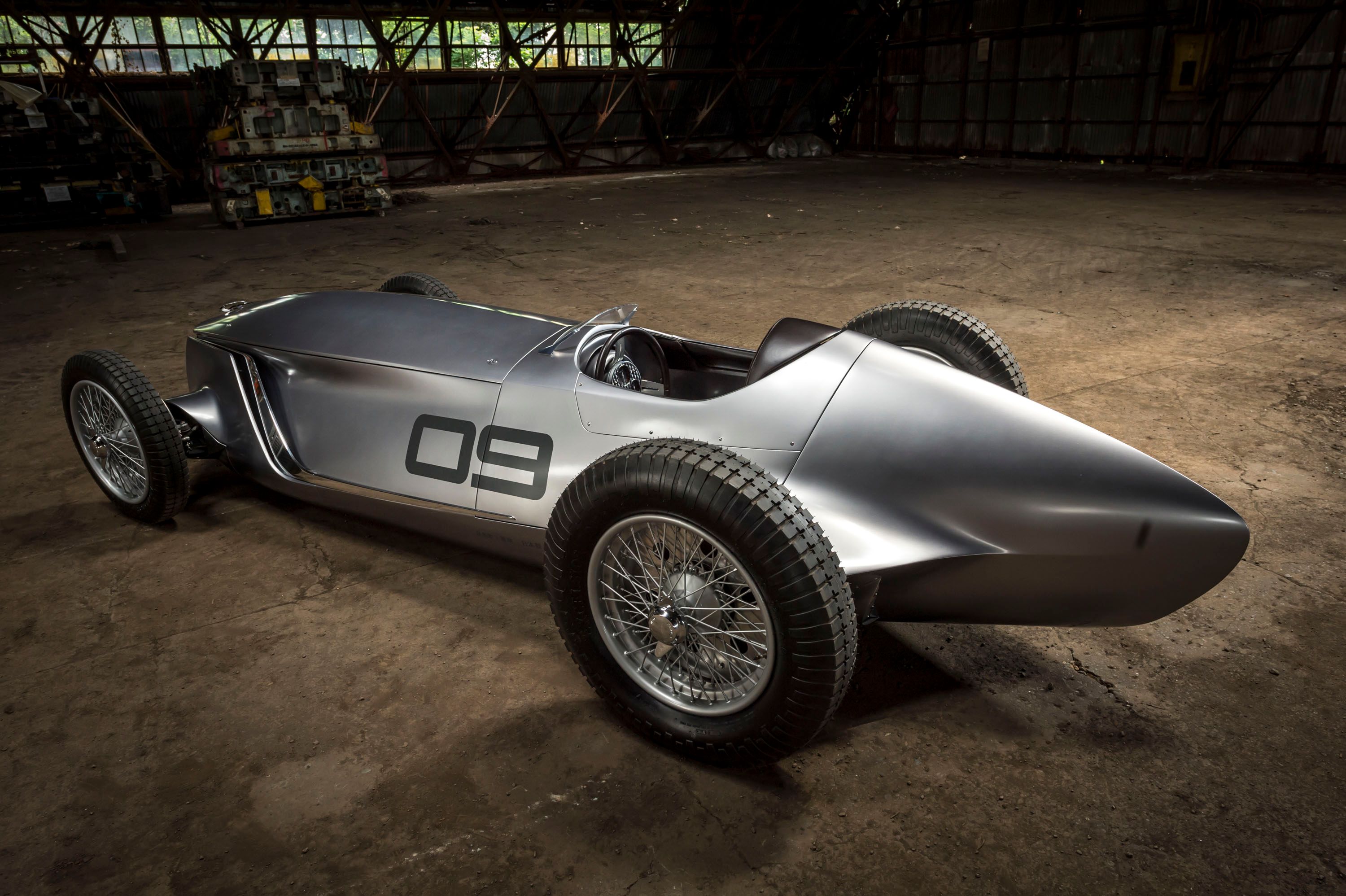
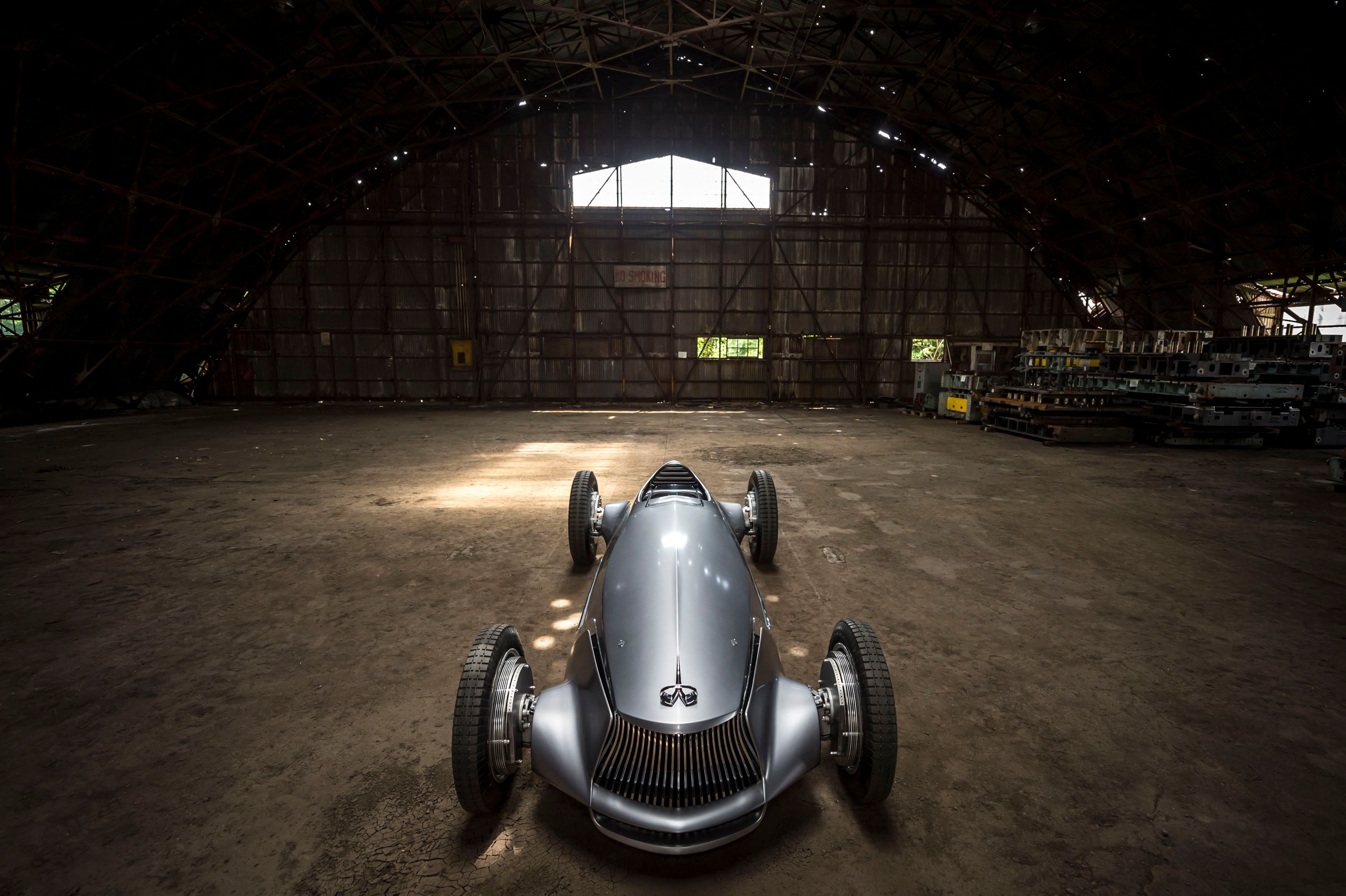
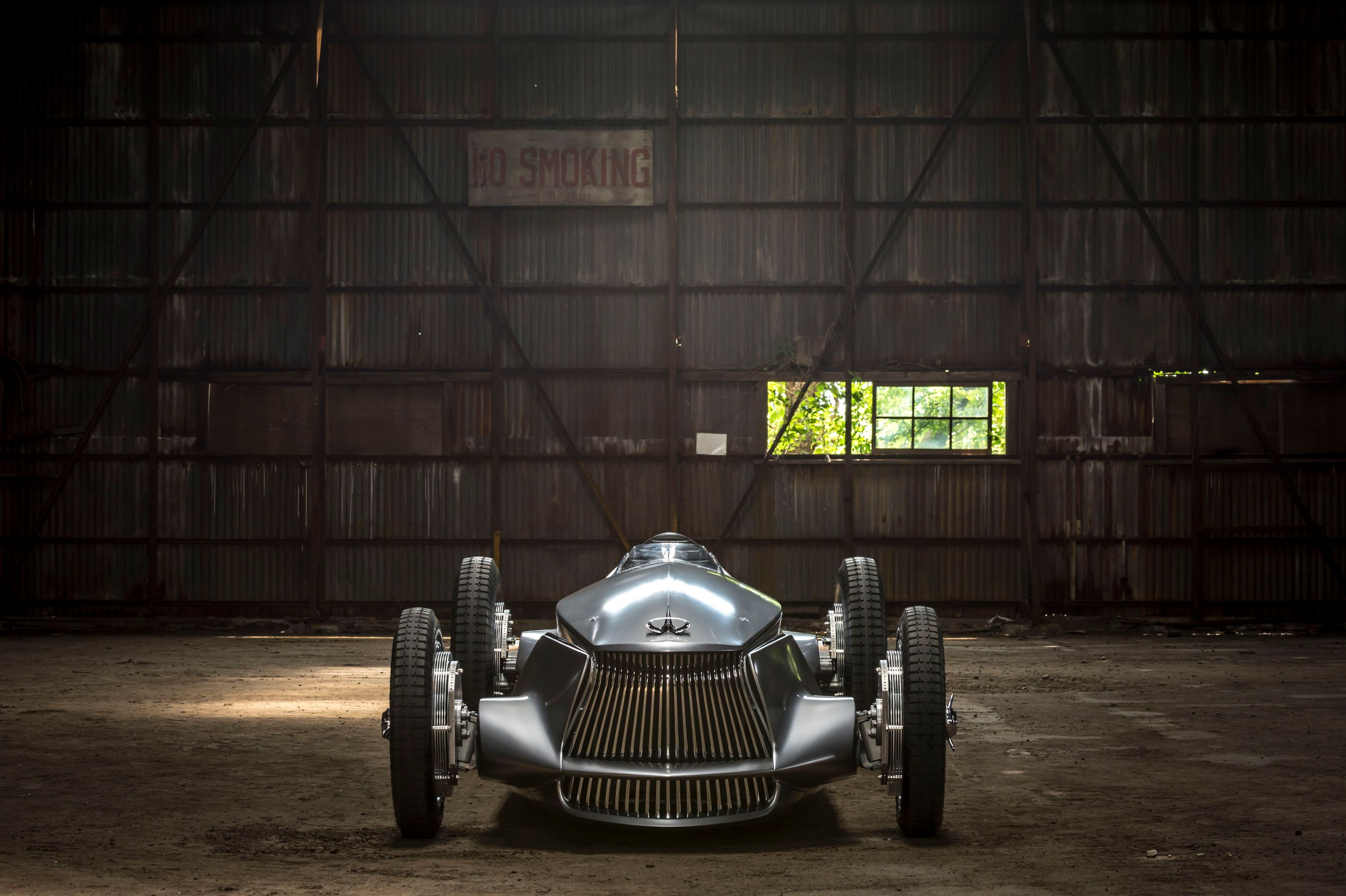
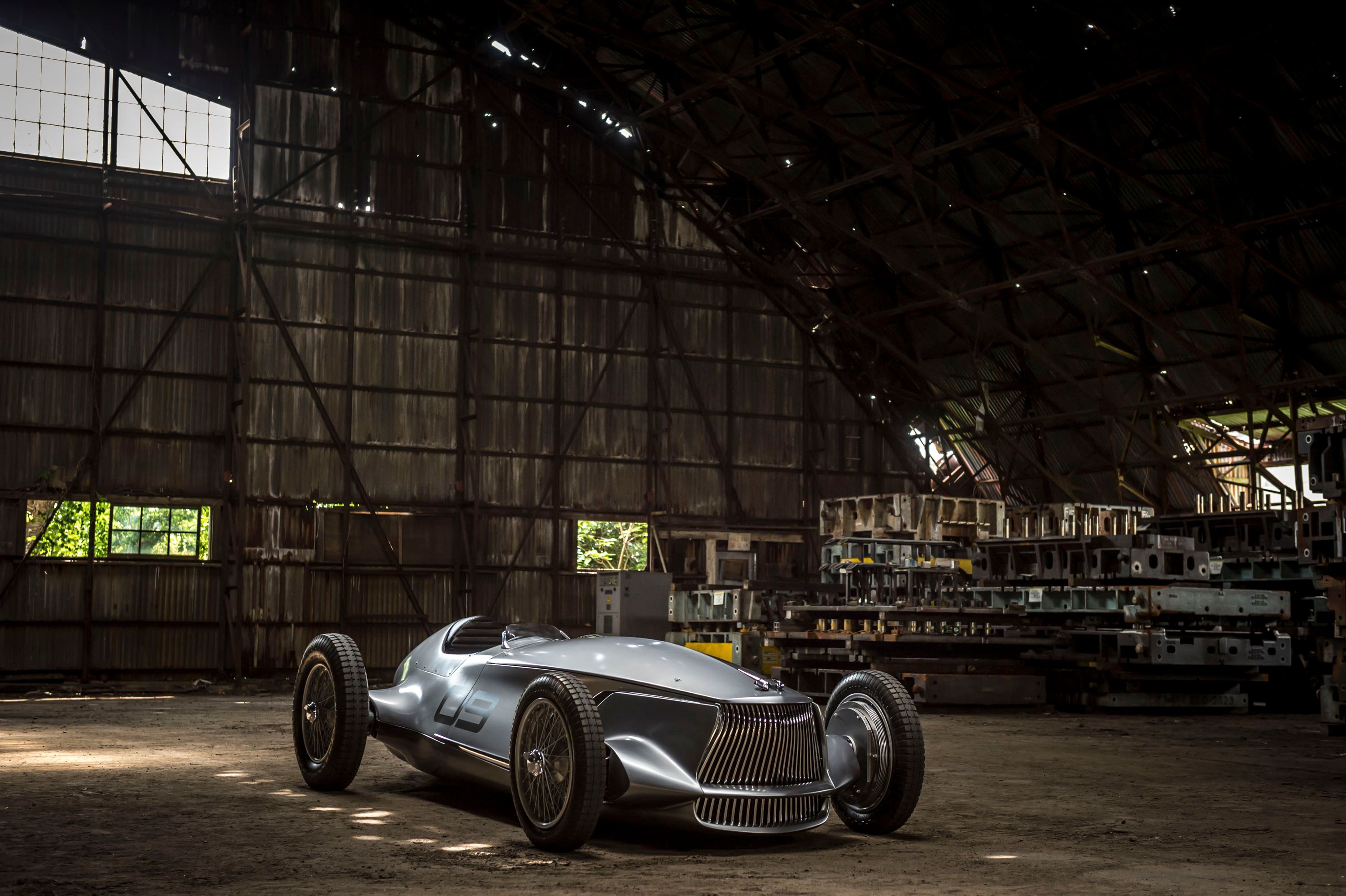
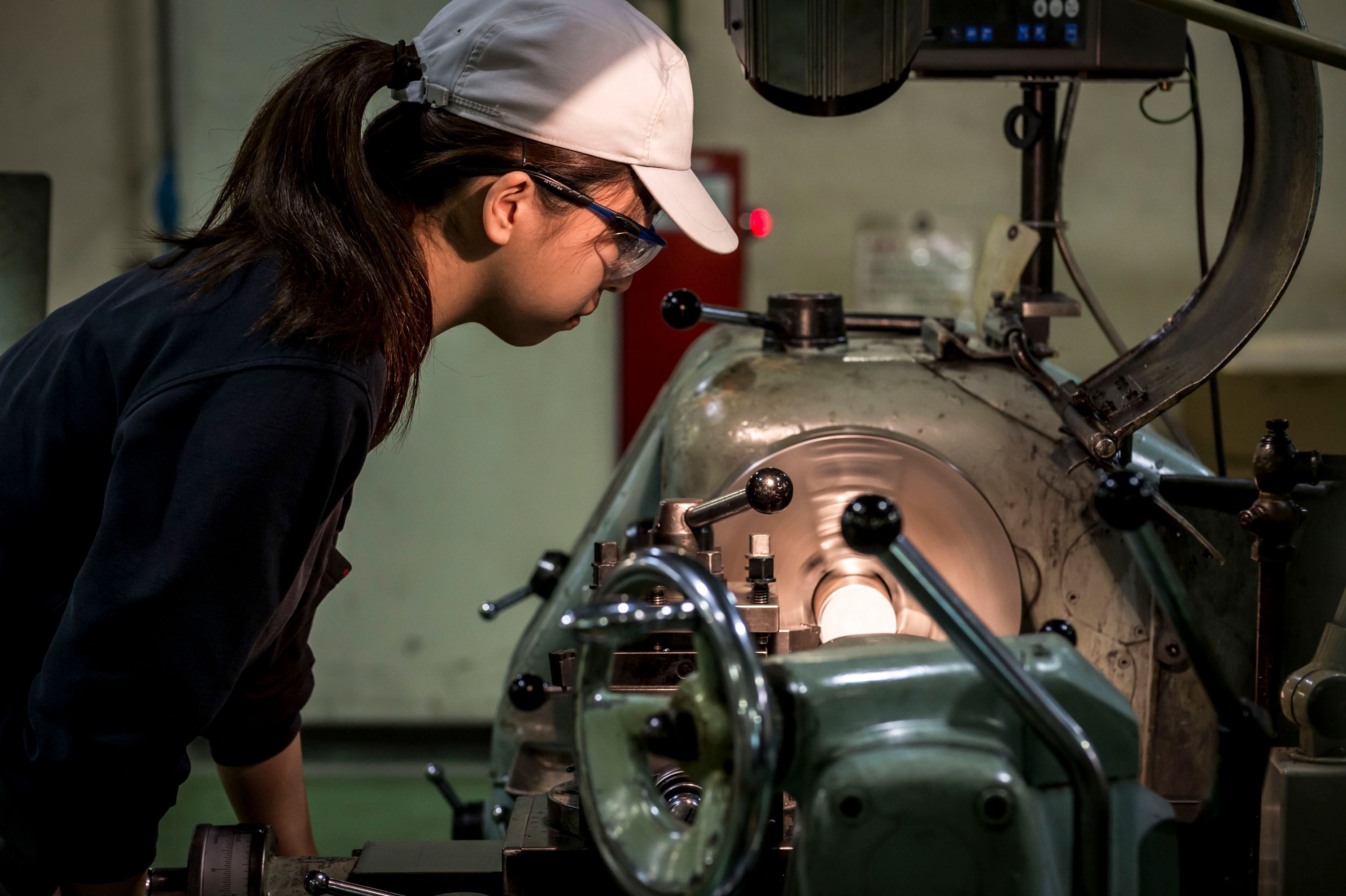

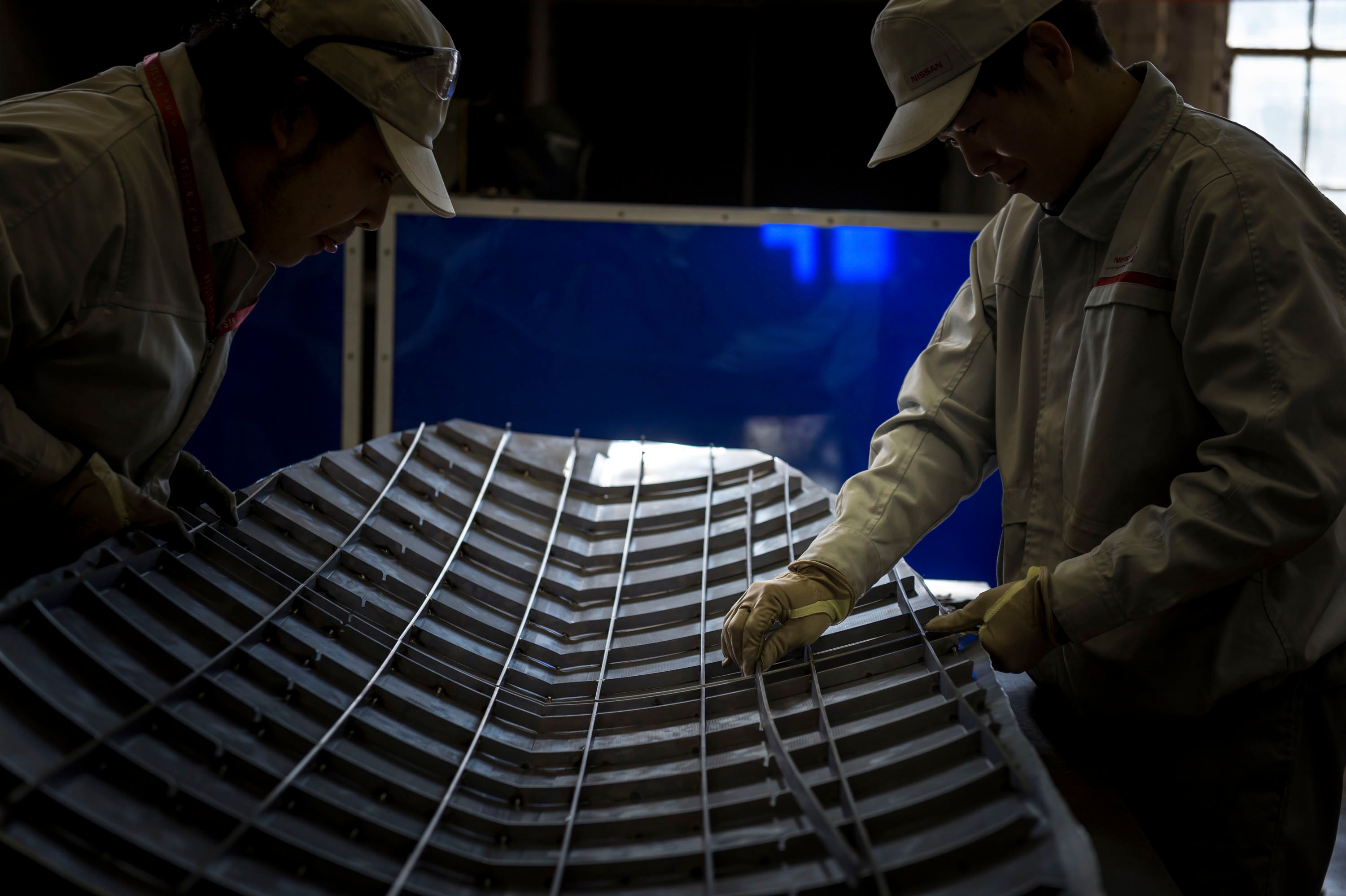
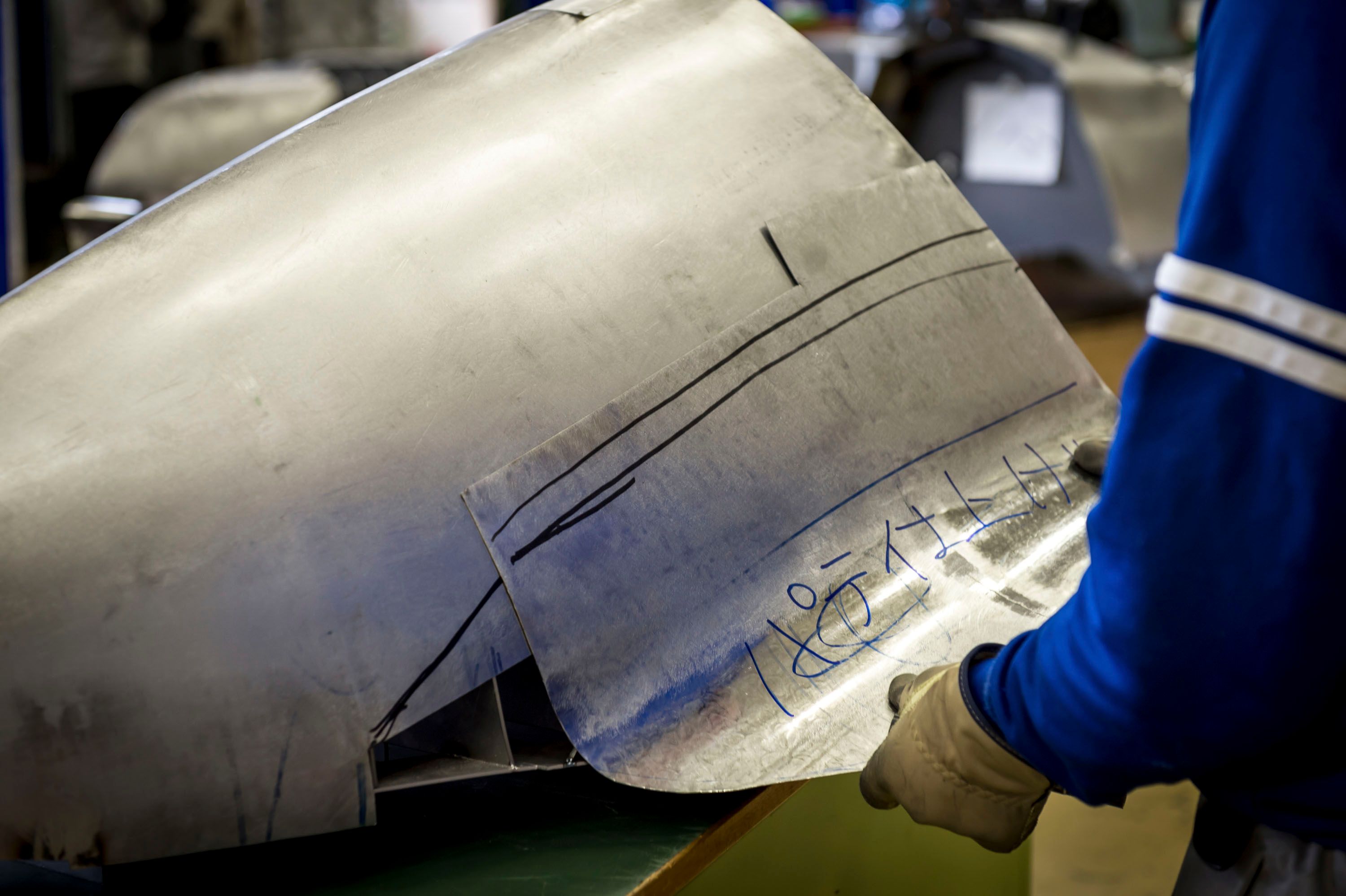

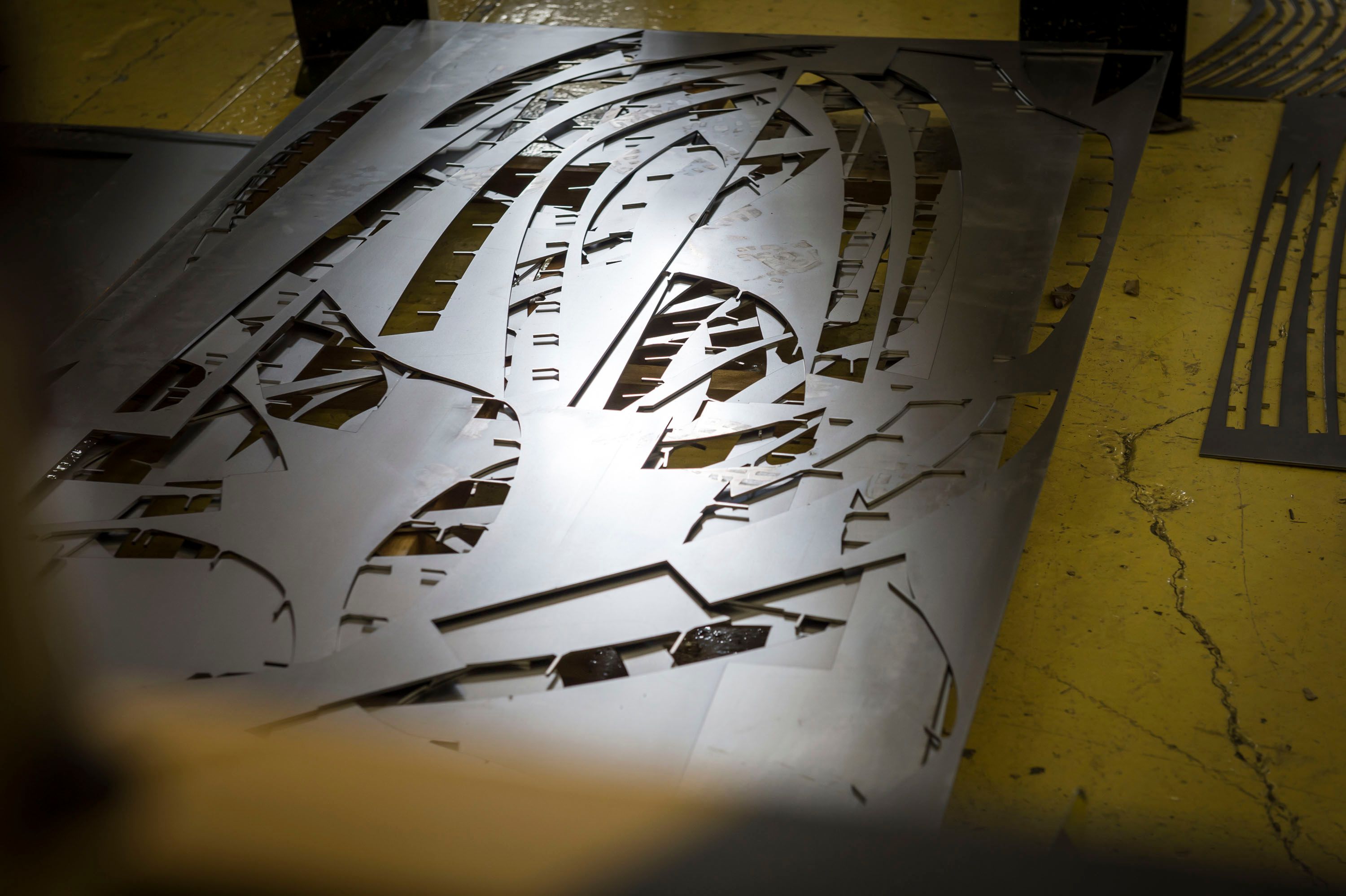
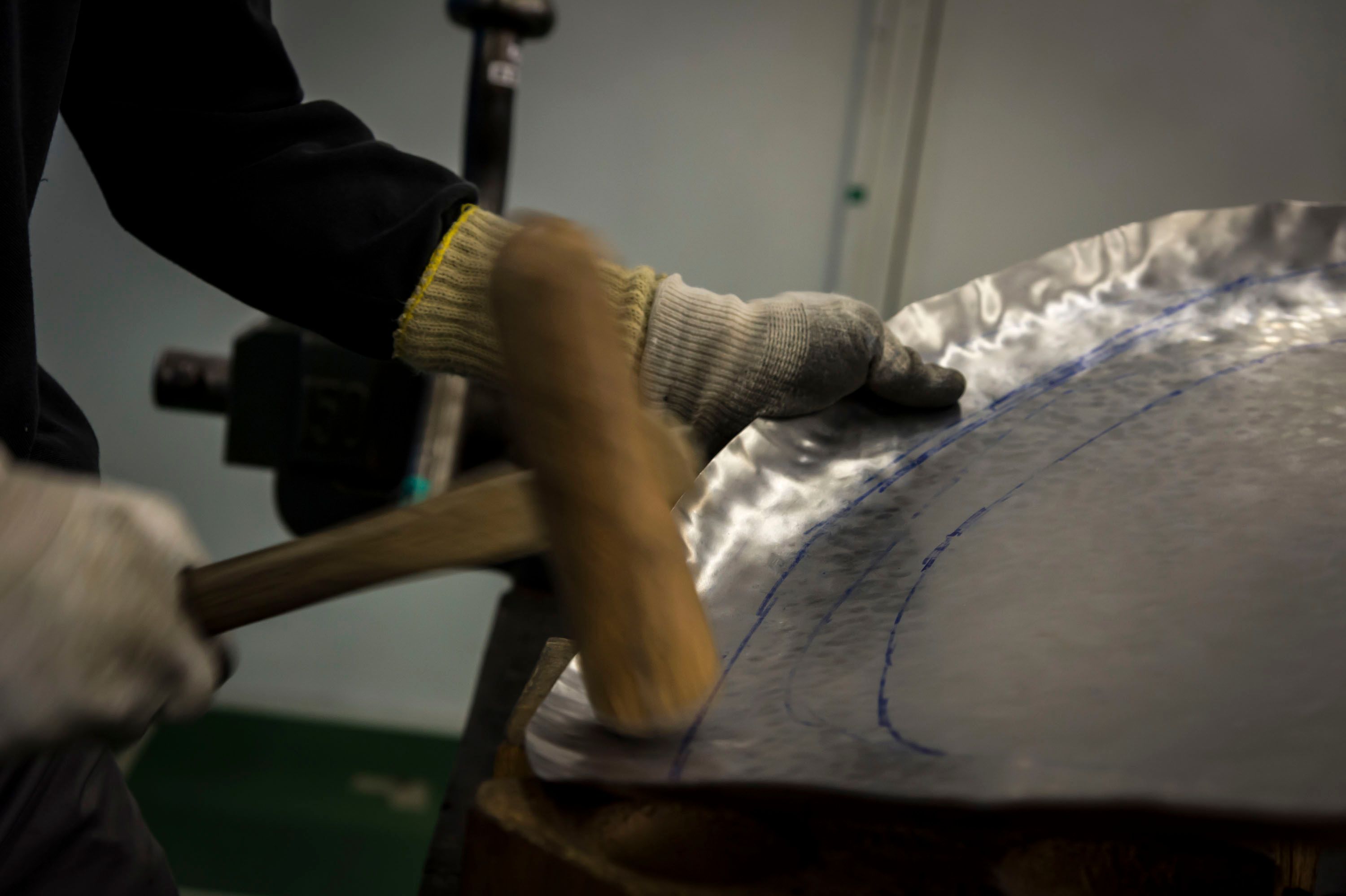
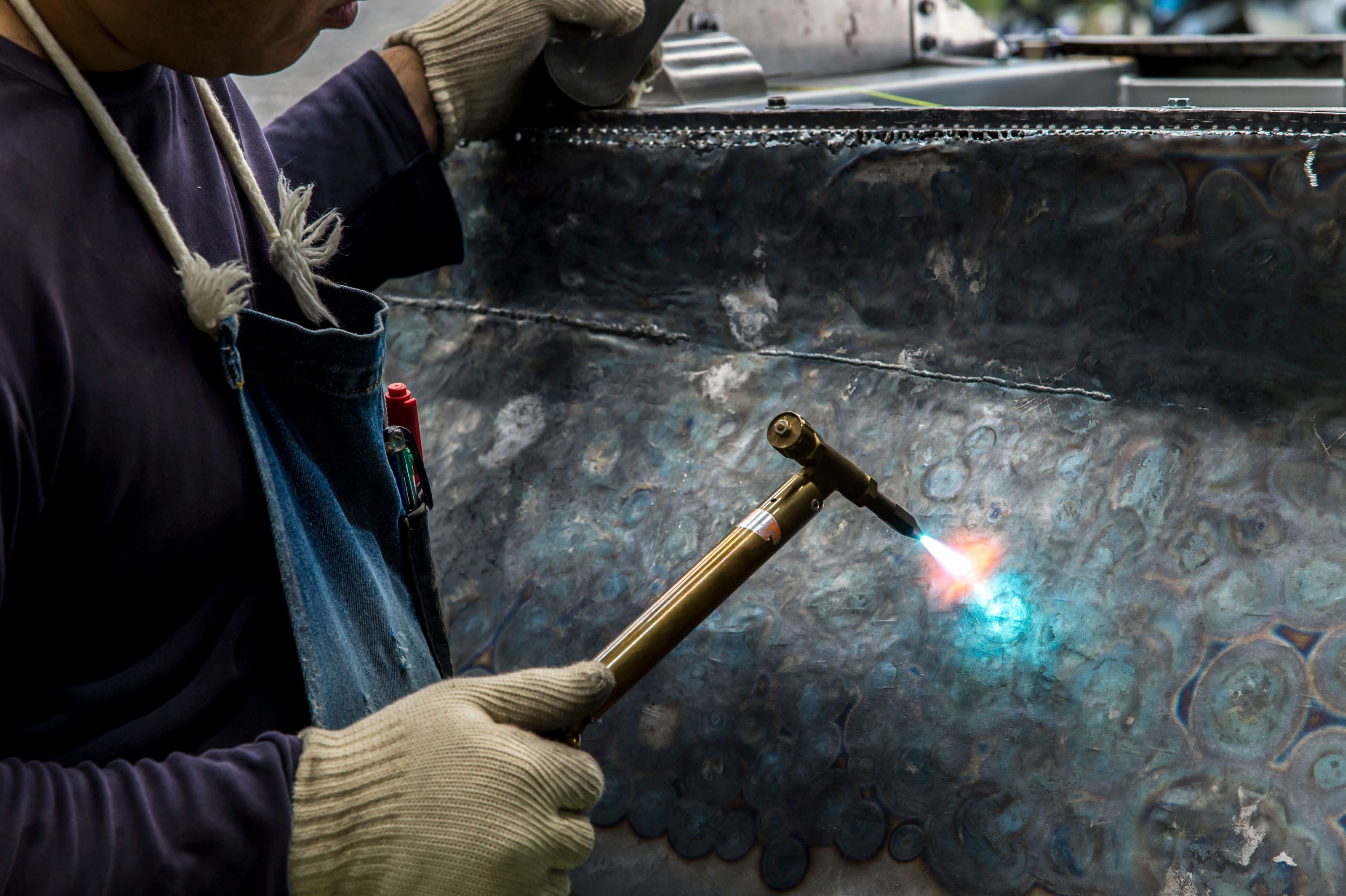
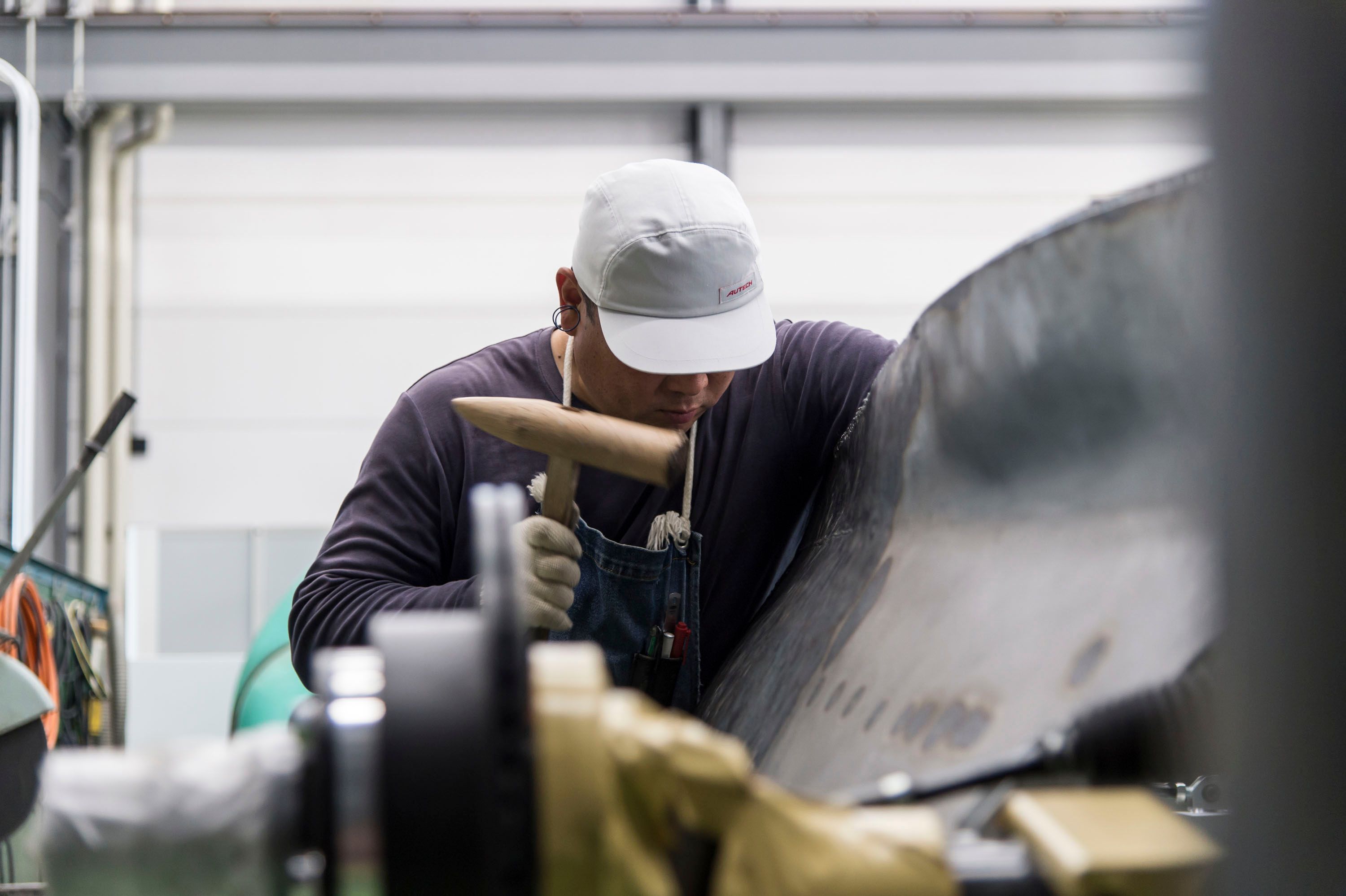
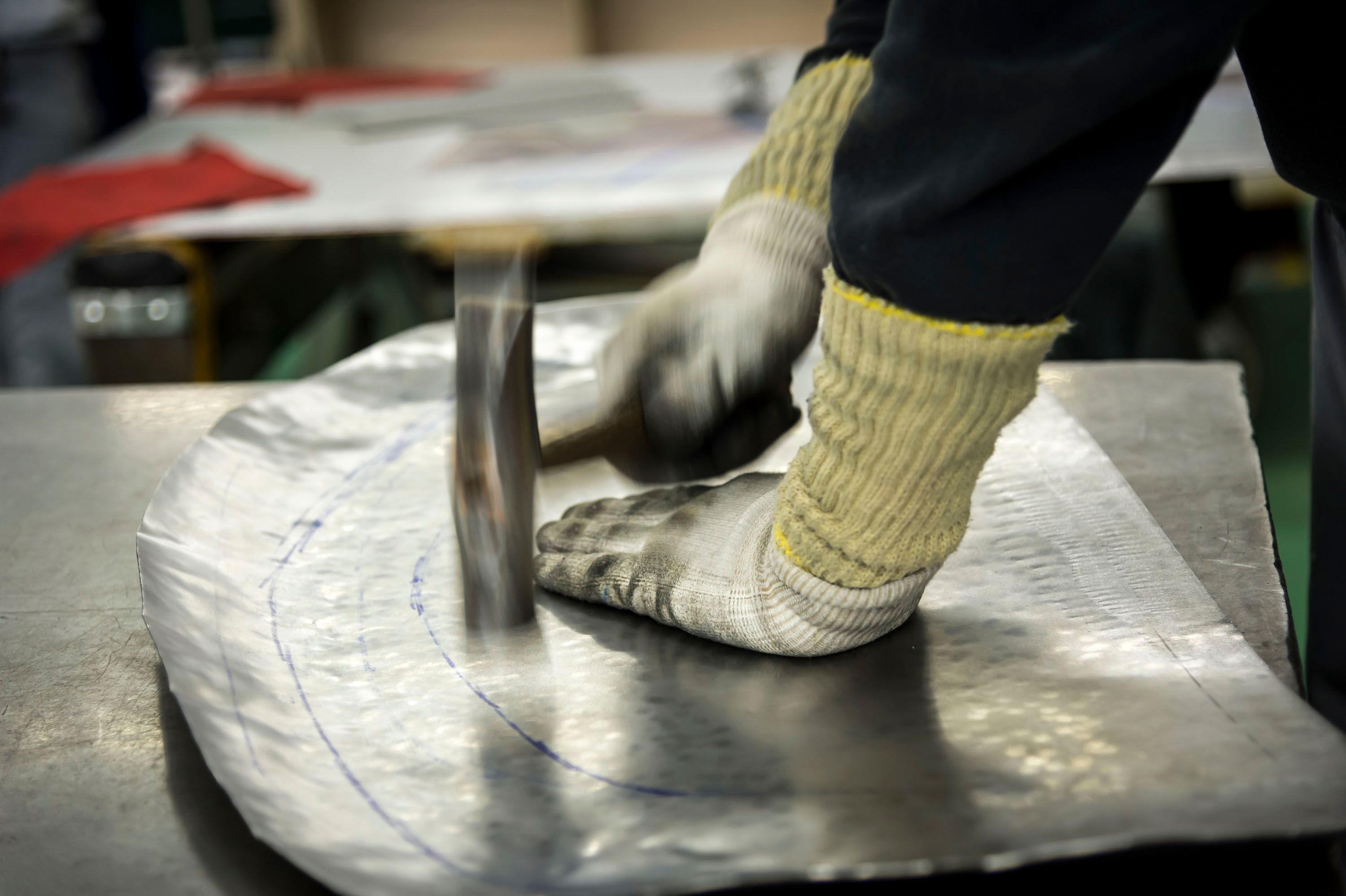
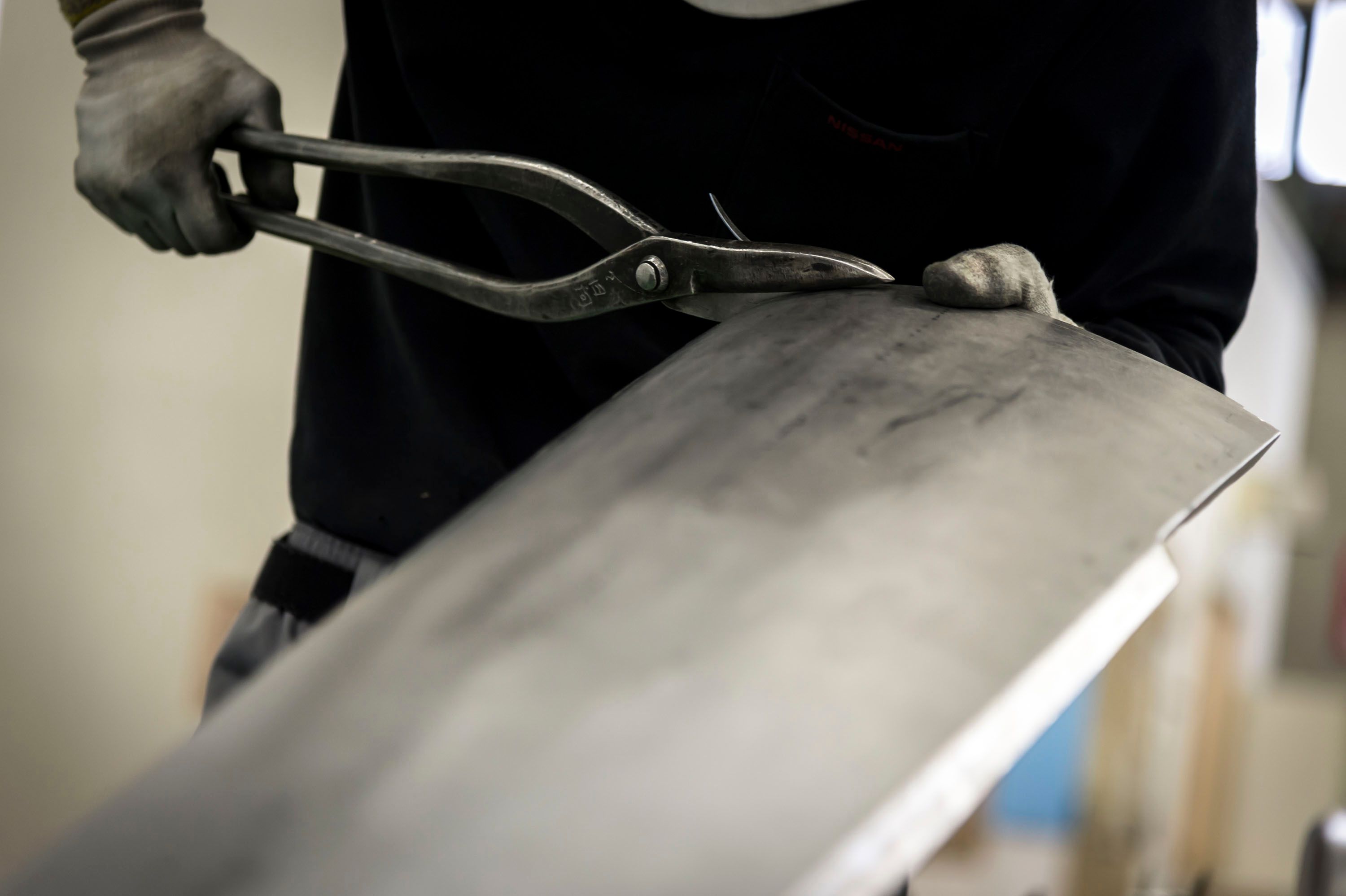
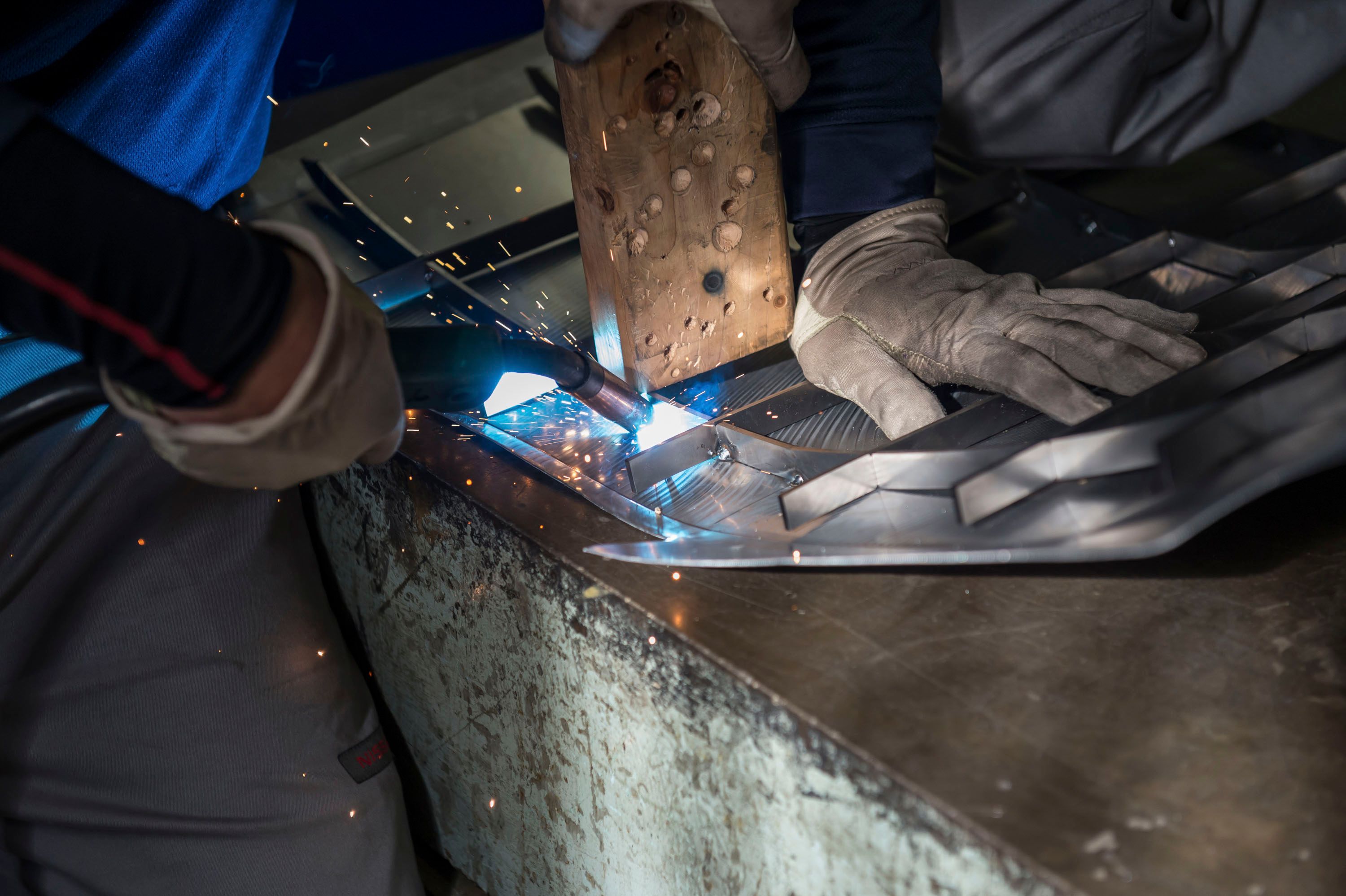
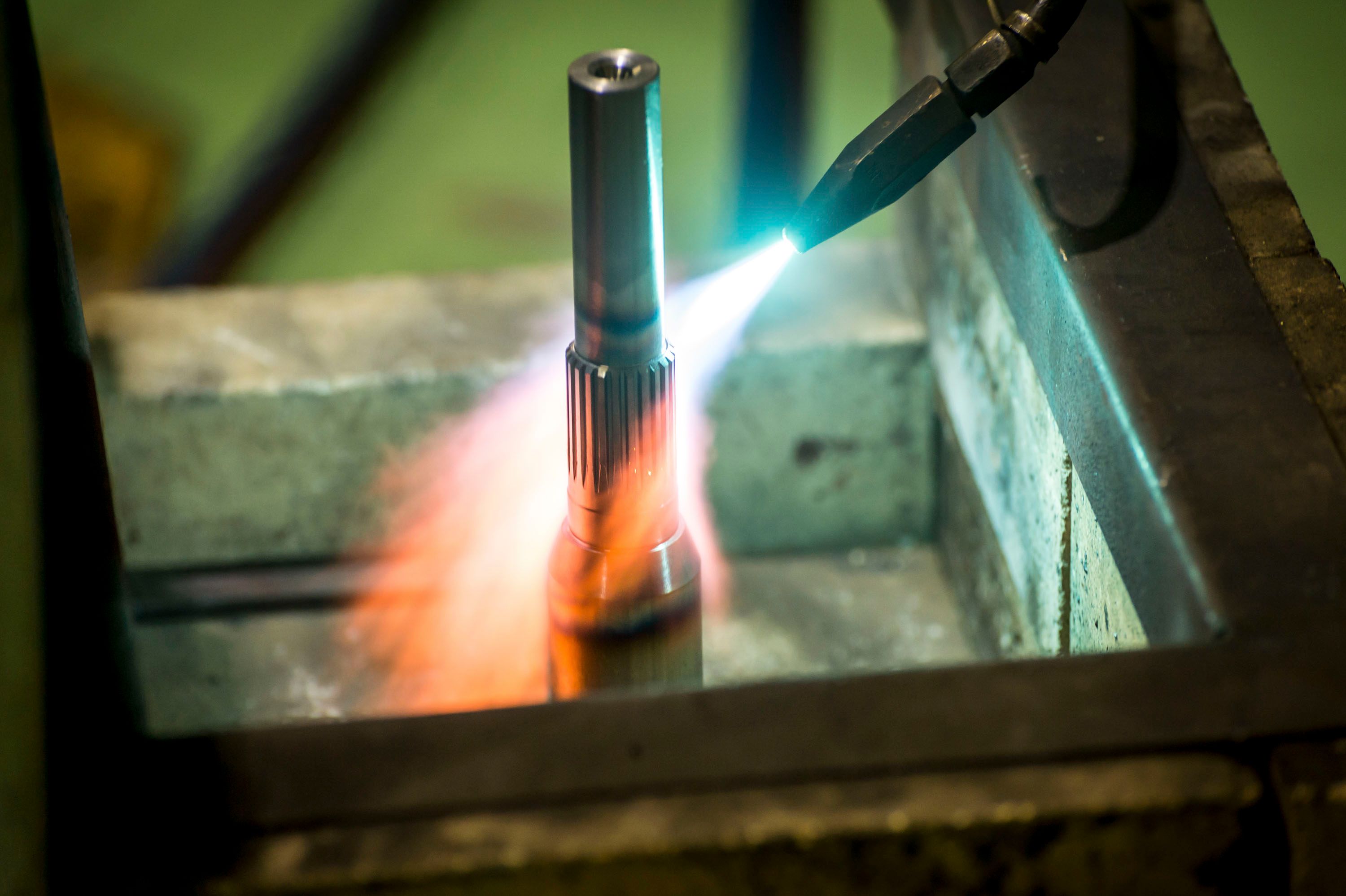
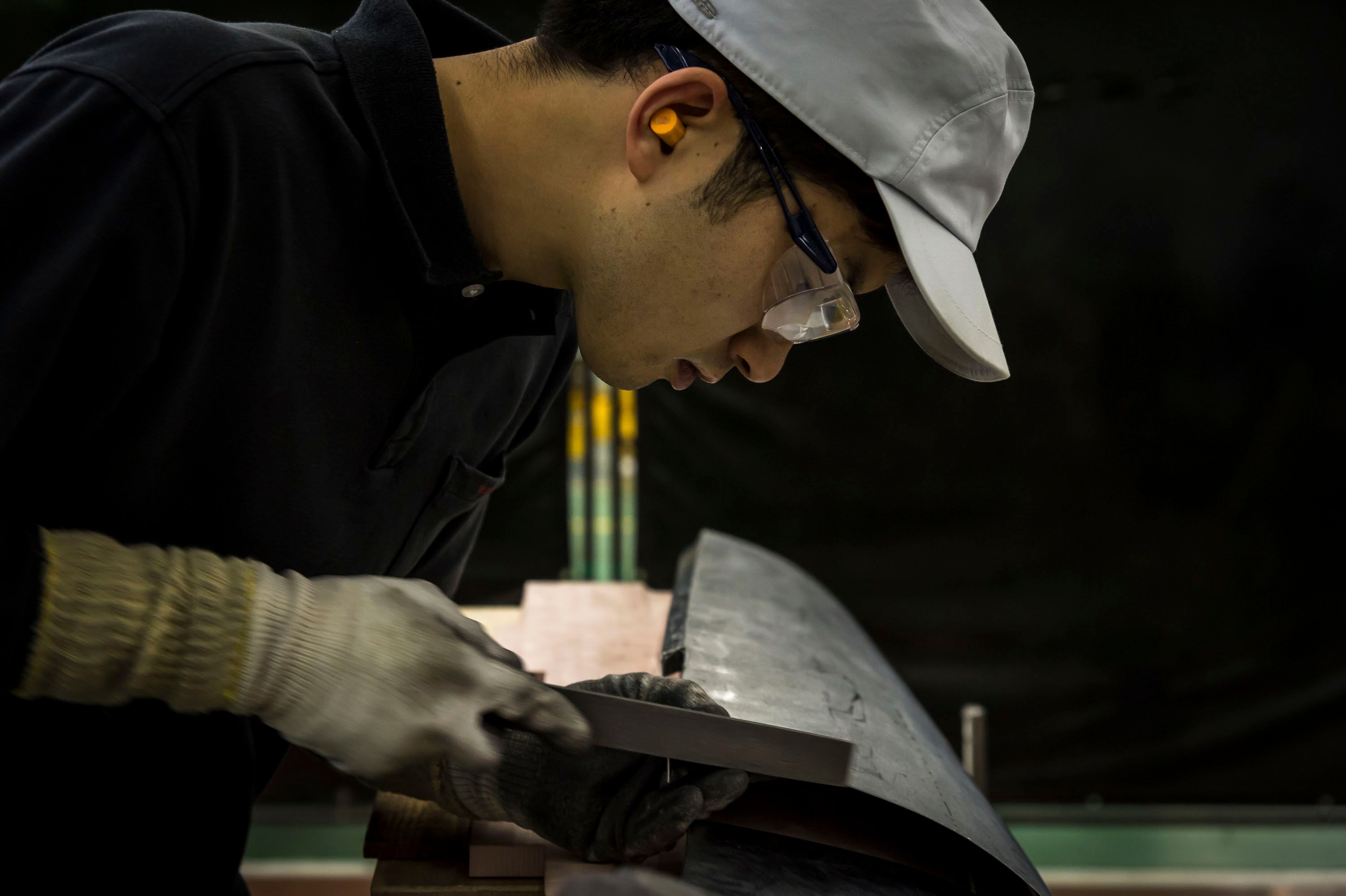
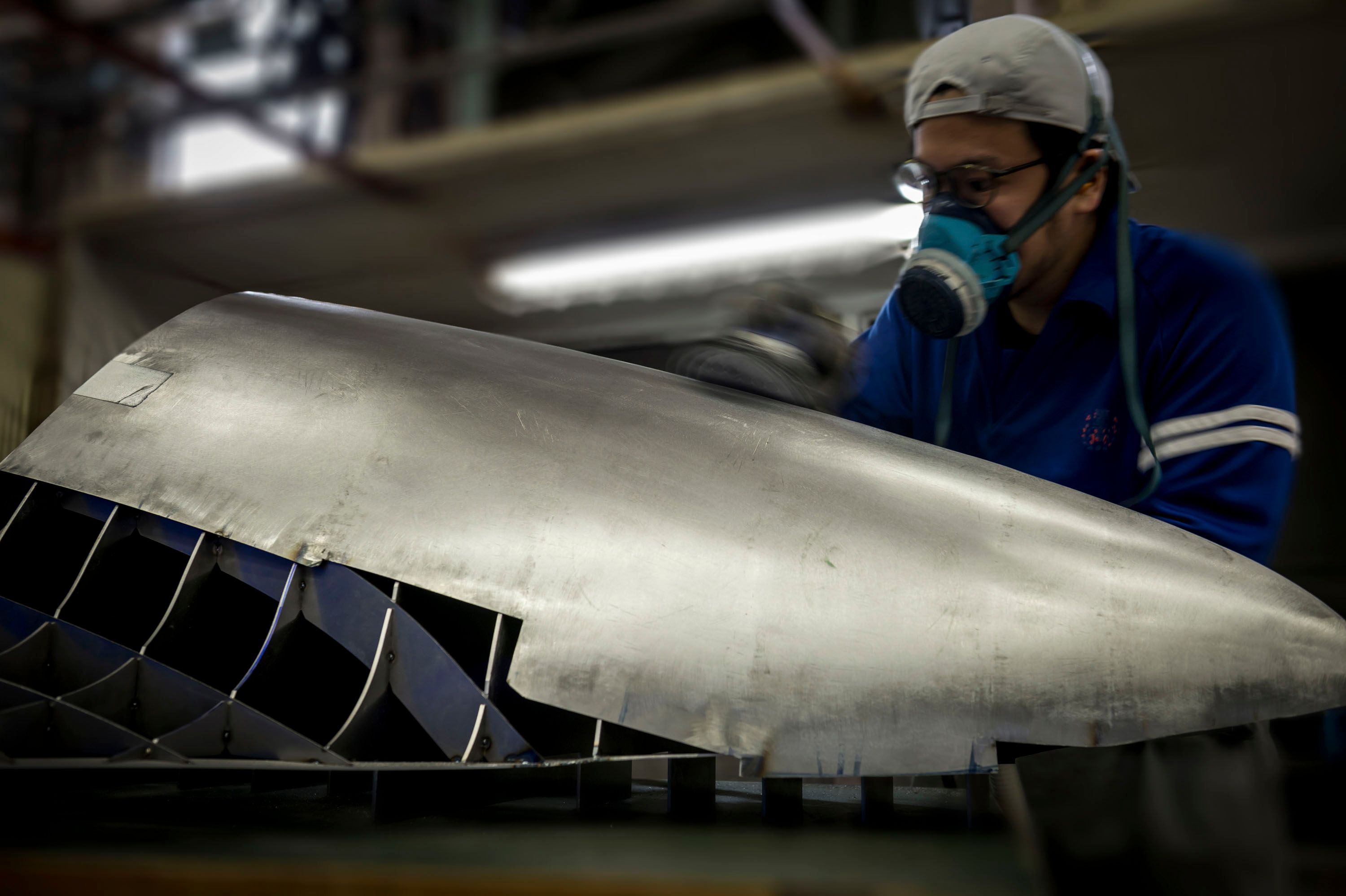
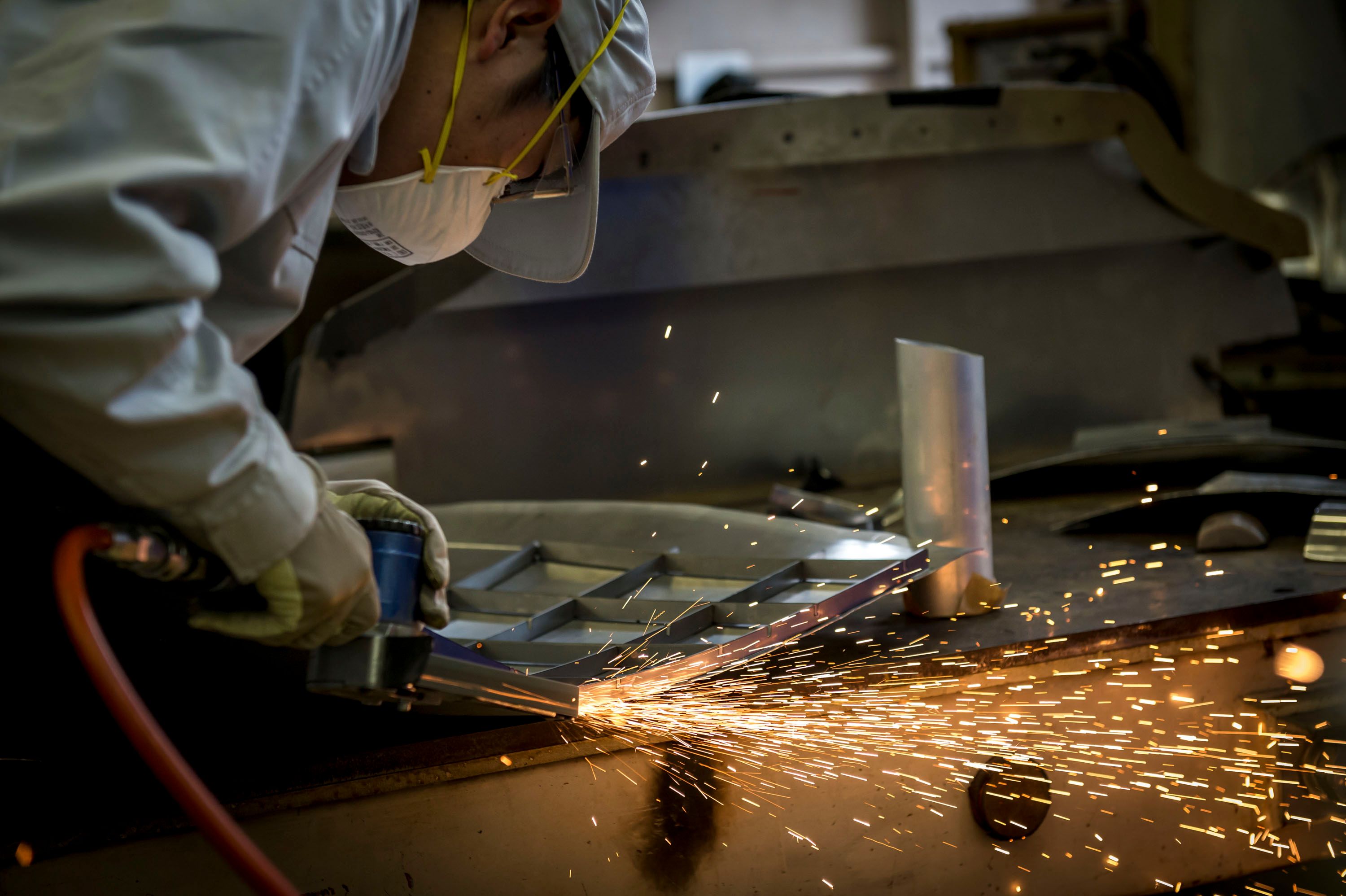
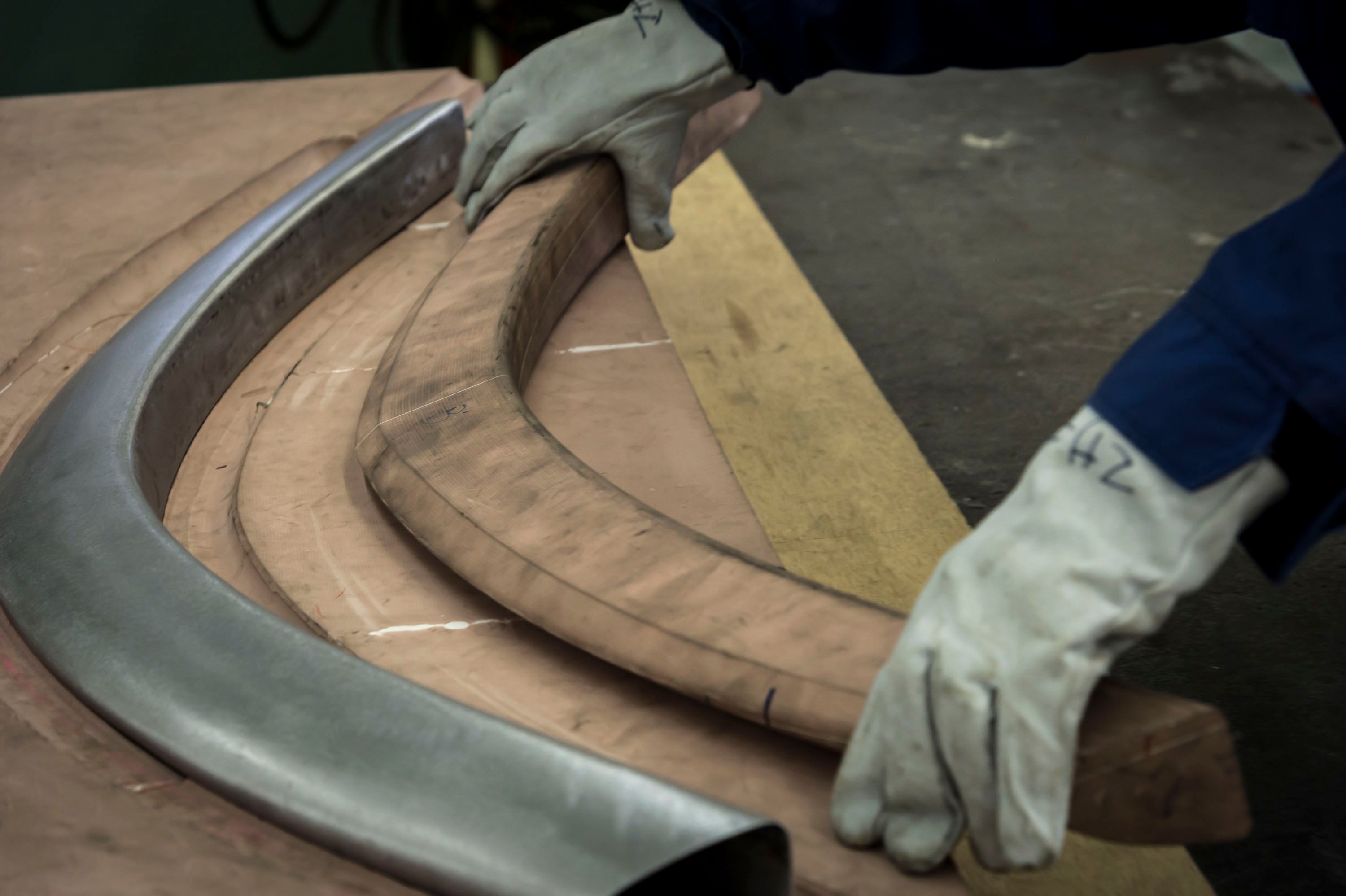
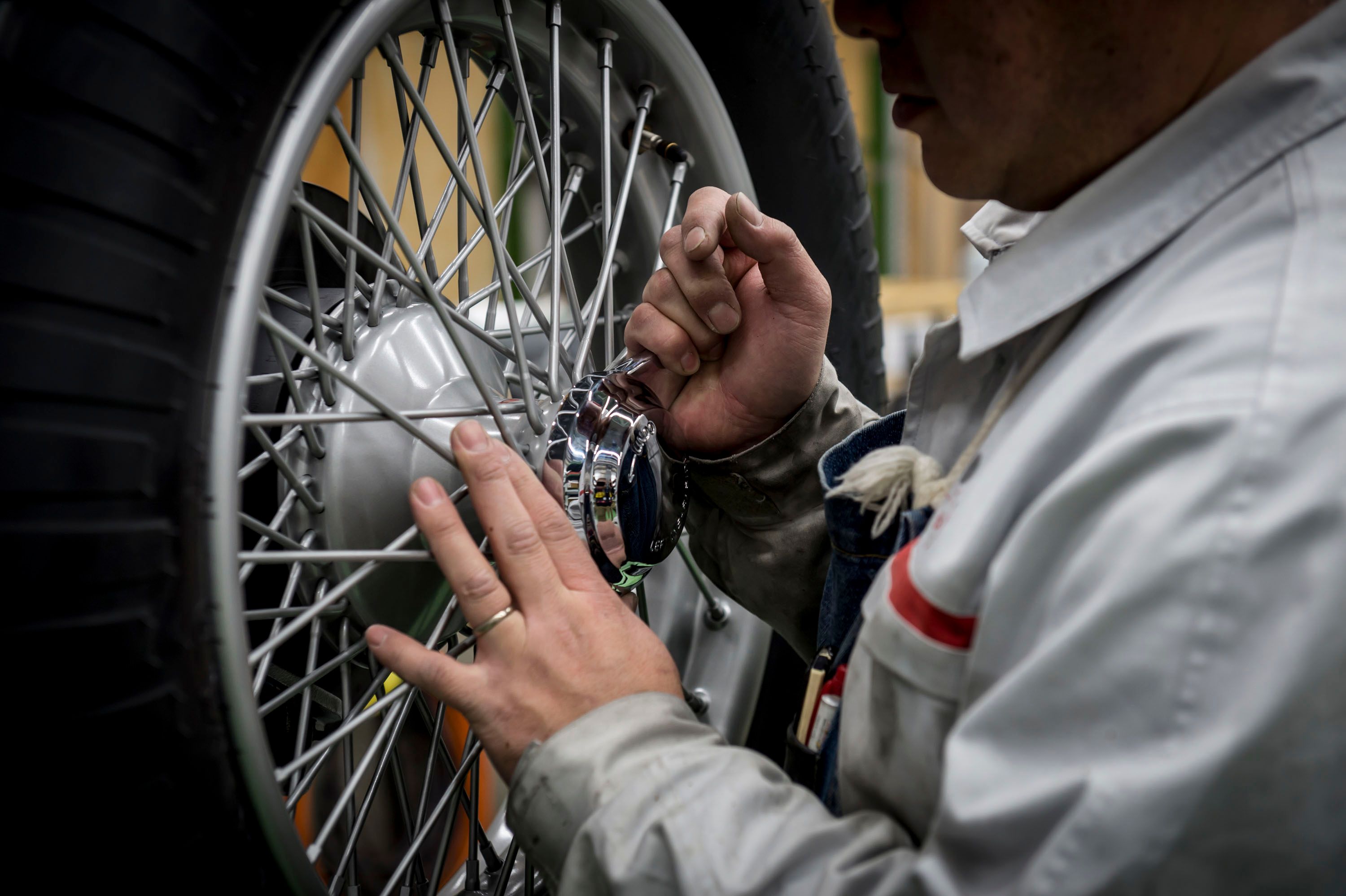
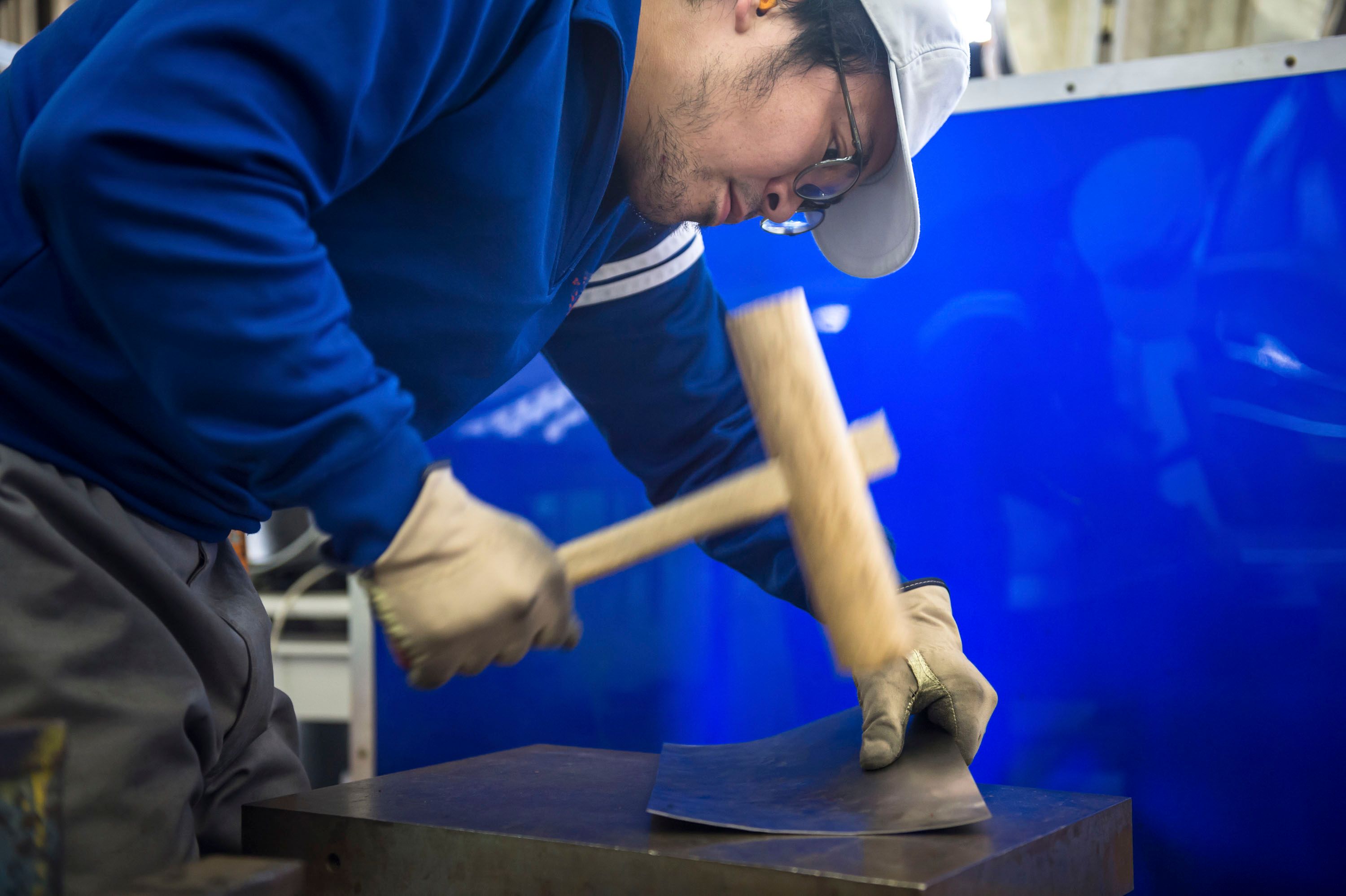
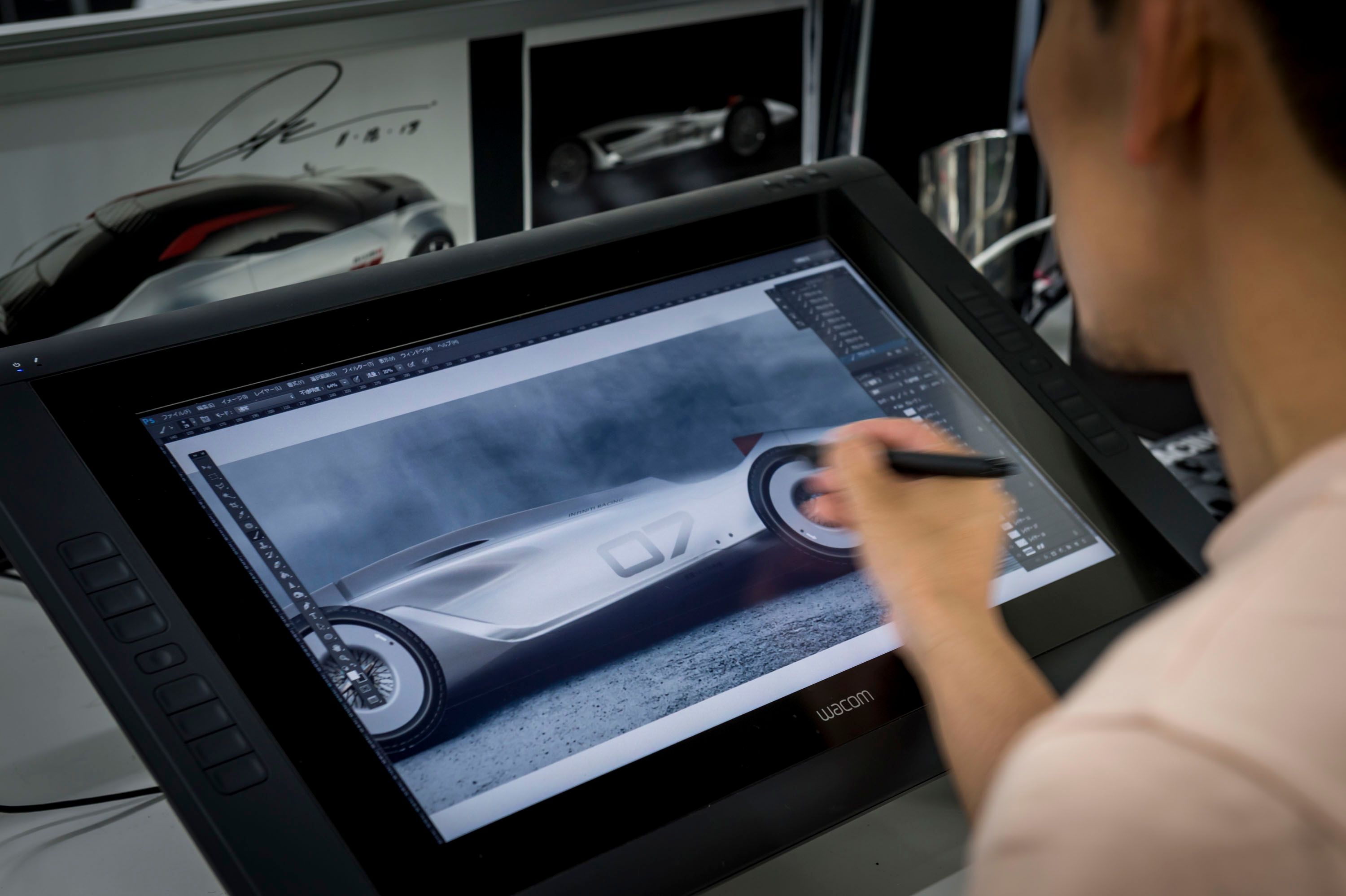
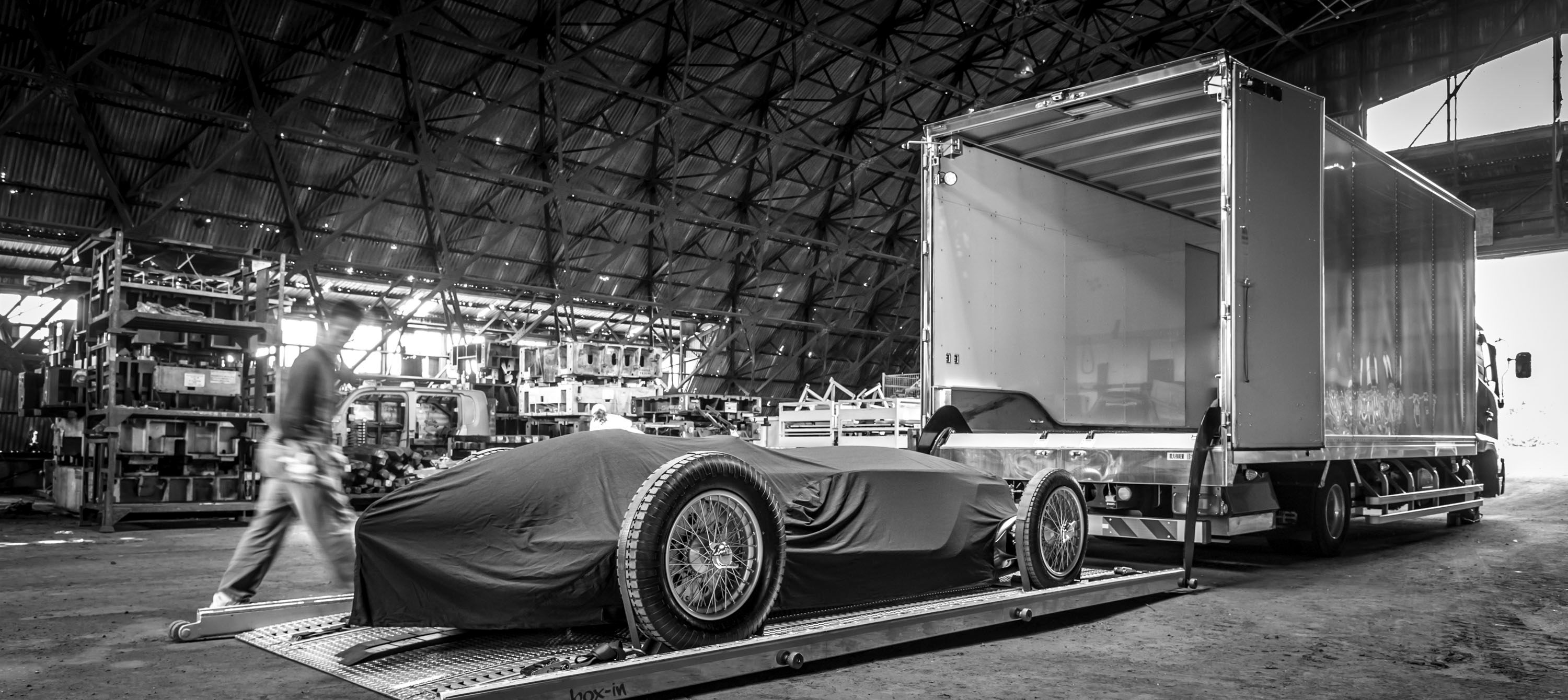
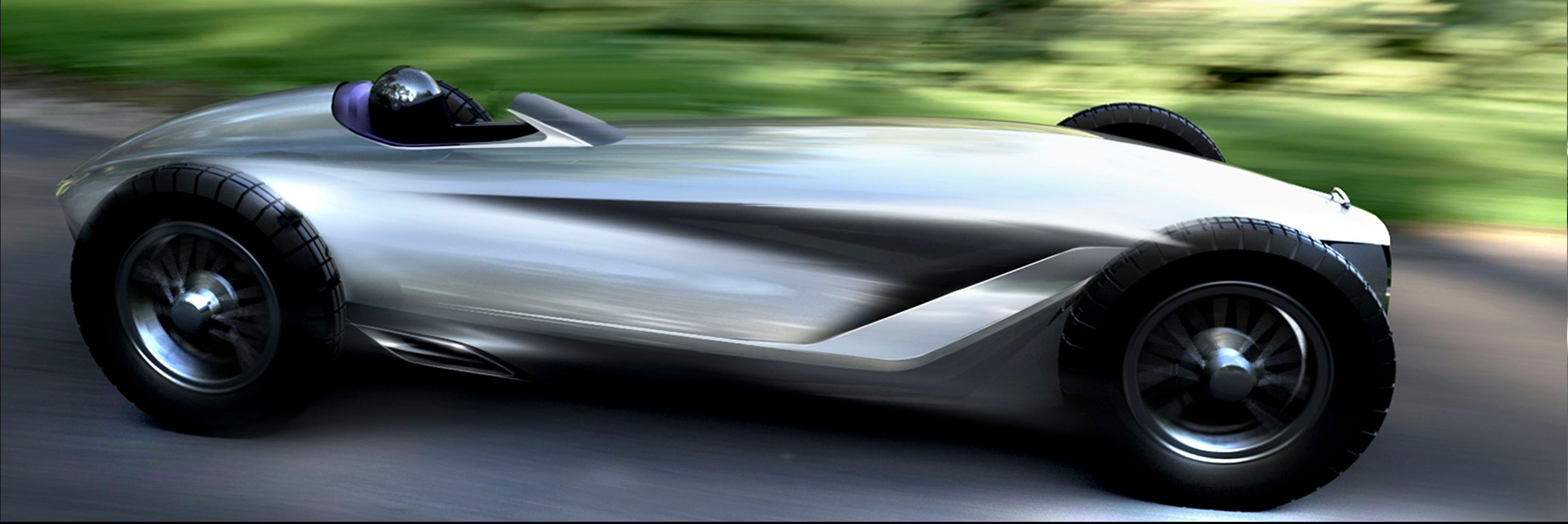

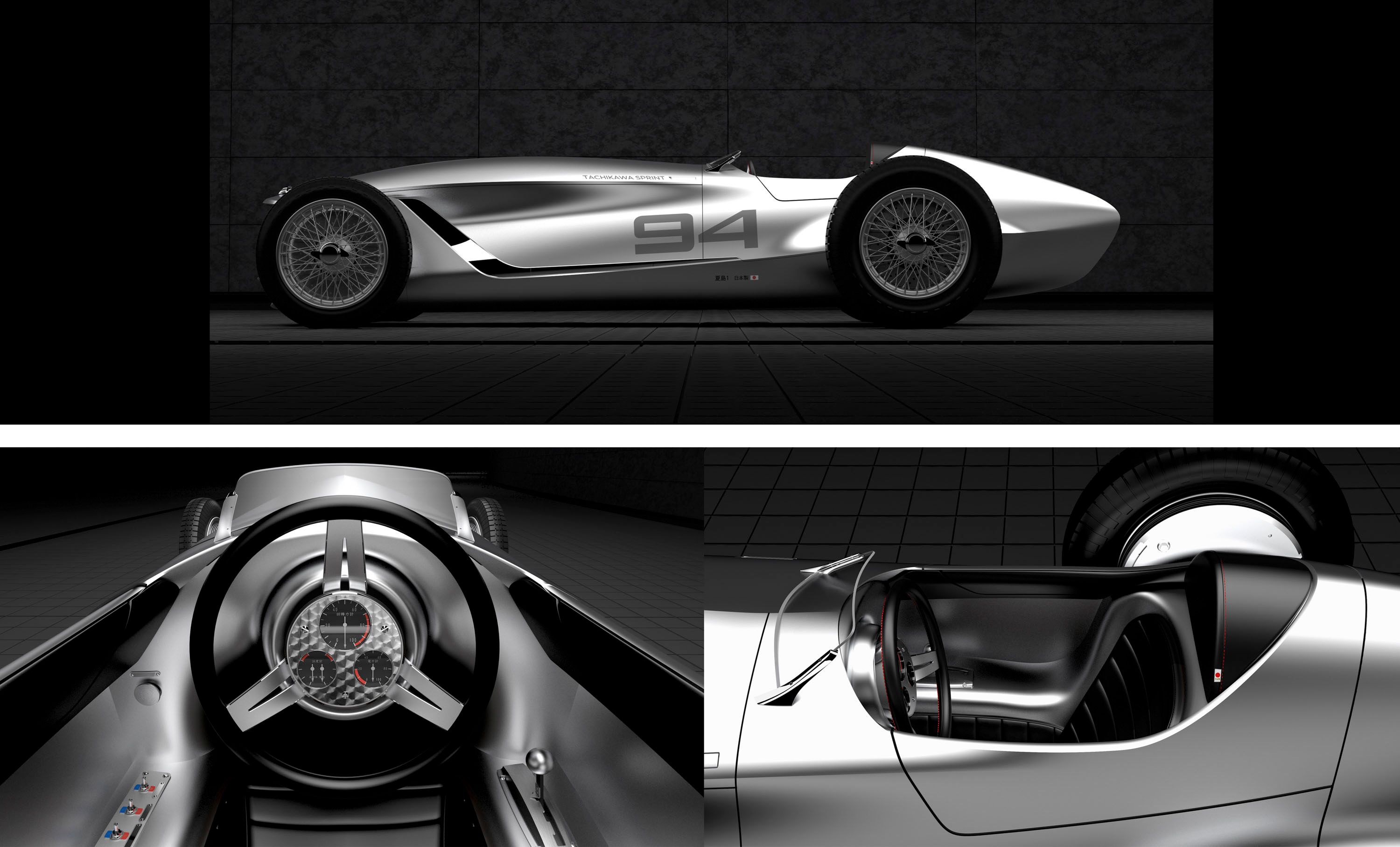
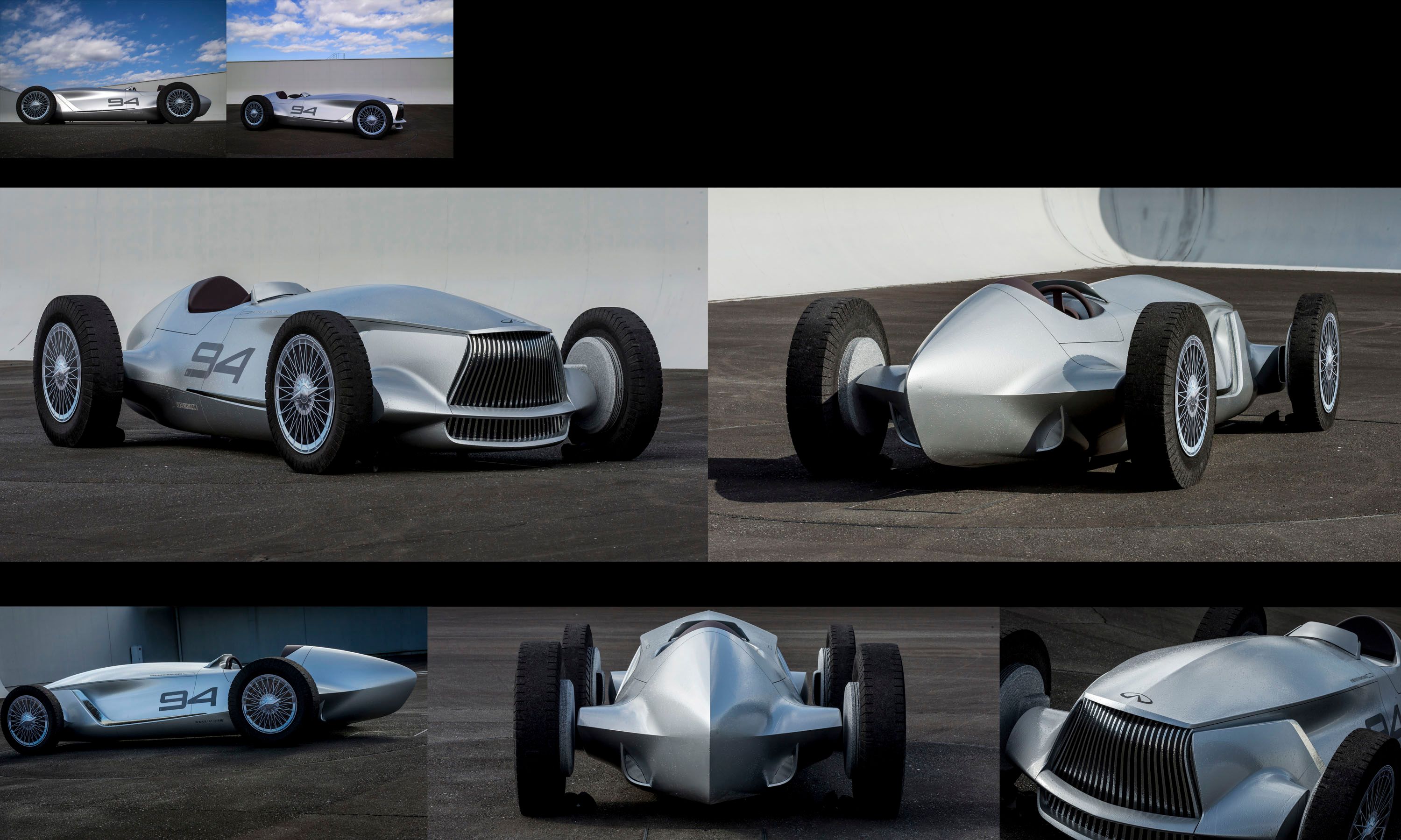
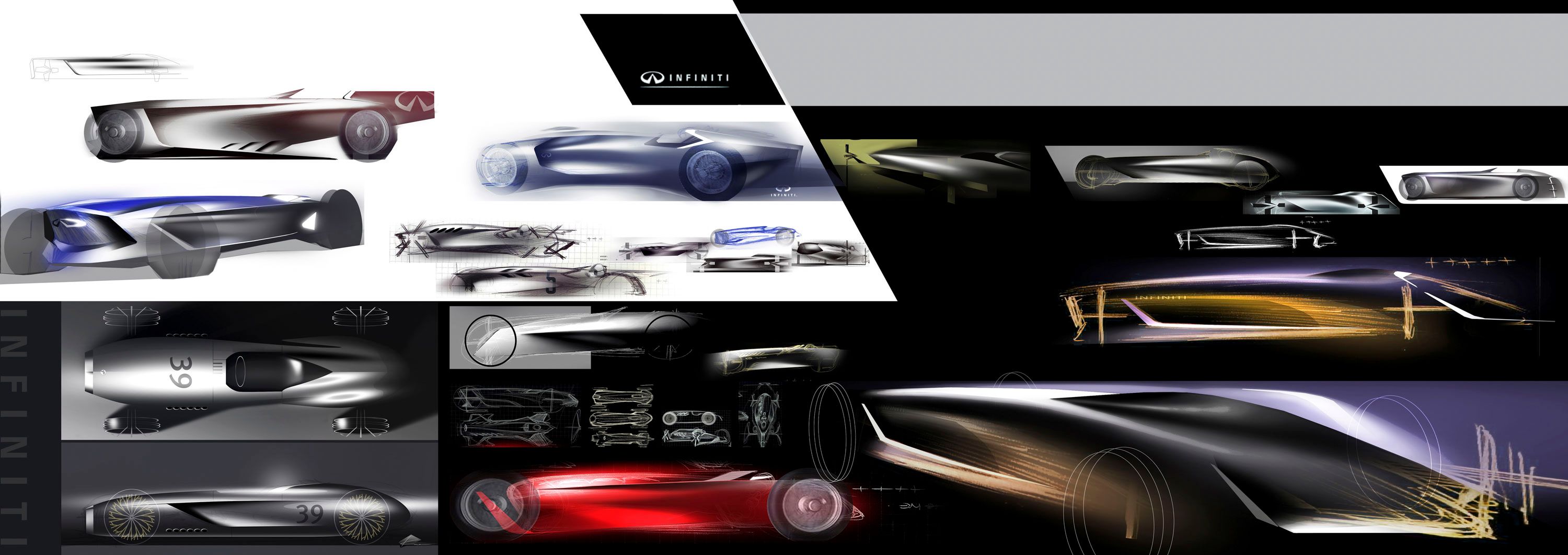
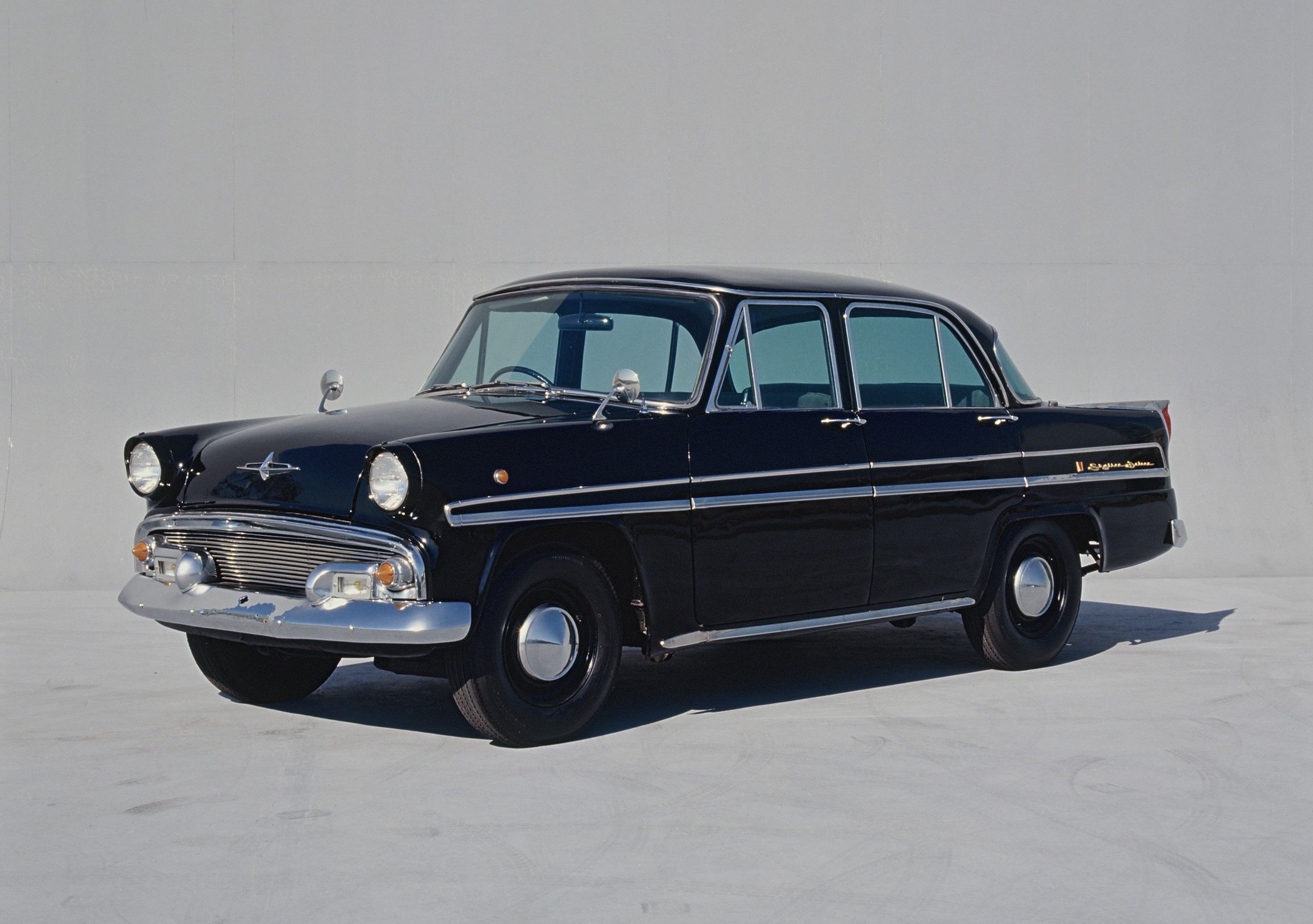
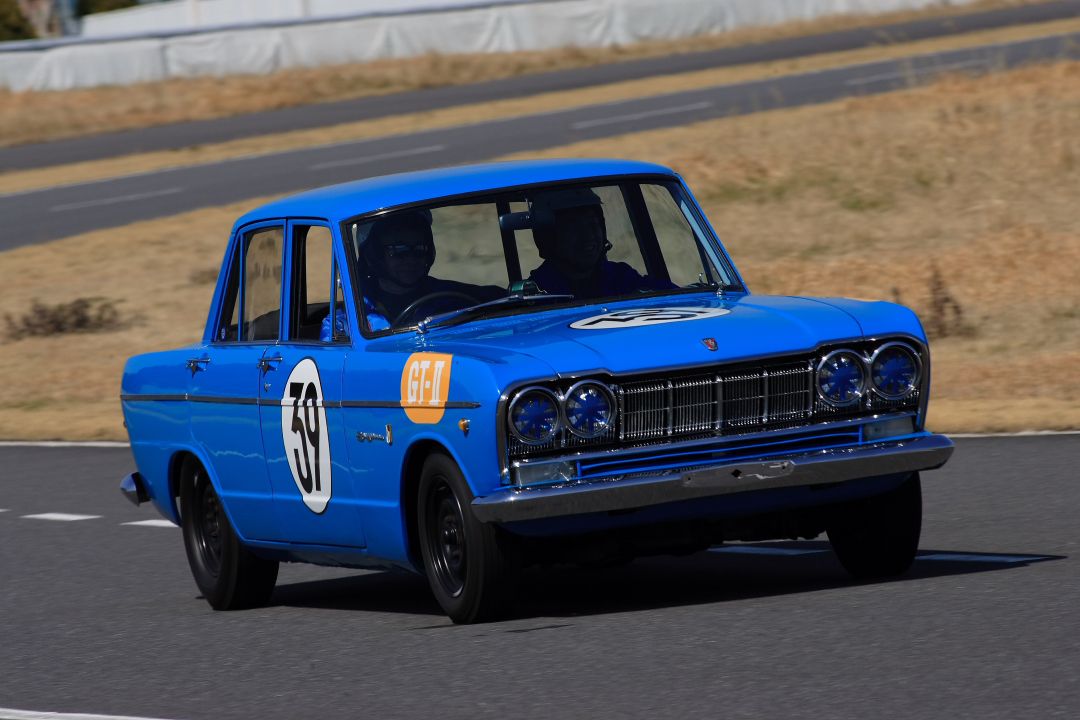
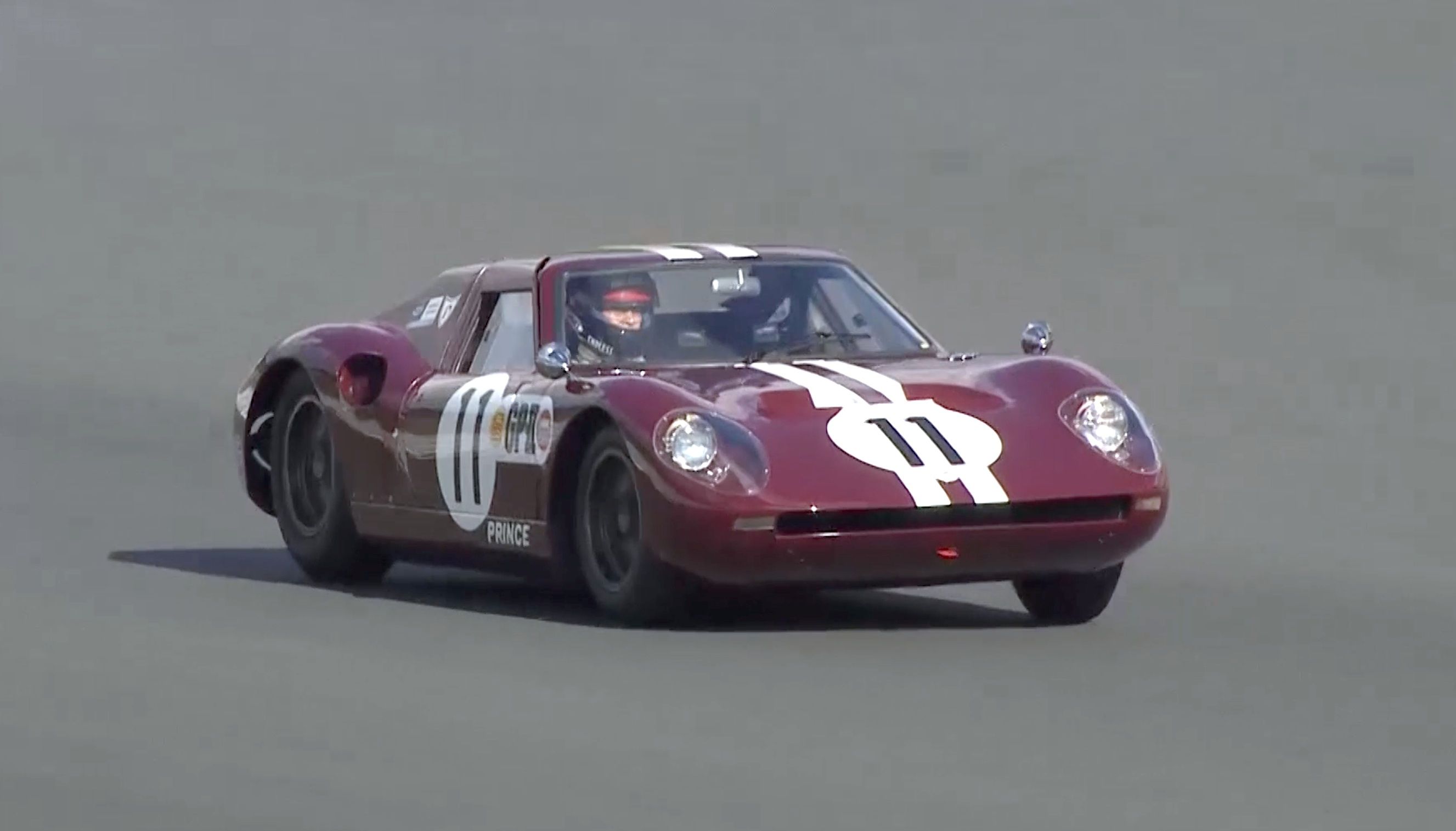
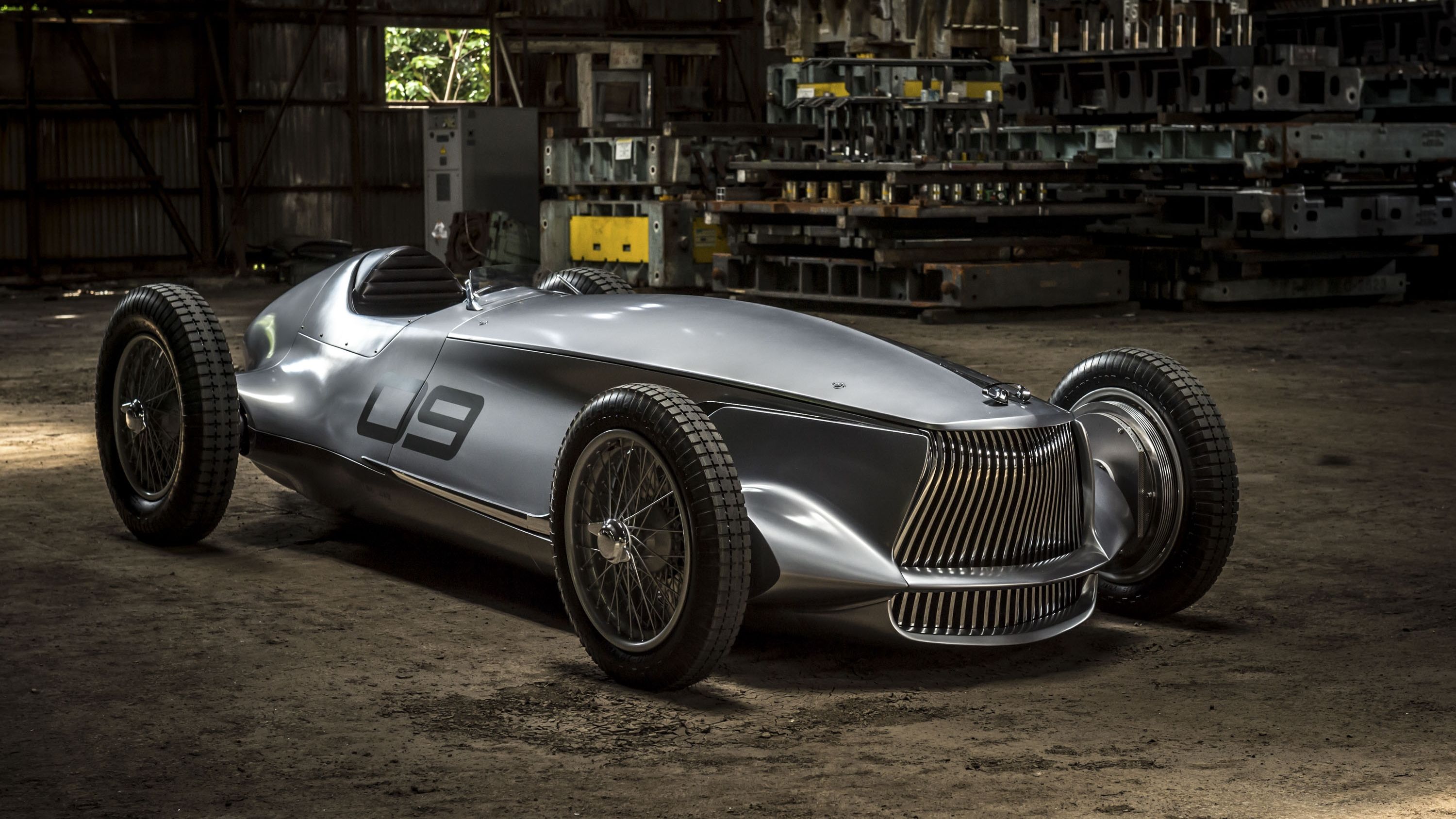
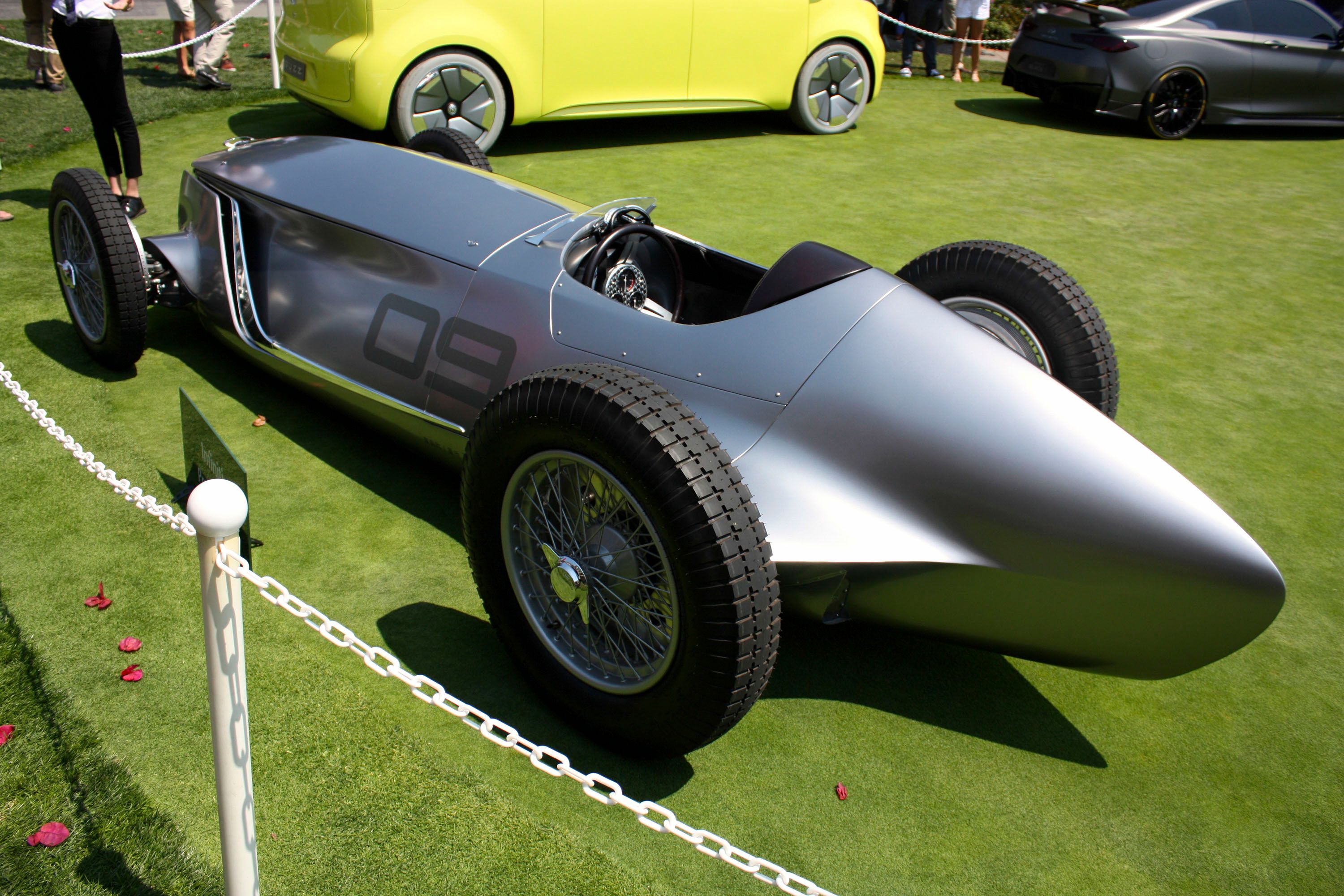
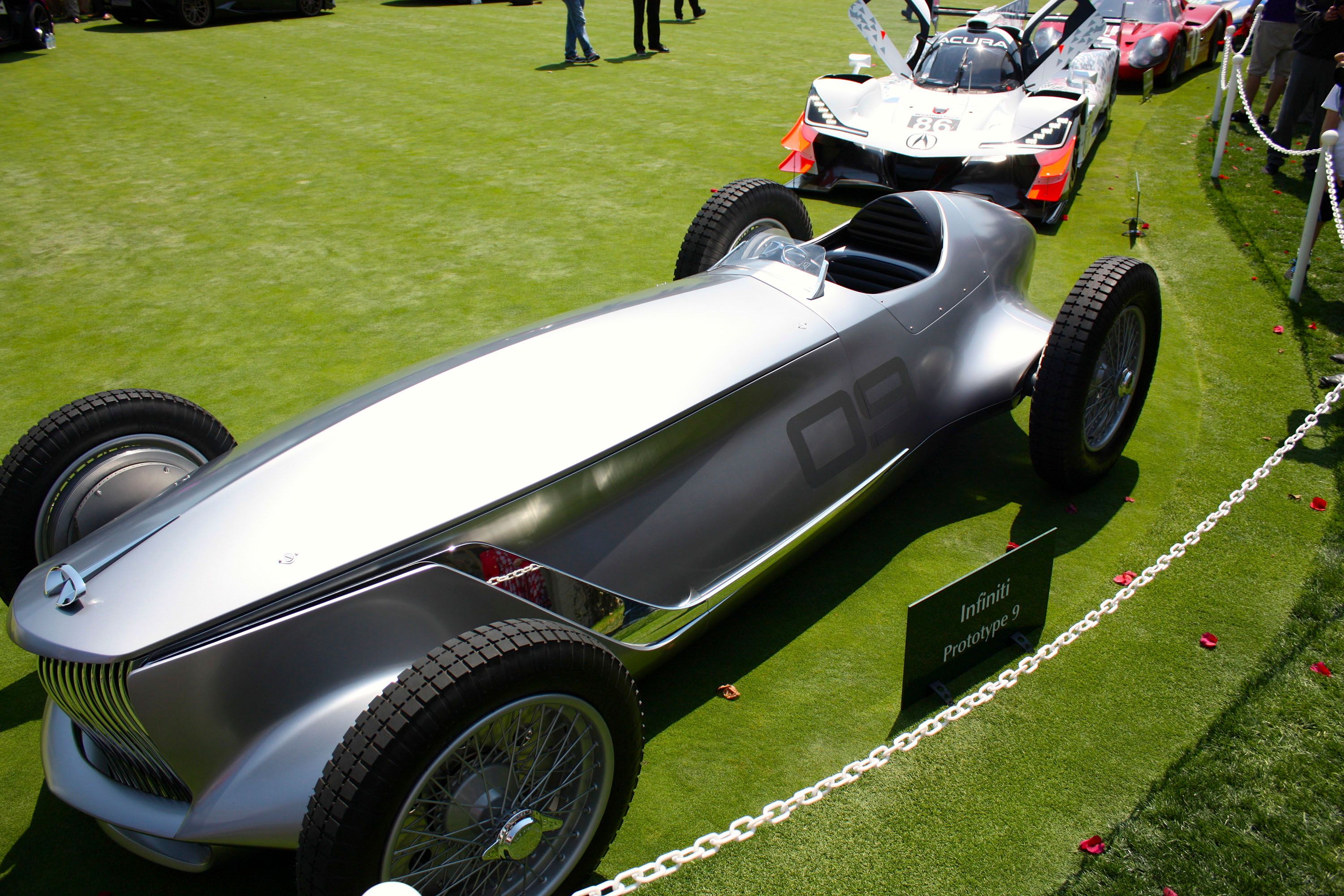
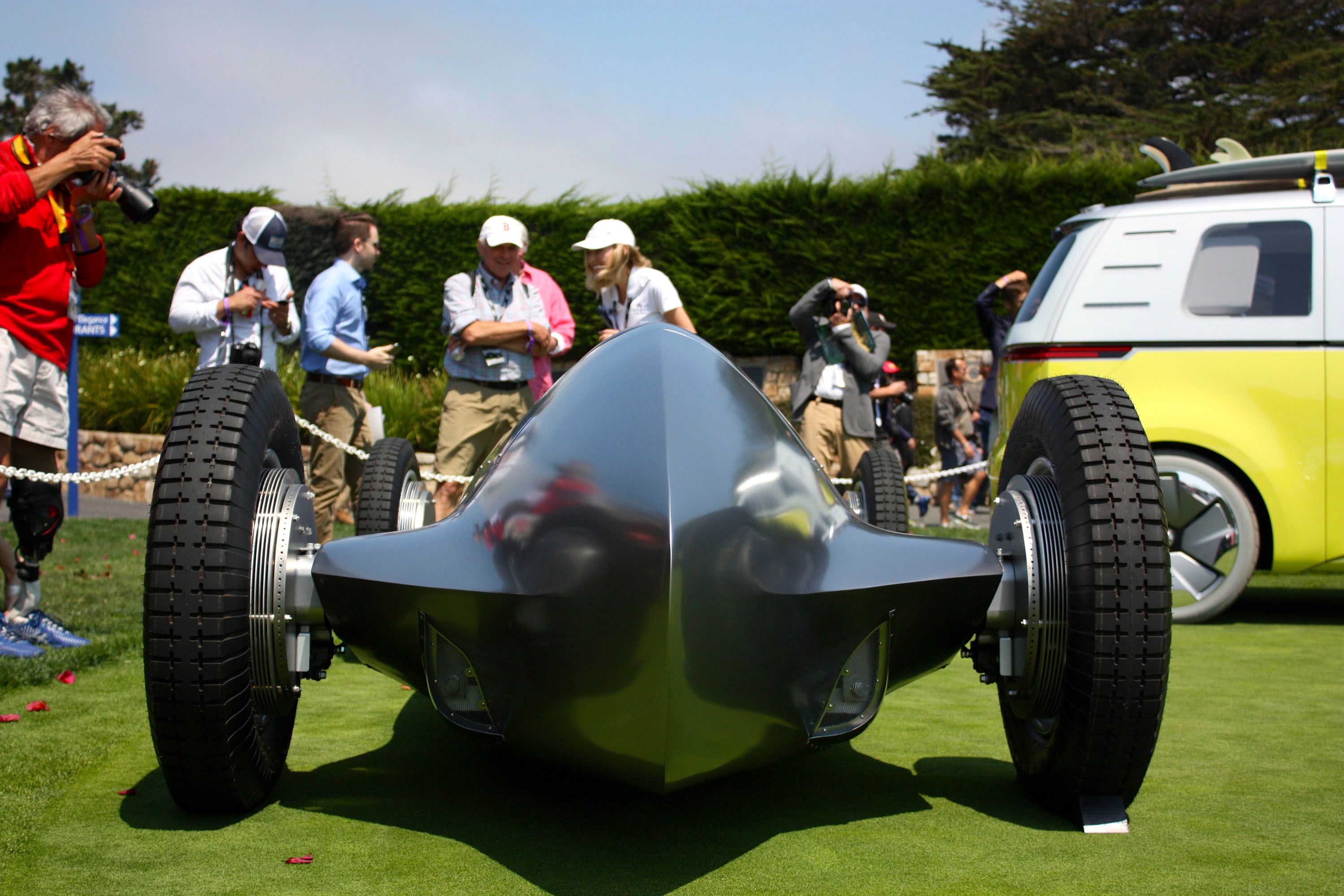
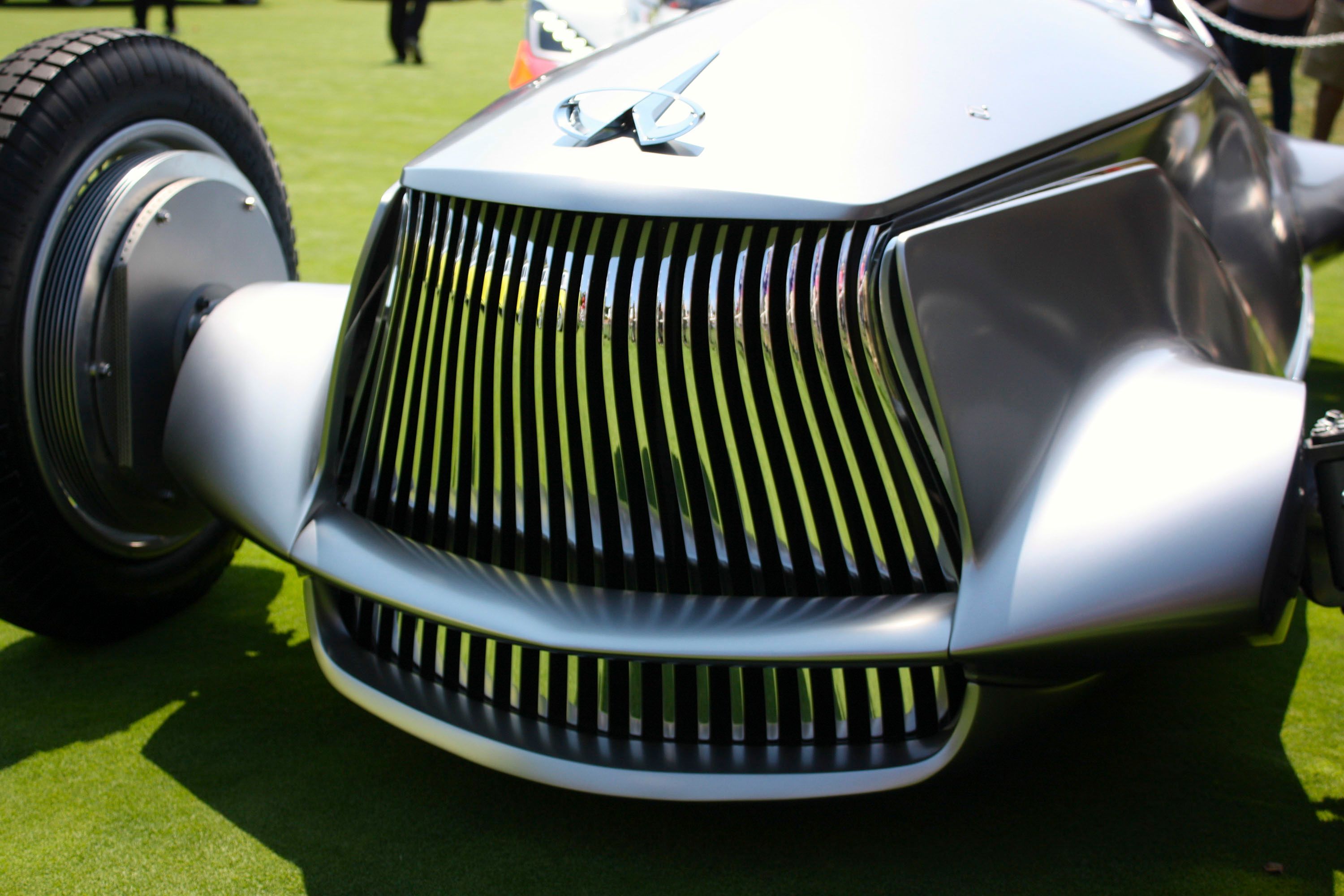
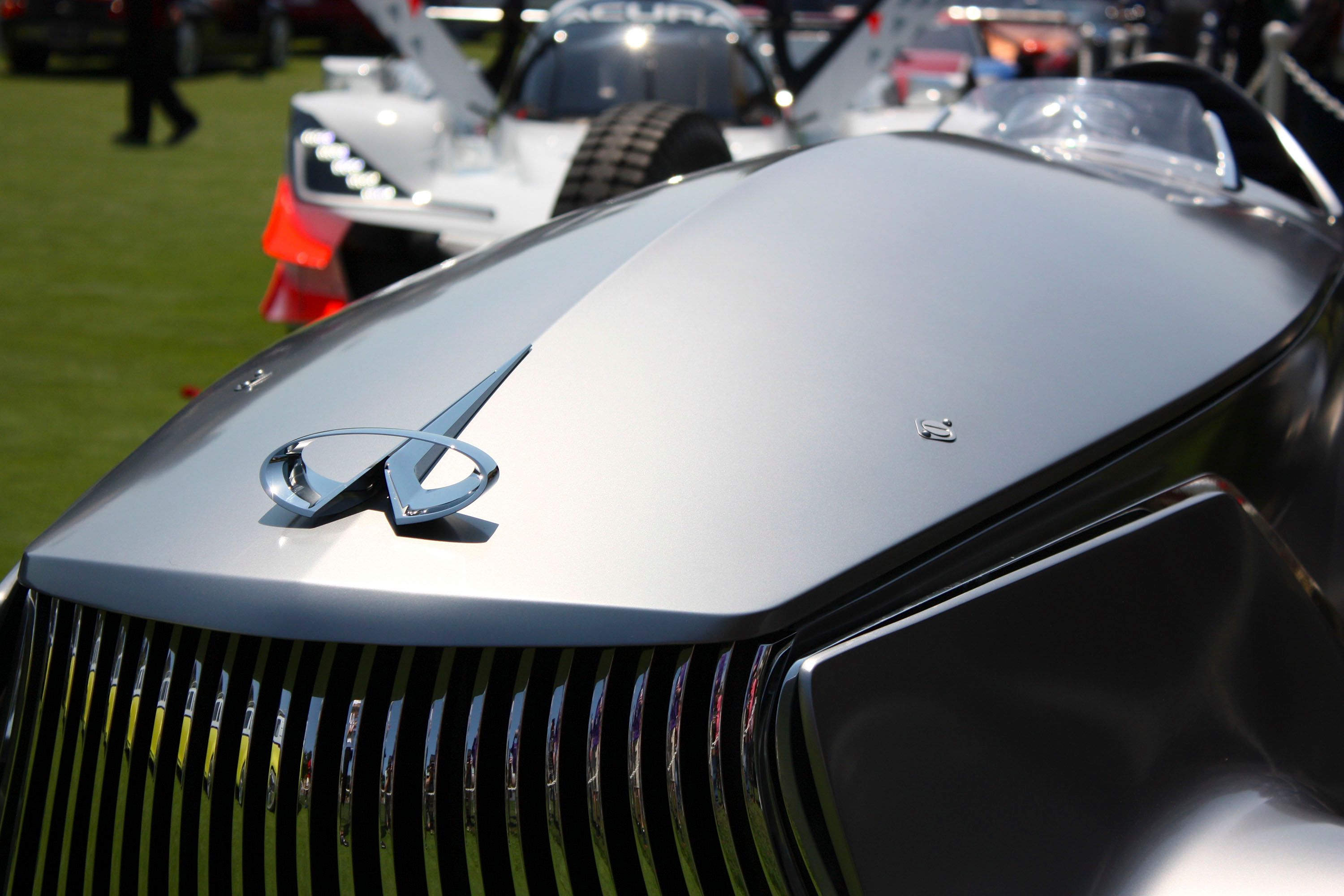
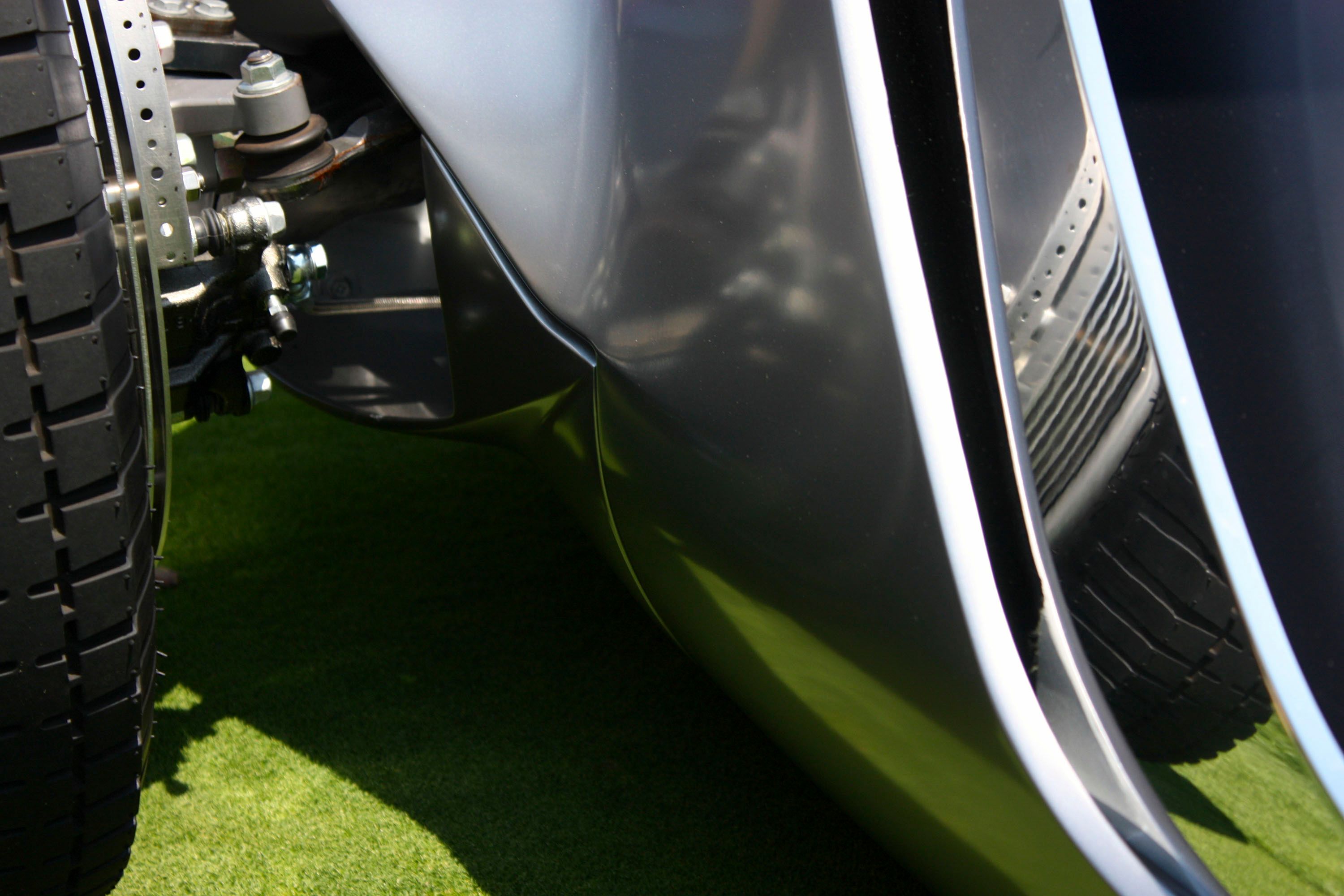
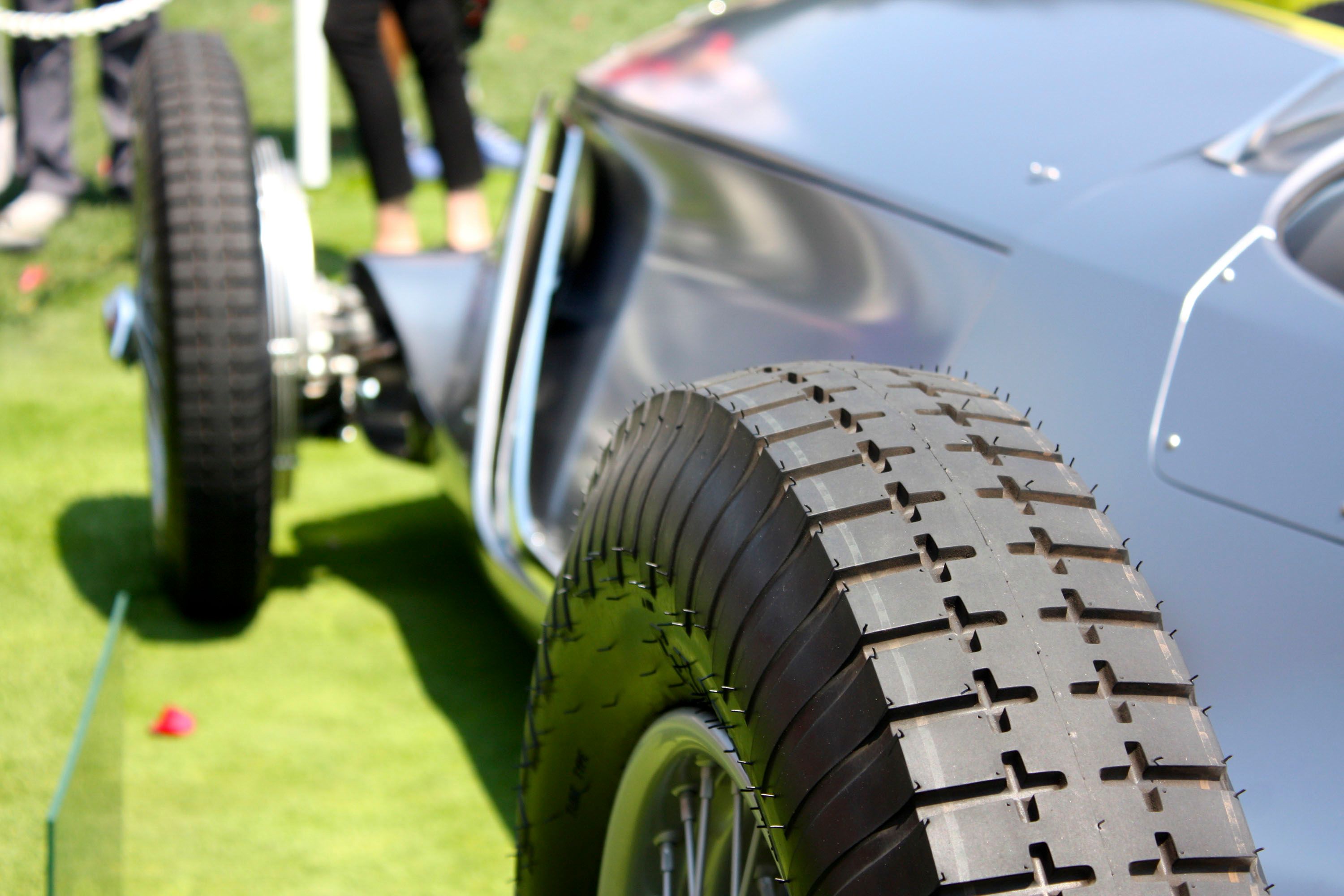
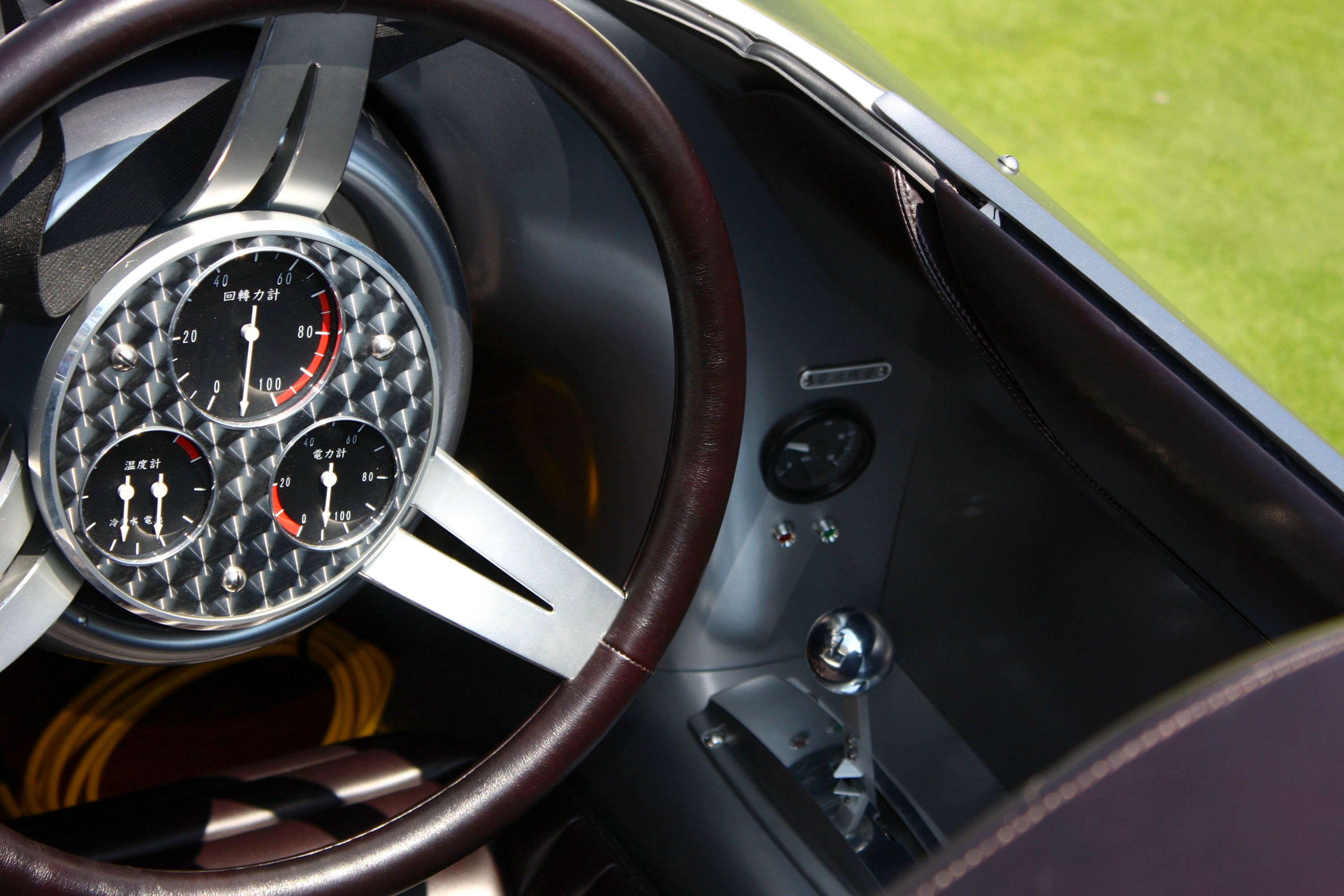
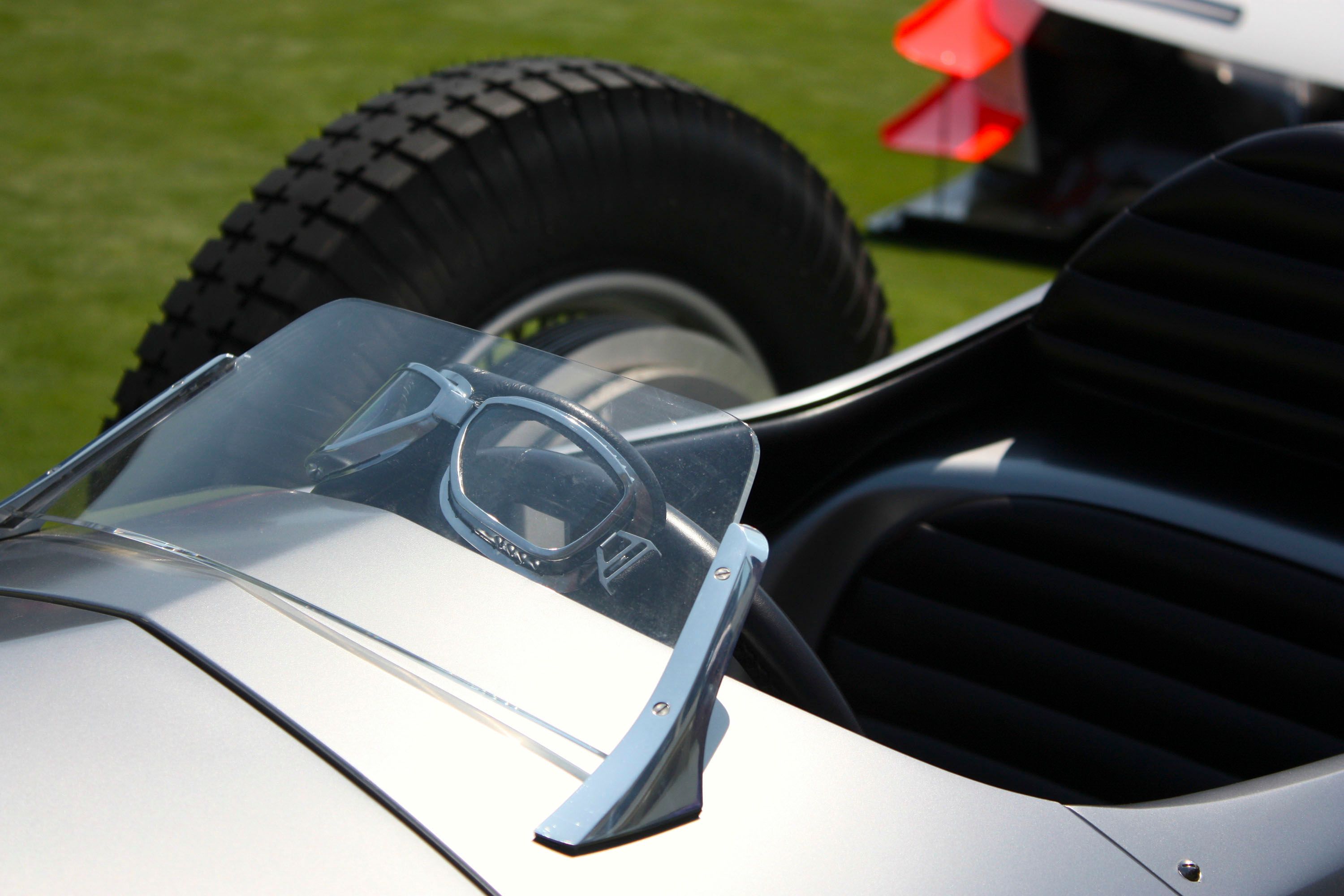
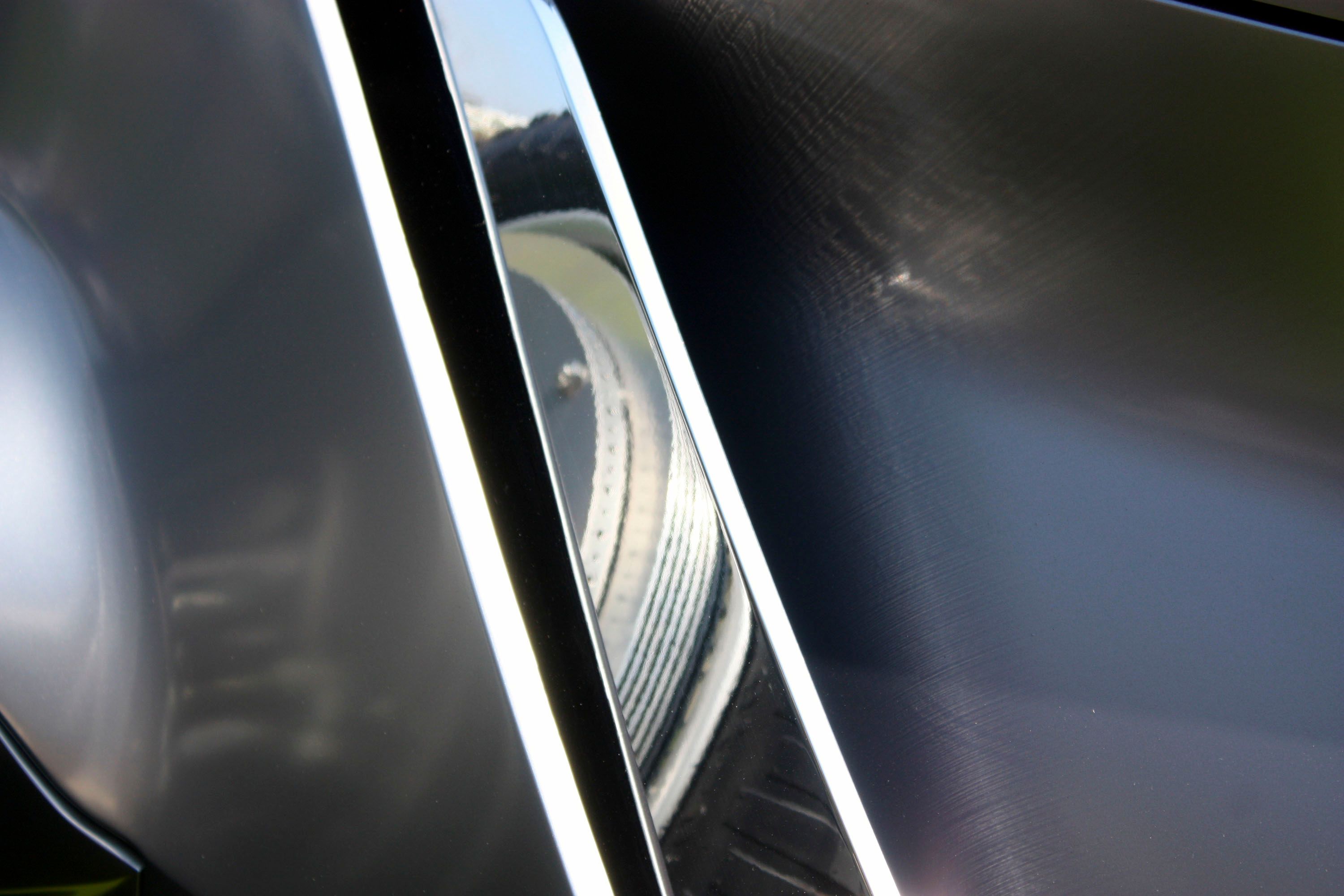
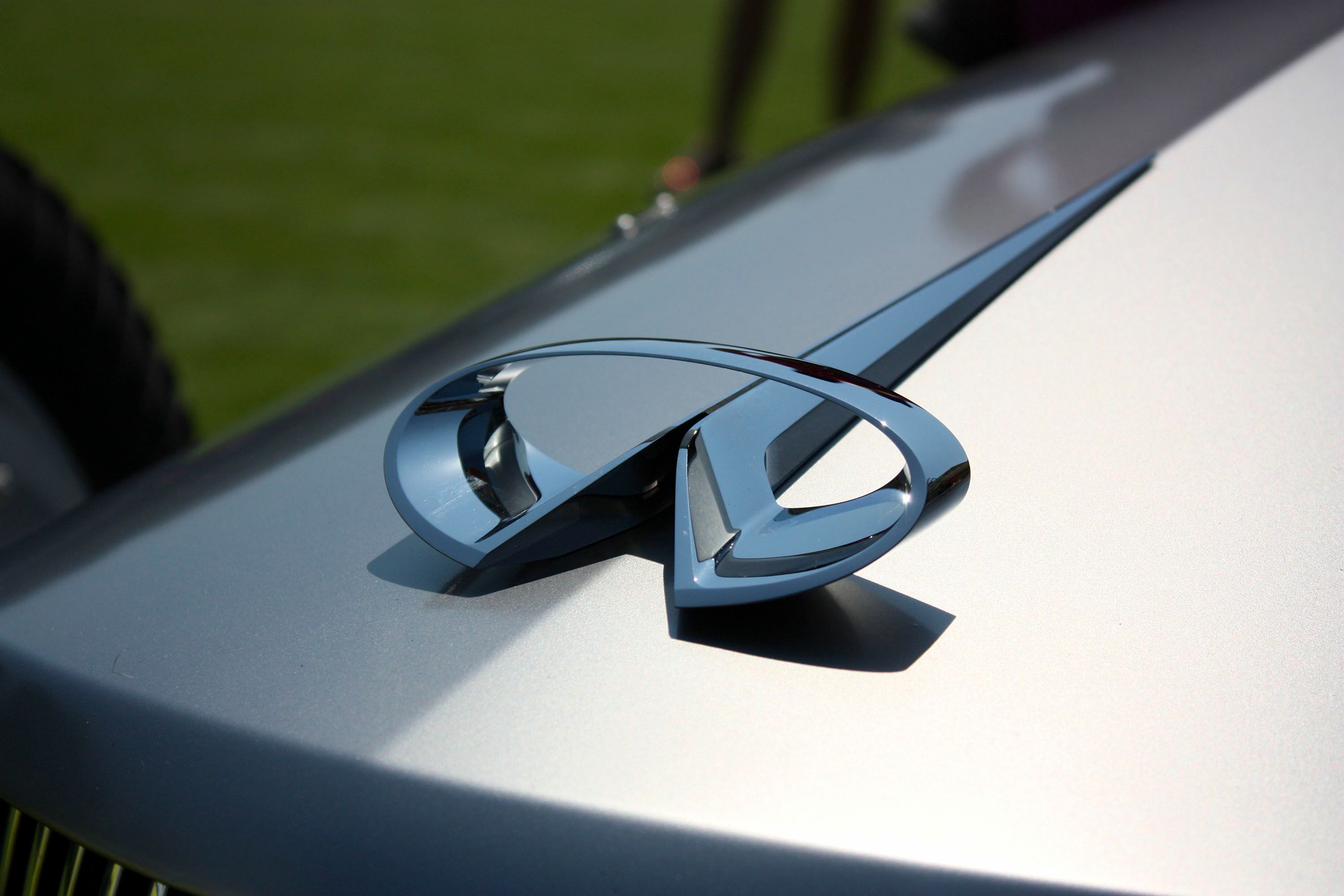
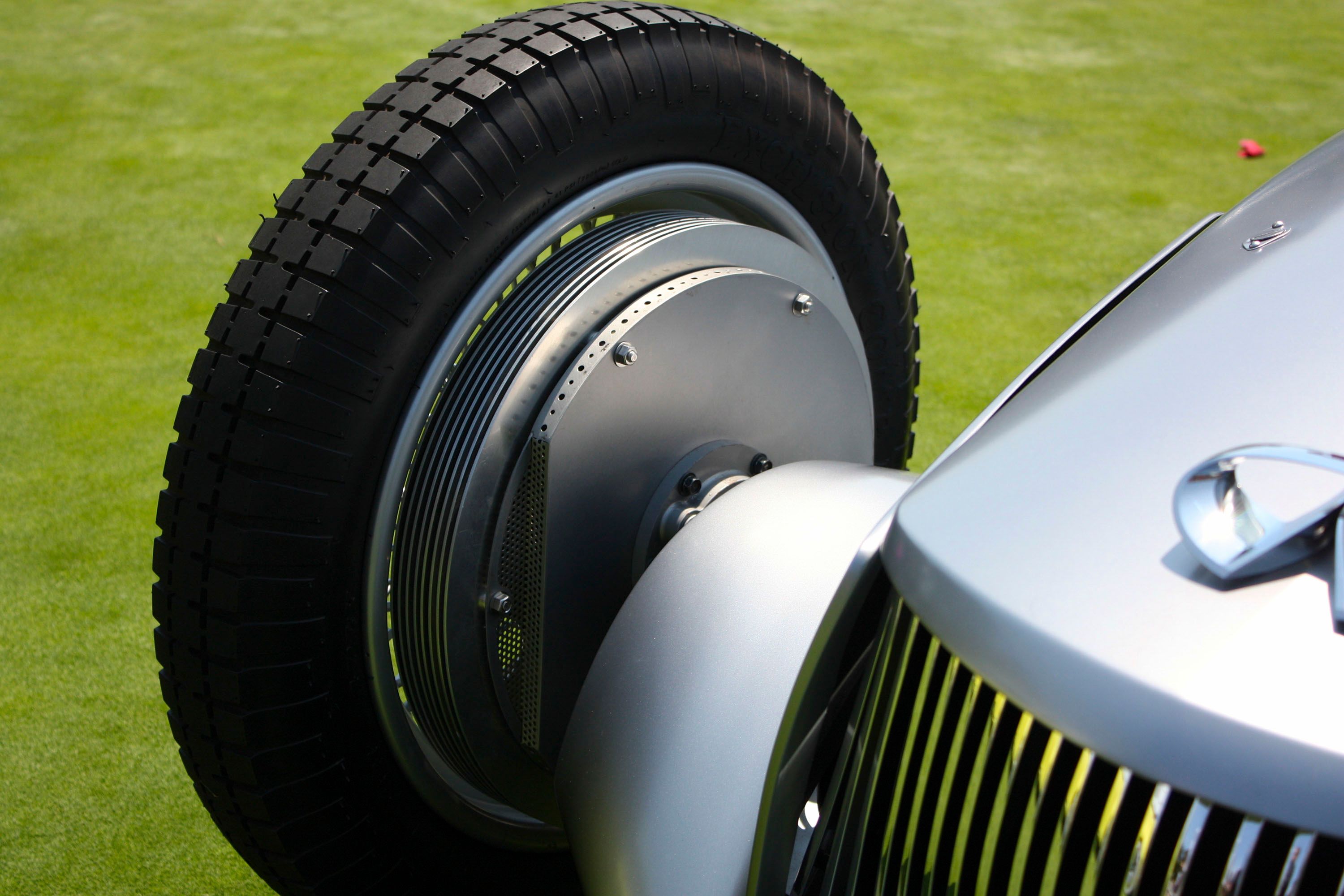
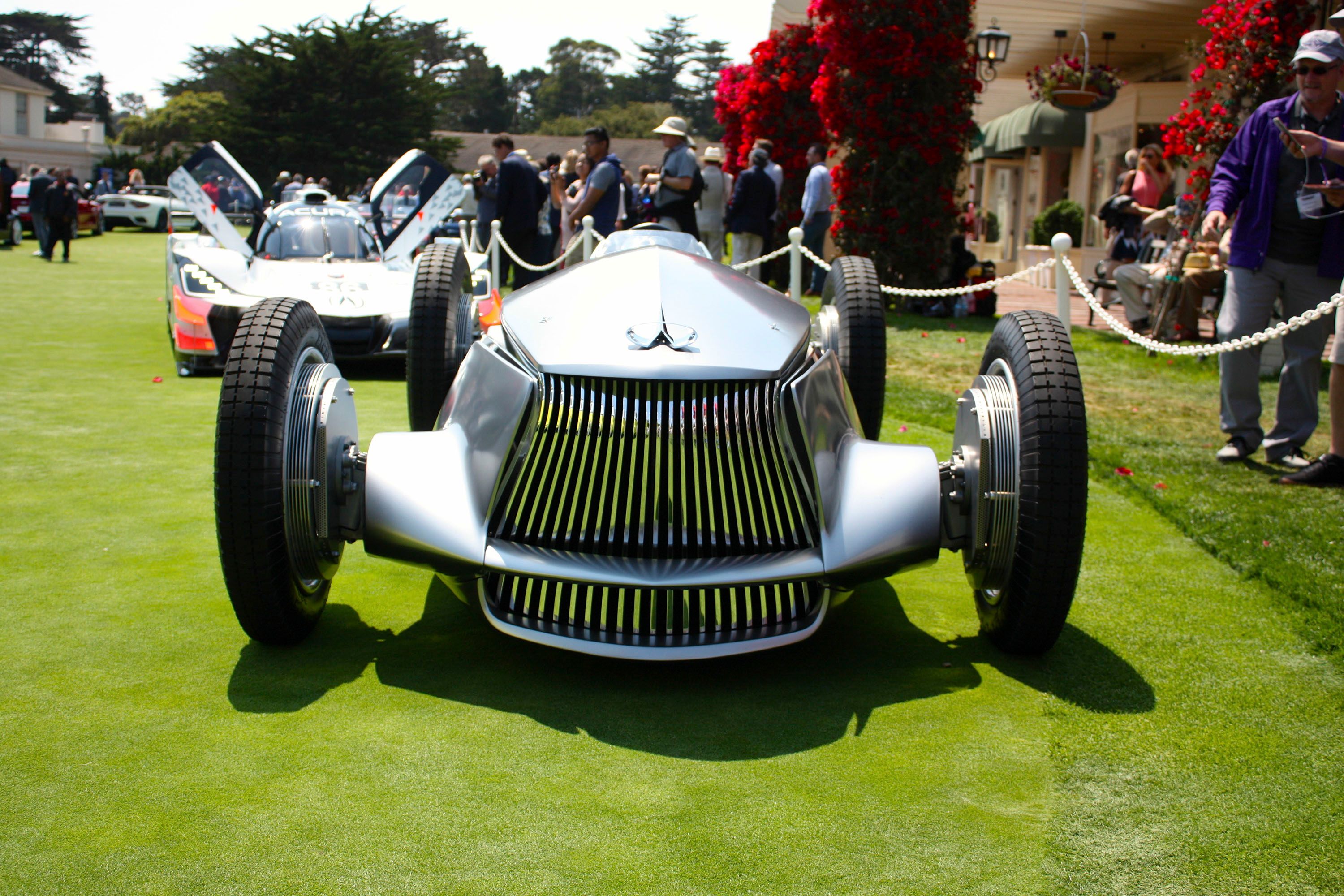
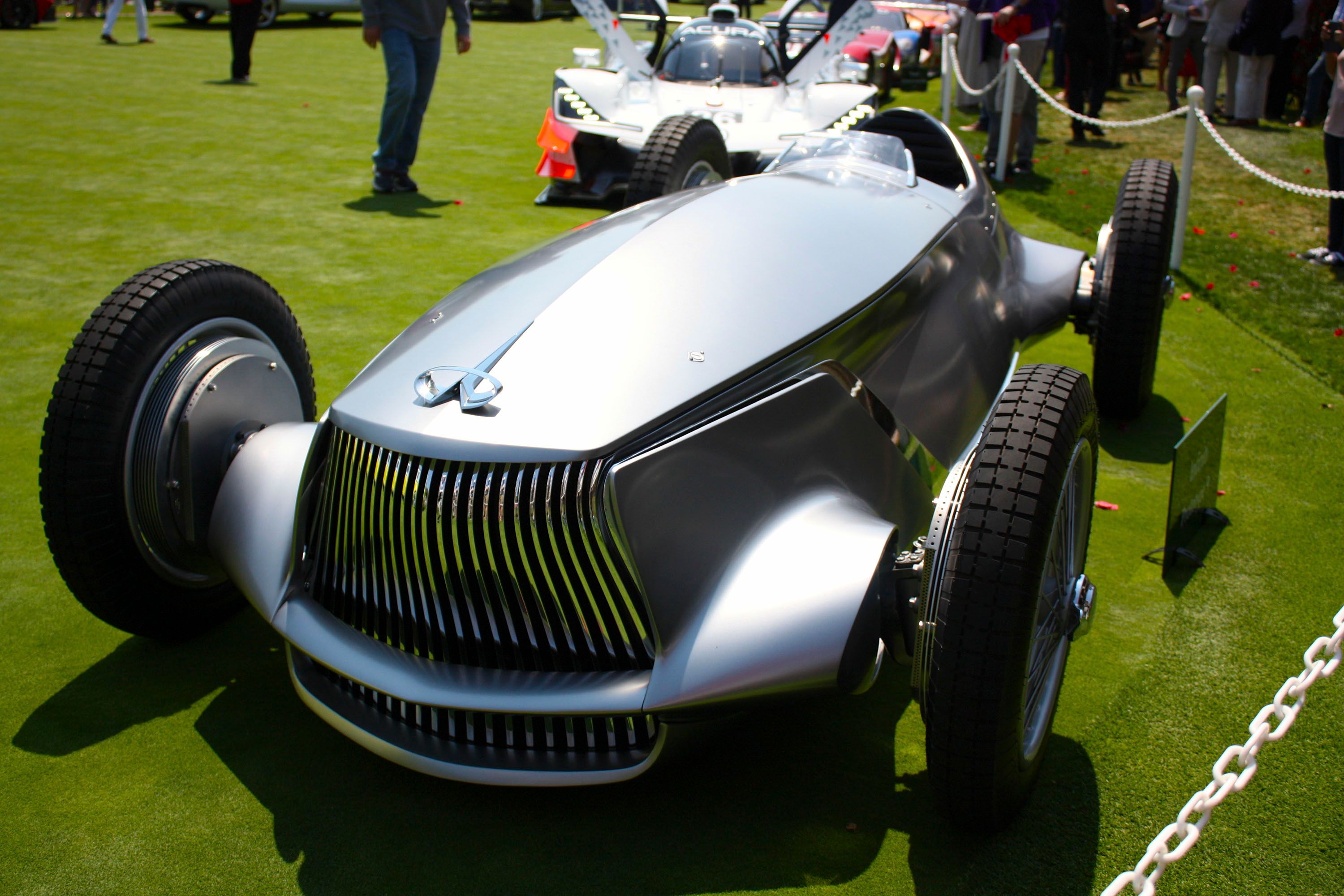
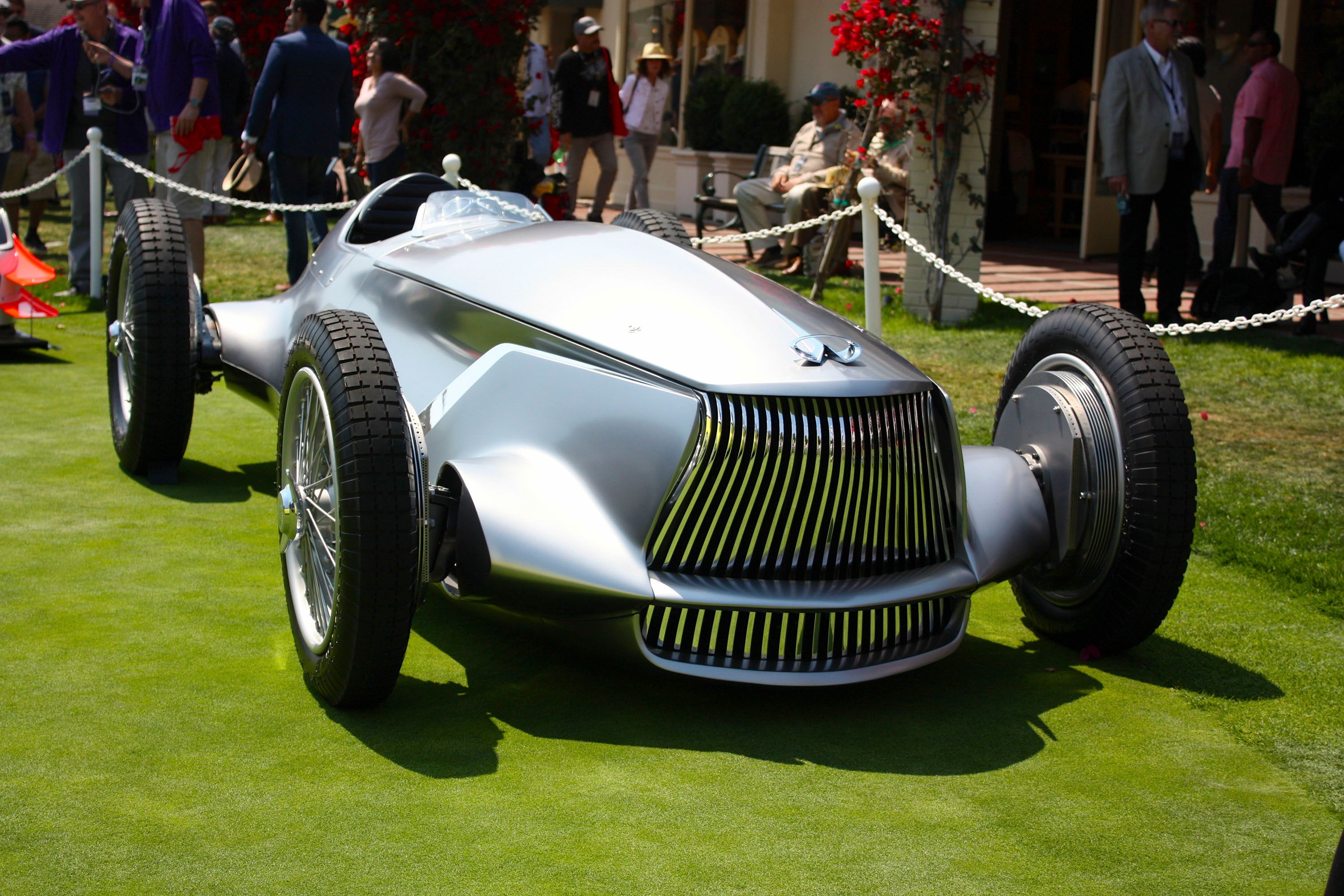
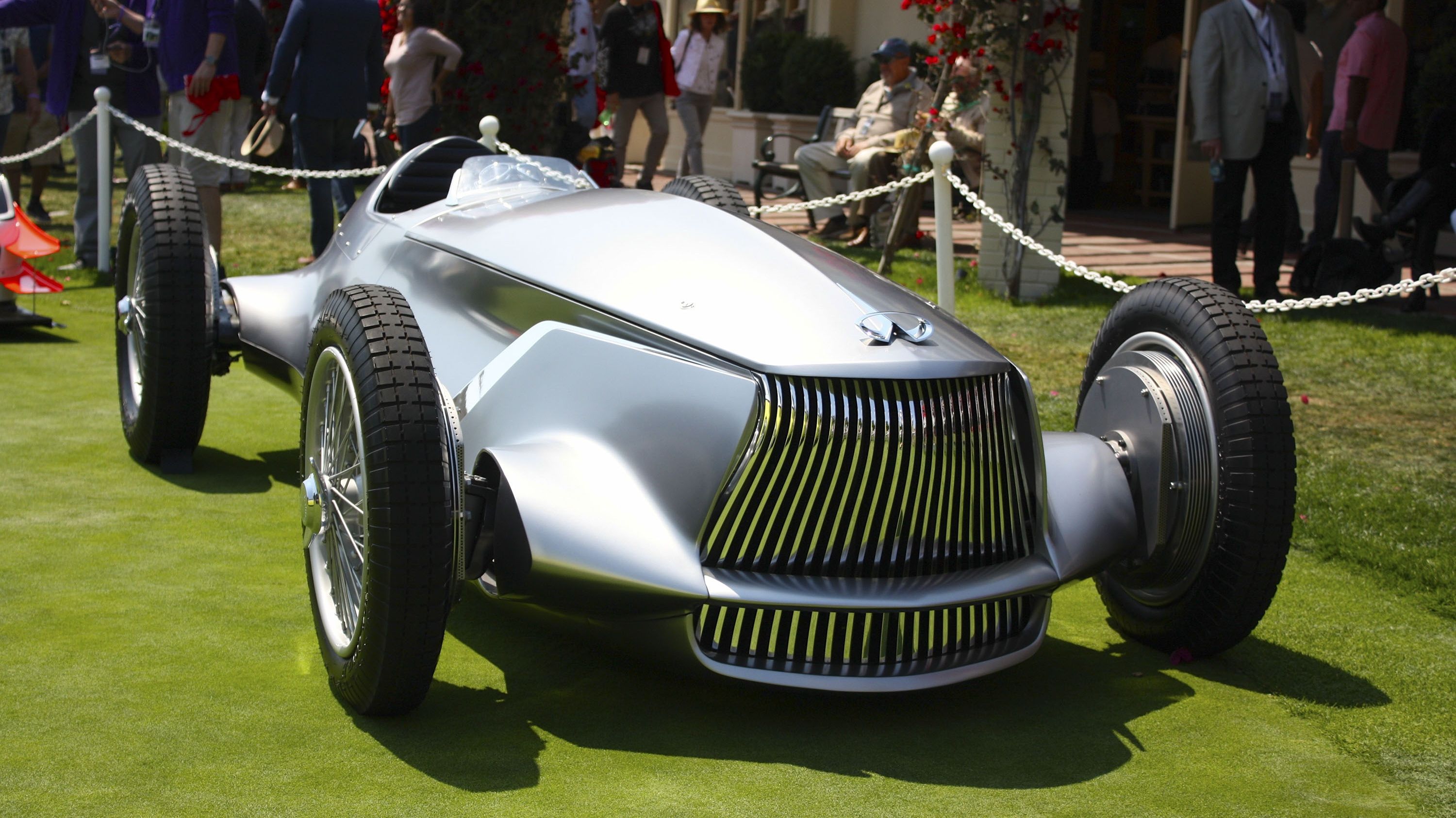
- Make: Array
- Model: 2017 Infiniti Prototype 9
- Horsepower: 148
- Torque: 236
- [do not use] Vehicle Model: Array
The Background
At first glance, the Prototype 9 seems like a useless concept car. It doesn't have a feasible design for the 21st century and it cannot become an FIA-compliant race car either. So, what's the idea behind it? Well, according to senior vice president of global design, Alfonso Albaisa, the Prototype 9 came to life as a sketch of a race car that Infiniti would have built many decades ago.
"If one were to imagine an open-wheeled Infiniti racer on the famous circuits of the era, such as Japan’s Tamagawa Speedway, what would that look like? The sketches were stunning and the idea so compelling that we had to produce a prototype. As other departments became aware of this, they volunteered their time to create a working vehicle," Albaisa said.
The concept car was also inspired by an "emerging era of Japanese motorsport" and the custom-built Prince R380, or Japan's very own Ford GT40. In case you're wondering what's Price got to do with Nissan, the two firms merged in 1966, after 14 years of independence for the former.

More importantly, the iconic Skyline was actually introduced by Price, and not Nissan. The now infamous nameplate came to be in 1957, and the second-generation model was launched in 1963, three years before it gained a Nissan badge. Prince Motor Company is also considered to be Japan’s original builder of premium automobiles, so Nissan is now doing its best to link it to the Infiniti brand.


Note: First generation Prince Skyline and second-gen Nissan Skyline pictured here
Arguably, the biggest influence here comes from a bunch of European race cars from the 1930s, the most famous examples of which are the Mercedes-Benz W25 and W125, and the Auto Union Type C and Type D. These cars had similar designs and were quite popular back in the day, not to mention fast, winning several track and hillclimb events. They were nicknamed the Silver Arrows due to their silver paint and success and some of them brought major innovations to the market. For instance, Auto Union is credited as the first manufacturer to use a mid-engined layout.
Note: Auto Union Type C and Mercedes-Benz W125 pictured here
Exterior

Just like single-seater race cars from the 1930s, the Prototype 9 has an aeronautically-inspired bodywork in bare sheet metal. Hammered into shape by the Takumi, the Nissan craftsman famous for building the GT-R race cars, the concept car is defined by smooth, aerodynamic surfaces, a long engine hood, short overhangs, an open wheel layout, and an exposed cockpit. It definitely looks as if it was design many decades ago, but boasts a lot of modern design features.

For starters, the grille has a more intricate design. While intakes of cars like the Auto Union Type C and Mercedes-Benz W25 were relatively simple, the Prototype 9 has a grille inspired by modern Infiniti design. Whereas the vertical slats are familiar, they have a curved shape that give the grille a wavy appearance. The lower section also integrates some sort of splitter for better aerodynamics.

Above, there's a unique Infiniti badge that would be more appropriate on a luxury vehicle rather than a sports car. However, I must say it looks pretty good on this model. The front hood is also different than those seen on old race cars. While classic vehicles had either a split hood or a larger panel that revealed most of the engine when opened, the Prototype 9 has a modern lid. On the other hand, Infiniti equipped it with quick-release pins for an authentic motorsport look.
On each side of the hood, we can see Z-shaped chrome trim that in some way mimics the old design of side-exiting exhaust pipes. Around back, while the boat-tail design is far from new, the body work is much crisper than on vintage sports cars. More notably, the vehicle doesn't feature exhaust pipes, which aren't needed on a pure electric car.
But, other than this, the Prototype 9 is as vintage as it gets. The large wheels have multiple wire spokes, and central locking nuts, no fenders, and the brakes are shaped like old drum brakes. Other vintage details include the small, tilting windscreen, the tires, and the riveted body panels. Needless to say, the Prototype 9 would find its place among 1930s race cars at a classic motorsport meeting.
Exterior Dimensions
|
Length (Inches) |
170.5 |
|
Width (Inches) |
71.7 |
|
Height (Inches) |
35.8 |
|
Ground clearance (Inches) |
2.5 |
|
Wheelbase (Inches) |
106.3 |
|
Track front/rear (Inches) |
61.0/61.8 |
Interior

Infiniti didn't provide detailed photos of the interior, but it's safe to assume that, given the single-seat configuration and the car's motorsport purpose, there's nothing much to see. The old cars barely had any room for the gear and the driver in there, so convenience features weren't even considered and Infiniti remained true to that design. However, the firm did say that the seat and some other surfaces are wrapped in black leather and contrasting red stitching, while the headrest features subtle Japanese flags.
An interesting feature is the steering wheel, which rotates around a fixed central hub that houses the driver's instrument gauges. The hub is finished in turned aluminum, an effect seen on aircraft in the first half of the 20th century, as well as many race cars before World War II. The cockpit includes minimal switchgear due to lack of space, but this is exactly what made 1930s race cars special. They were no-nonsense machines built for fast laps and comfort was sacrificed over performance.
Drivetrain

Although the single-seater race cars built by Mercedes-Benz and Auto Union had big engines under the hood, the Prototype 9 uses an electric drivetrain. It might seem like a weird choise, especially to purists, but it's what you should expect from a modern vehicle like this. Massive V-12 and V-16 engines are no longer used in motorsport nowadays, and it's more than fitting for a new concept to feature an EV drivetrain.
Infiniti didn't share too much info, but did say that the race cars uses a "next-generation EV powertrain which looks squarely to the future." The firm also described it as "an excellent example of the ingenuity, craftsmanship and entrepreneurism."

Developed by Nissan Motor Corporation’s Advanced Powertrain Department it uses traditional materials and techniques applied for the Prototype 9’s manufacturing process, including panels hand-beaten by a team of Takumi. The juice comes from a 30-kWh, high-voltage battery paired with a prototype electric motor. The latter has yet to be offered in a production model, but it could find its way in Infiniti's first-ever EV in the near future.
The unit produces 148 horsepower 236 pound-feet of torque, and it drives the rear wheels via a single-speed transmission. Granted, it's not very powerful for a race car and lacks the AWD capability of some production electric cars, but it returns decent performance. The Prototype 9 needs 5.5 seconds to hit 62 mph from a standing start, on its way to a top speed of 105.6 mph. The maximum EV range is rated at 20 minutes of heavy track use. This unit is definitely not suited for a production model in this form, but Infiniti is probably already working higher mileage, higher performance version.
Drivetrain Specifications
|
Powertrain |
Lithium-ion battery with electric motor |
|
Battery type |
Lithium-ion |
|
Max power (motor) |
148 HP |
|
Max torque |
236 LB-FT |
|
Transmission |
Single-speed |
|
Drivetrain |
Rear-wheel drive |
|
Suspension and steering |
|
|
Front |
Leading-arm rigid axle with transverse leaf spring |
|
Rear |
De Dion axle with transverse leaf spring |
|
Steering |
Non-power assisted |
|
Dampers |
Hydraulic rotary type |
|
Top speed, kph (mph) |
170 (105.6) |
|
Acceleration, 0-100 km/h |
5.5 secs |
|
Vehicle weight |
1,962 LBS |
Conclusion

While some concept cars are exotic in the sense that they take a deep look into the future in terms of design and technology, the Prototype 9 is unique in a very special way. And while Infiniti isn't the only automaker that has conceived a concept car based on a vintage design, this pre-War, single-seater idea has yet to be explored until now. The fact that it comes from a Japanese automaker makes it that much more impressive. The Prototype 9 is a fresh take on classic designs and will most certainly impress race car enthusiasts that know a thing or two about the Silver Arrows of the 1930s. However, it should also serve as an example of how old design can be reinterpreted in a simple yet fresh, modern way.

